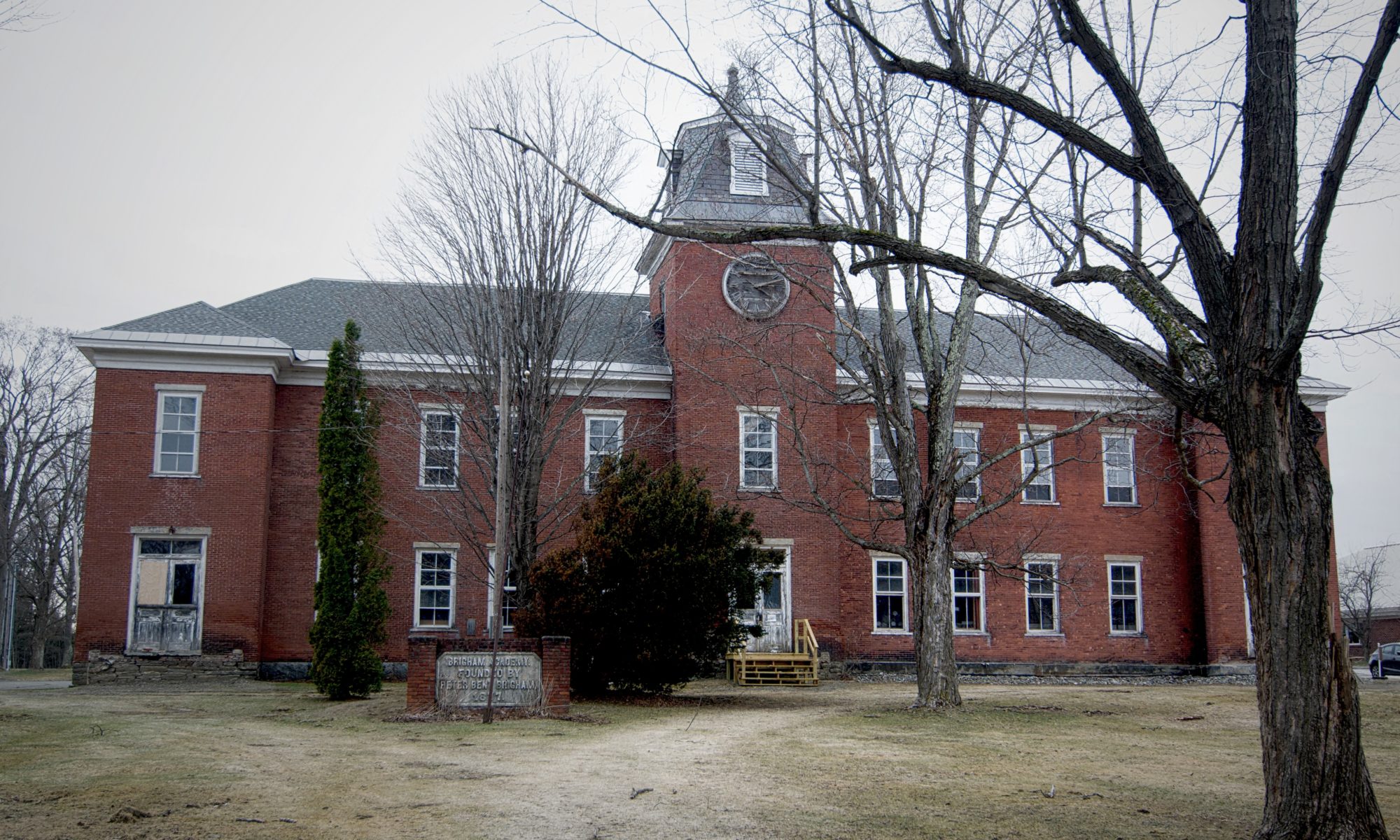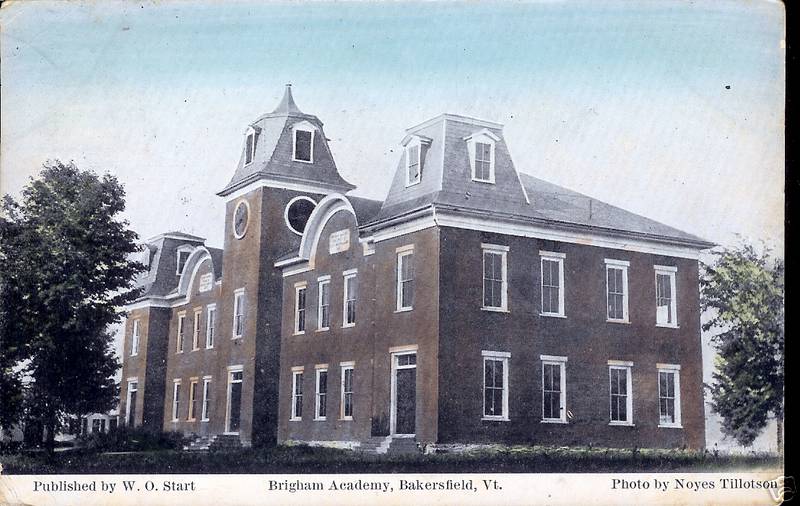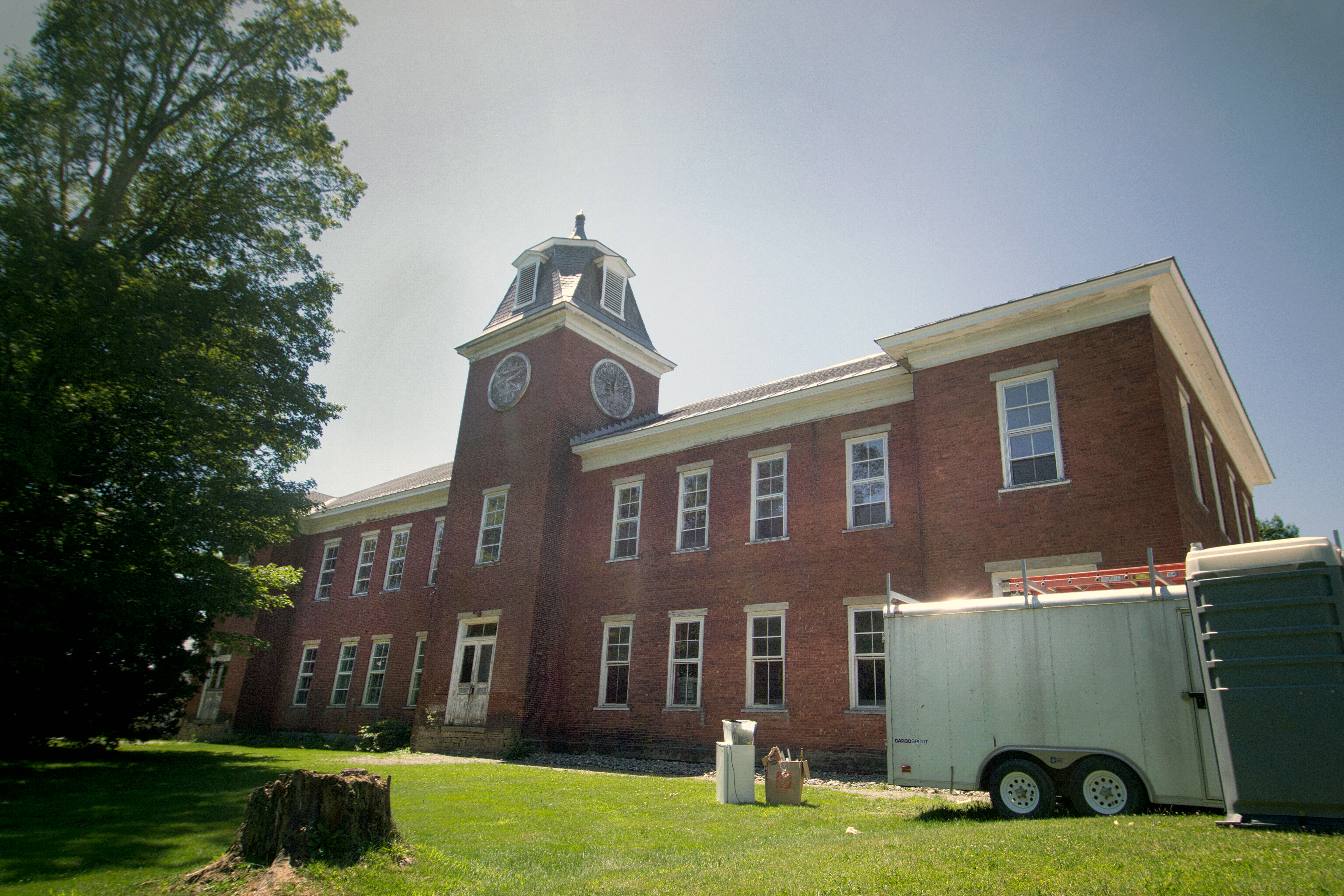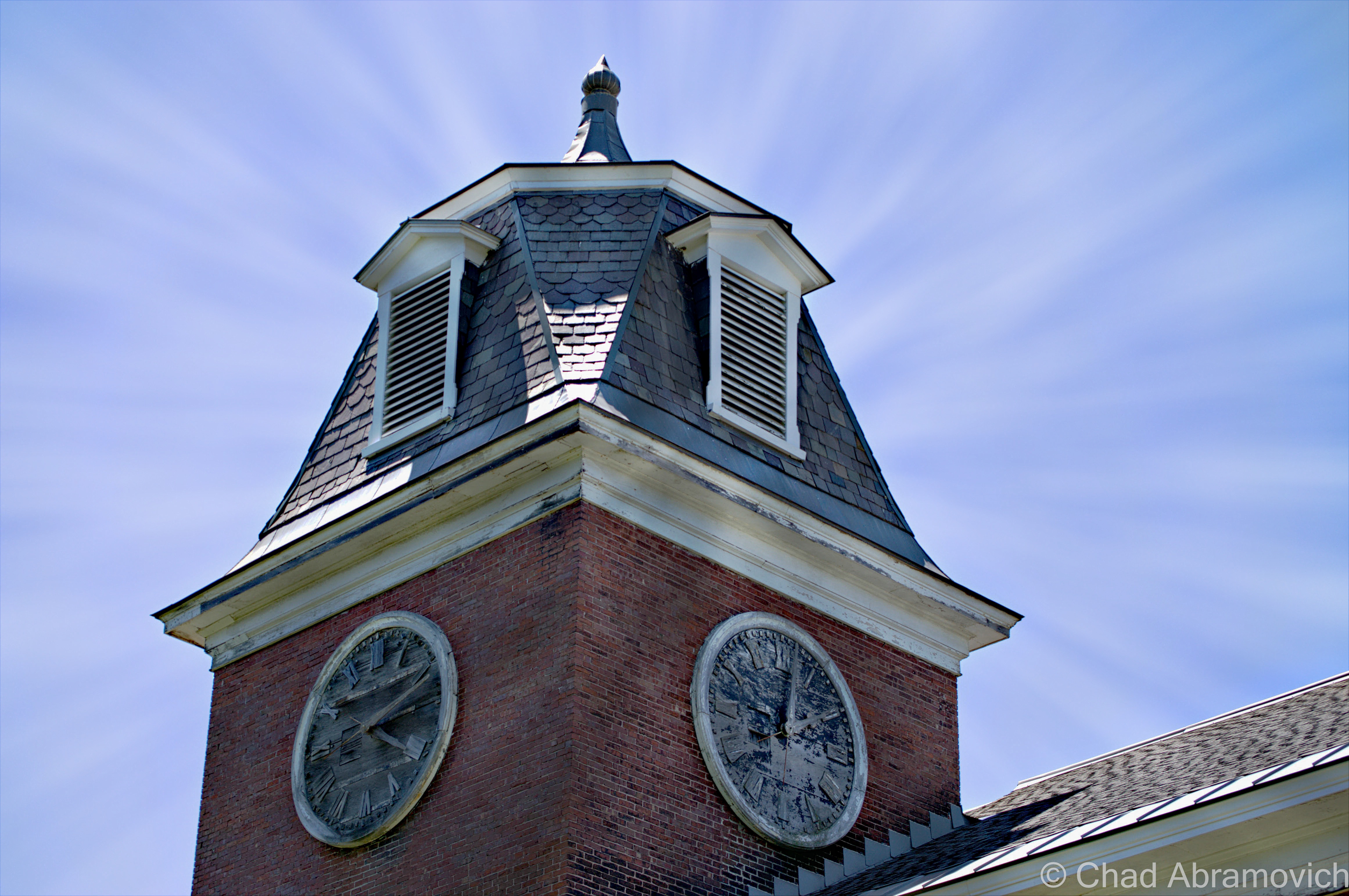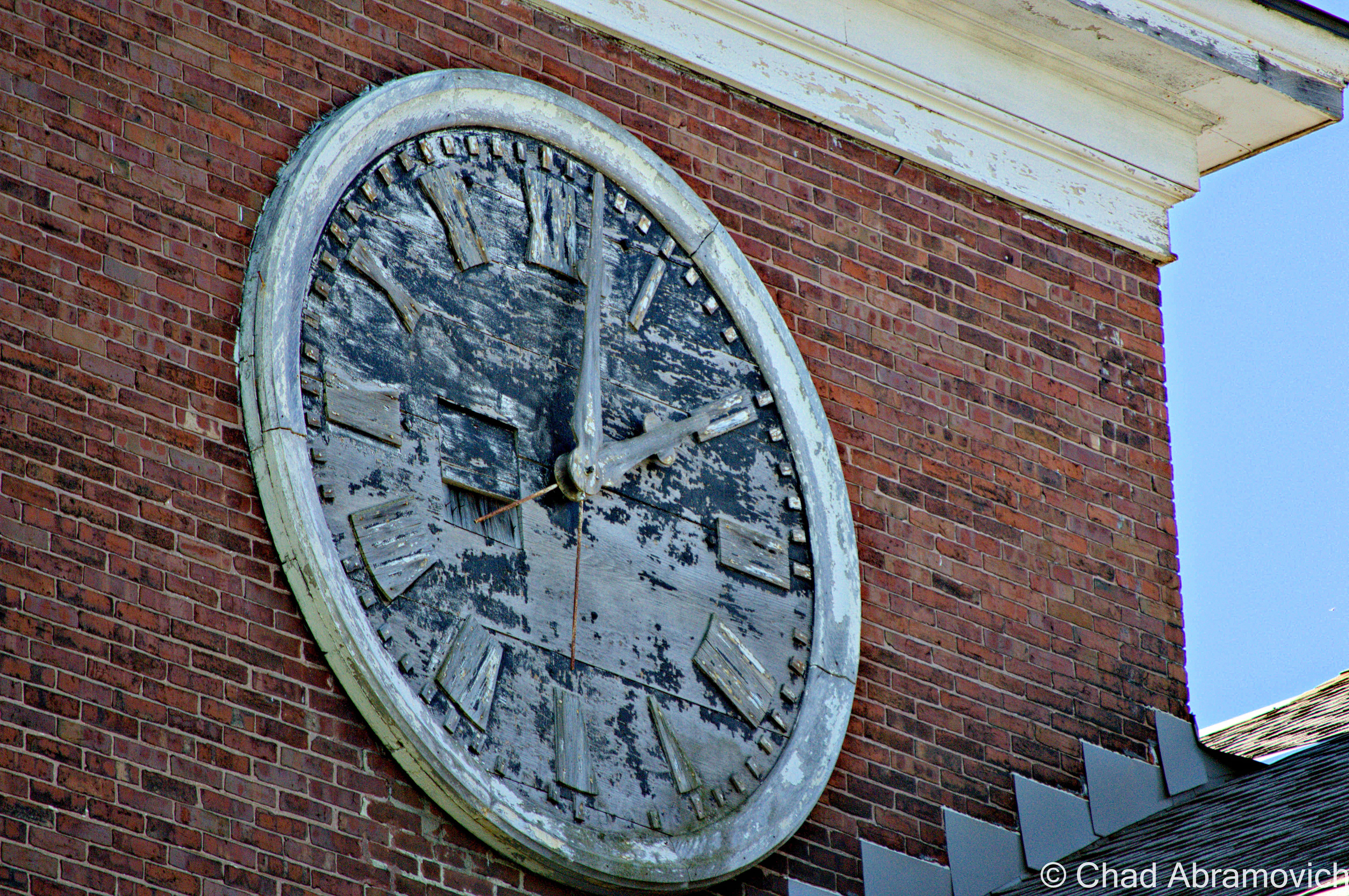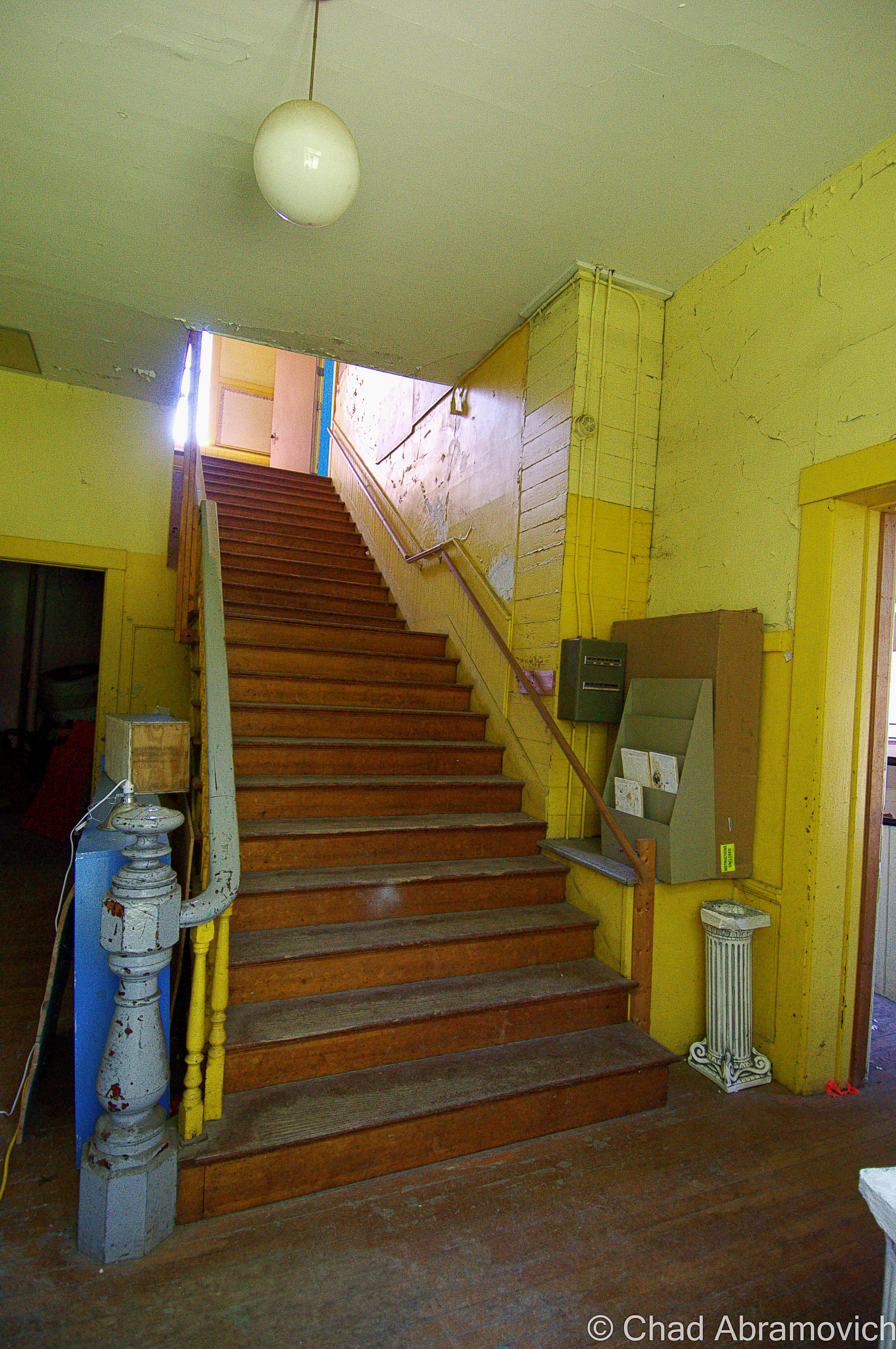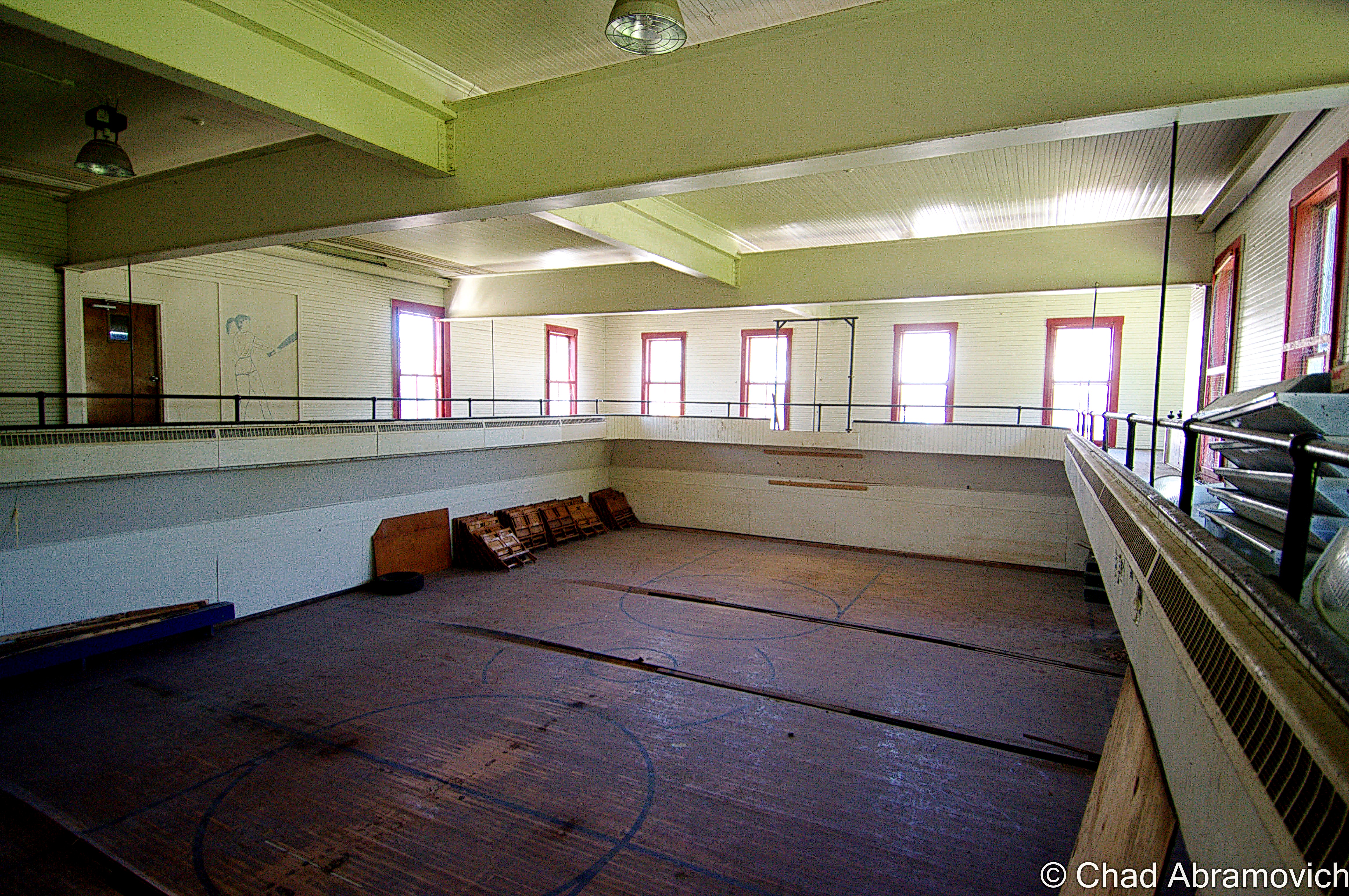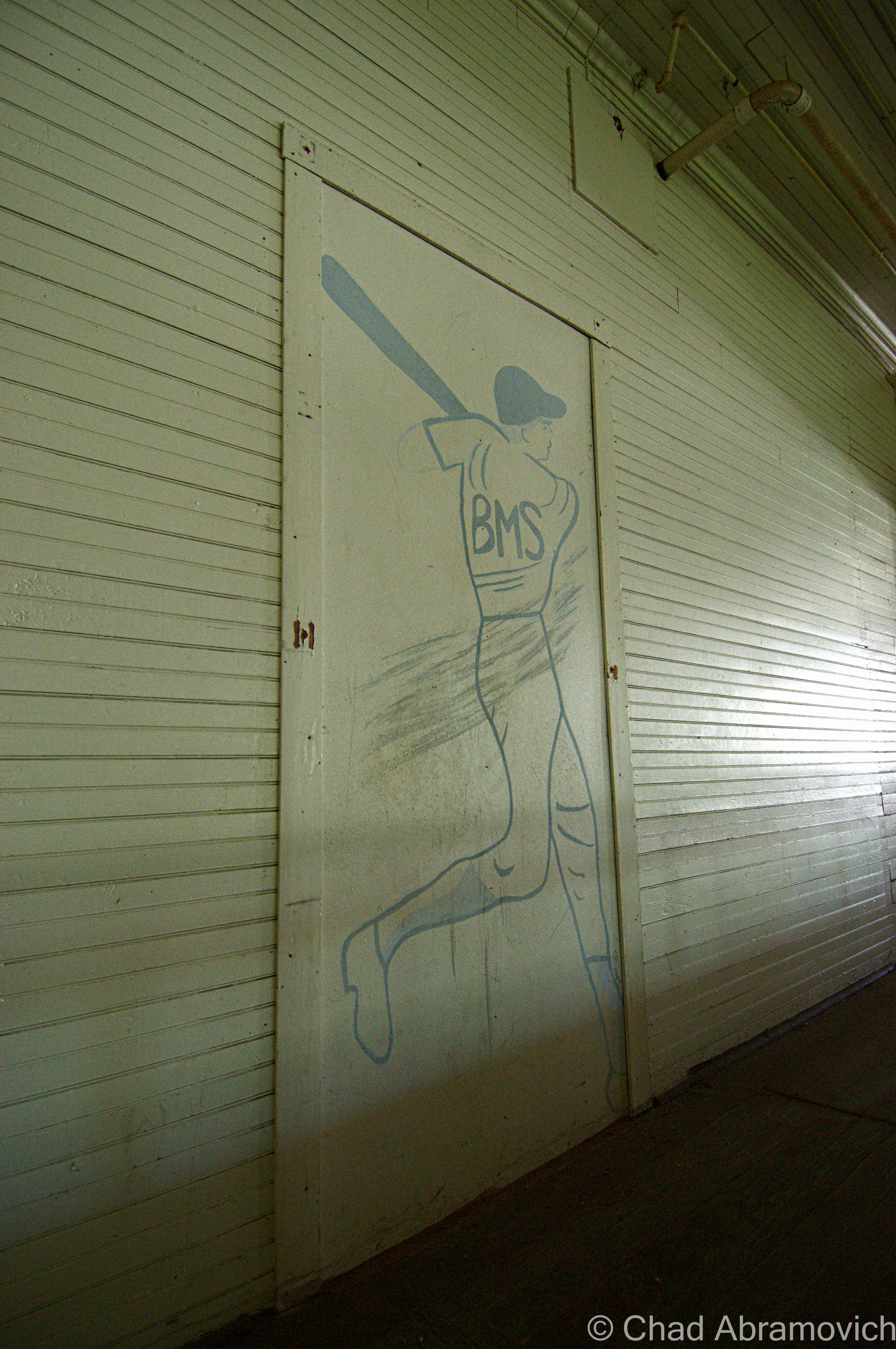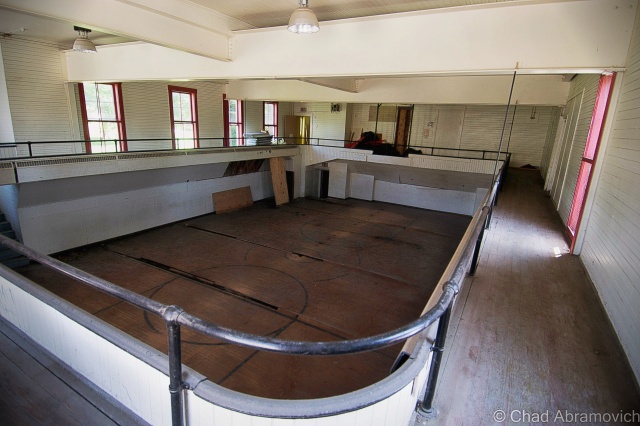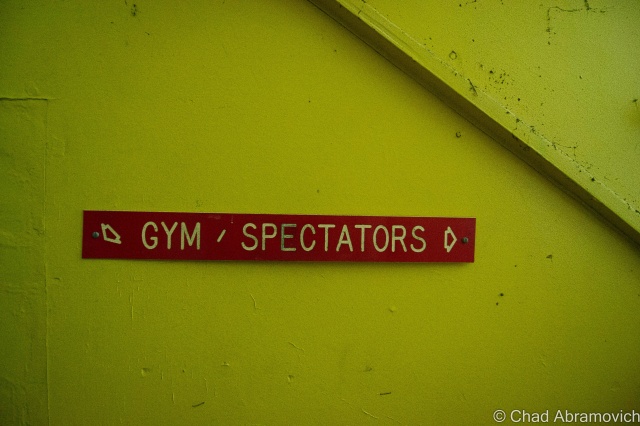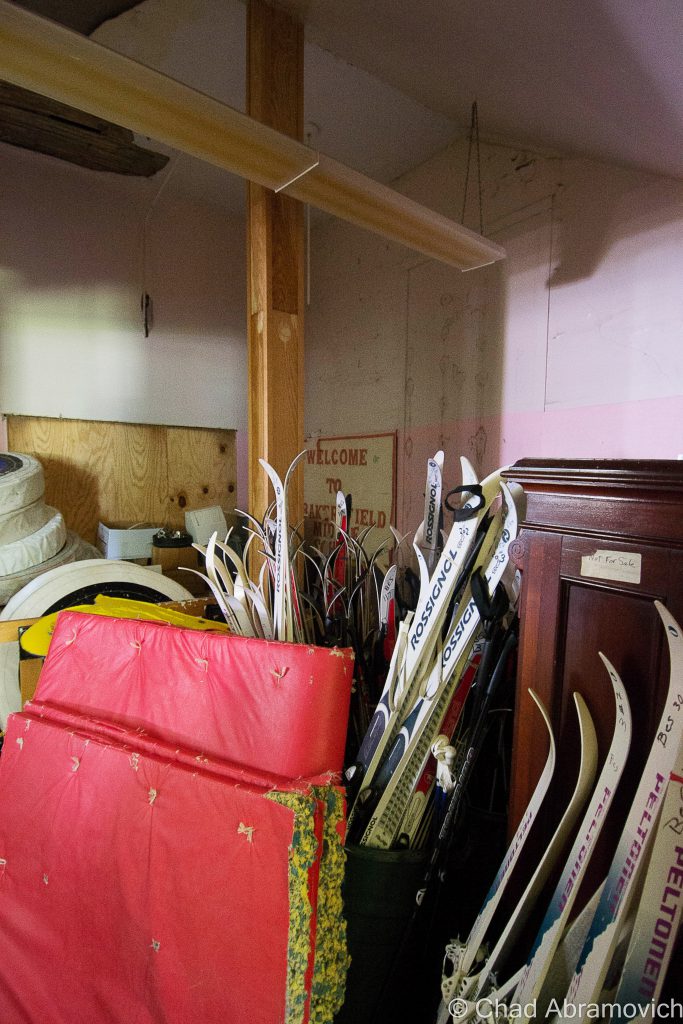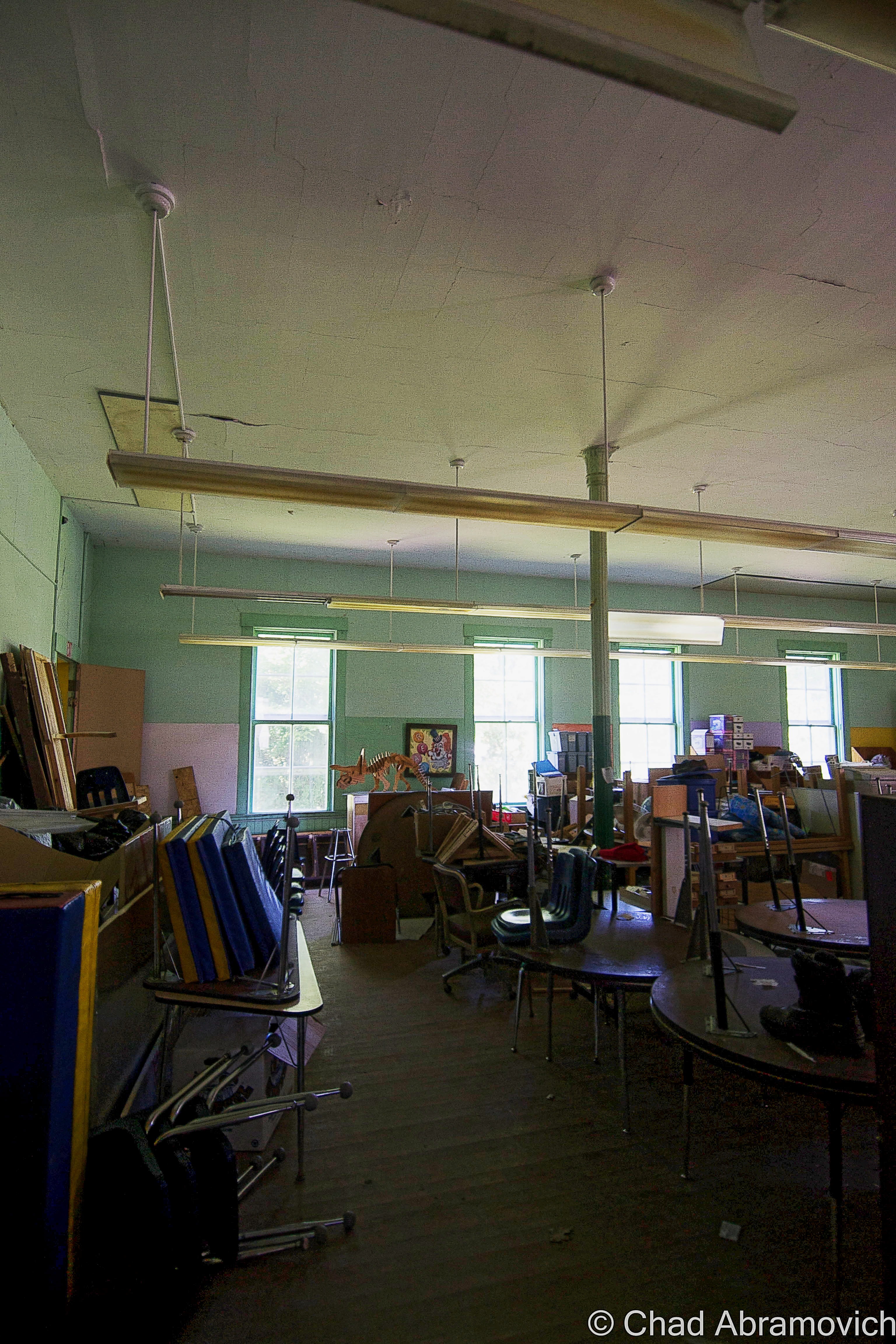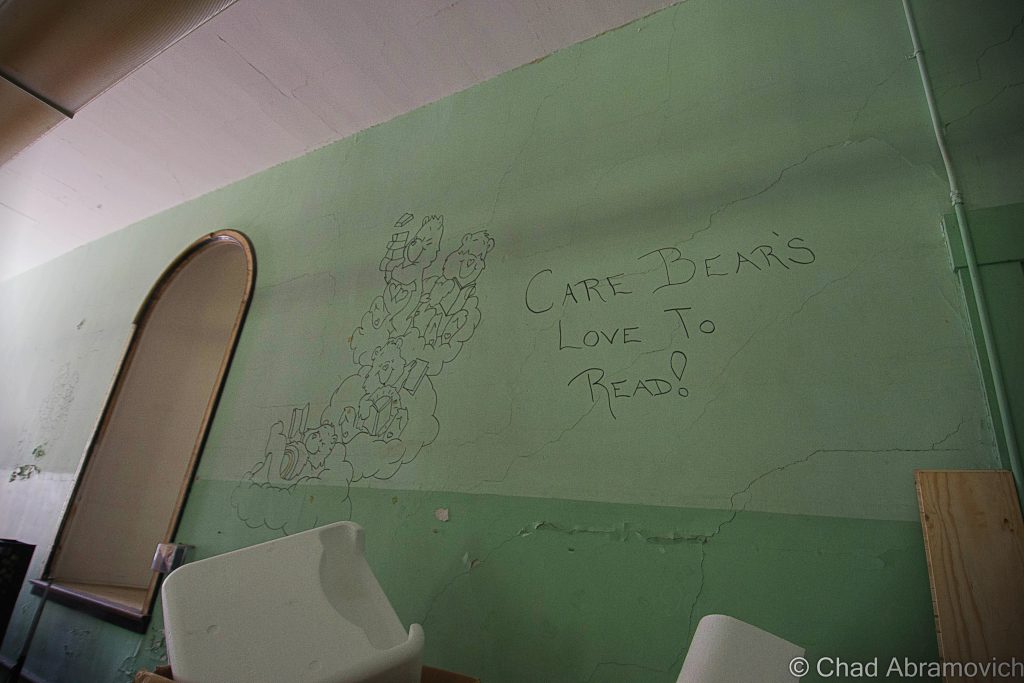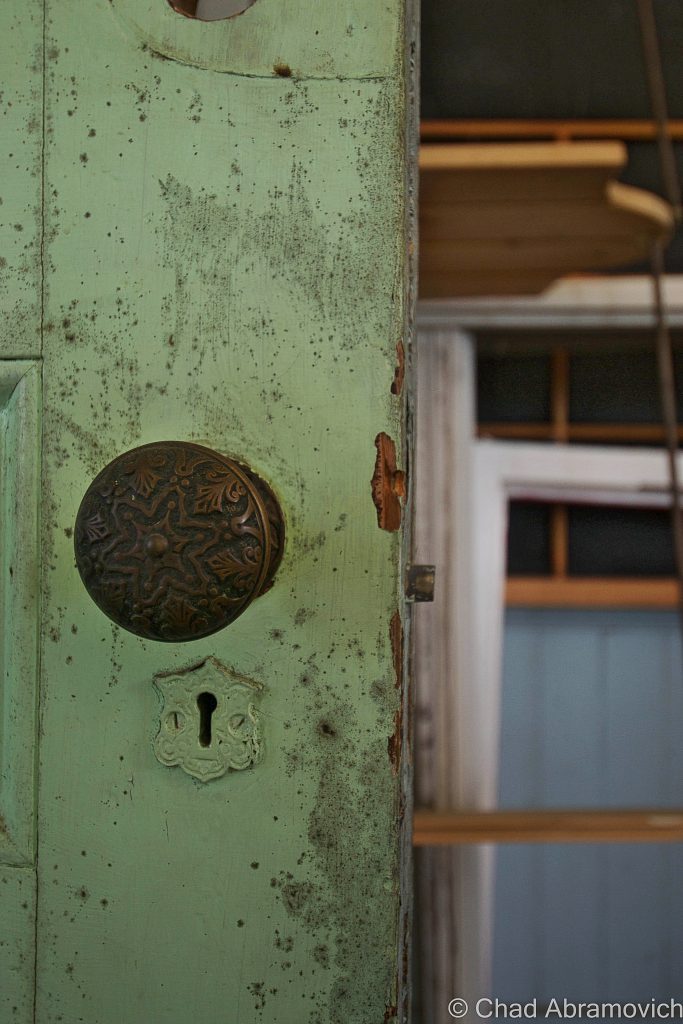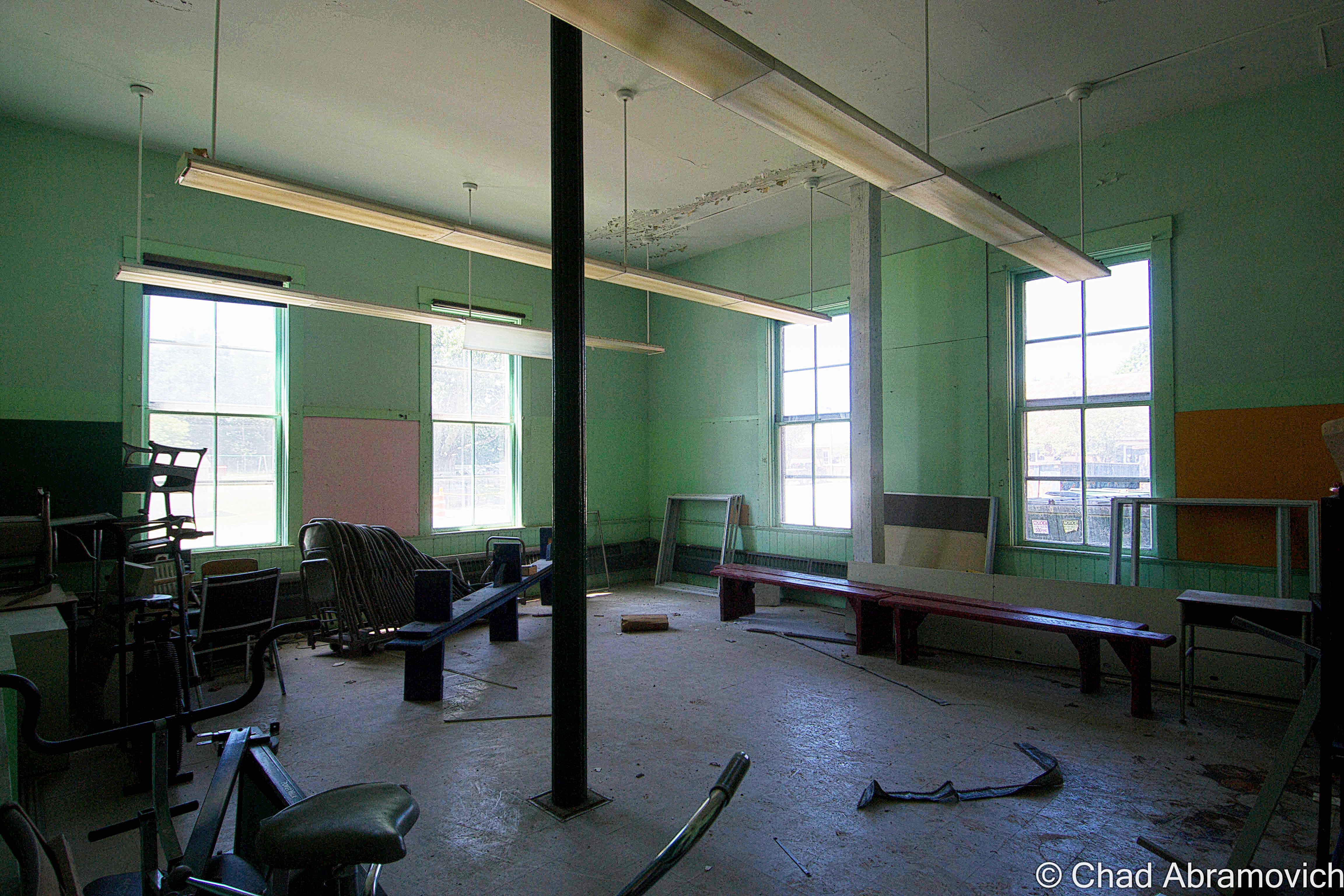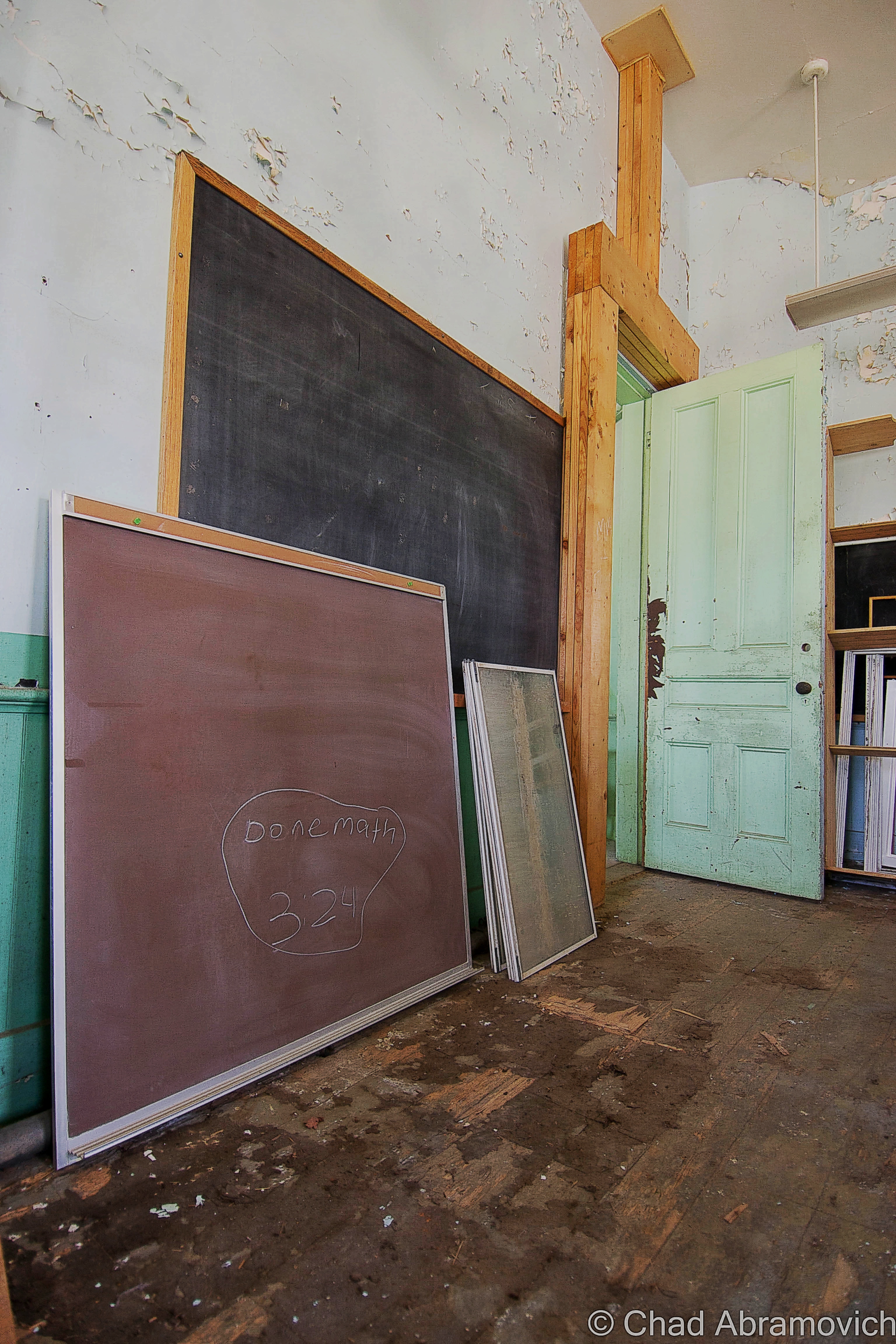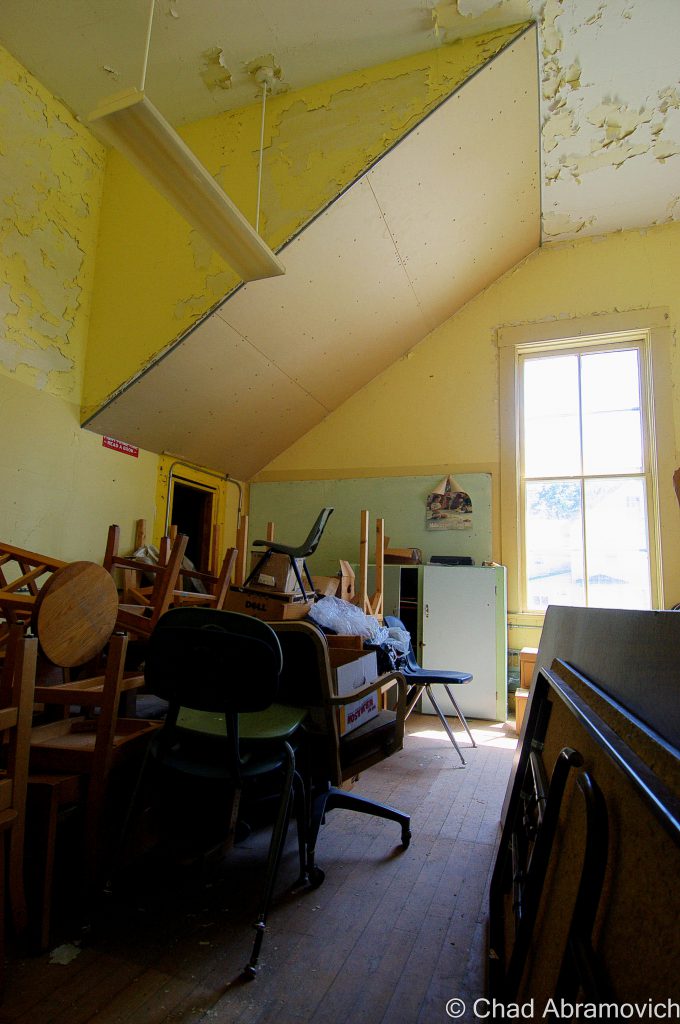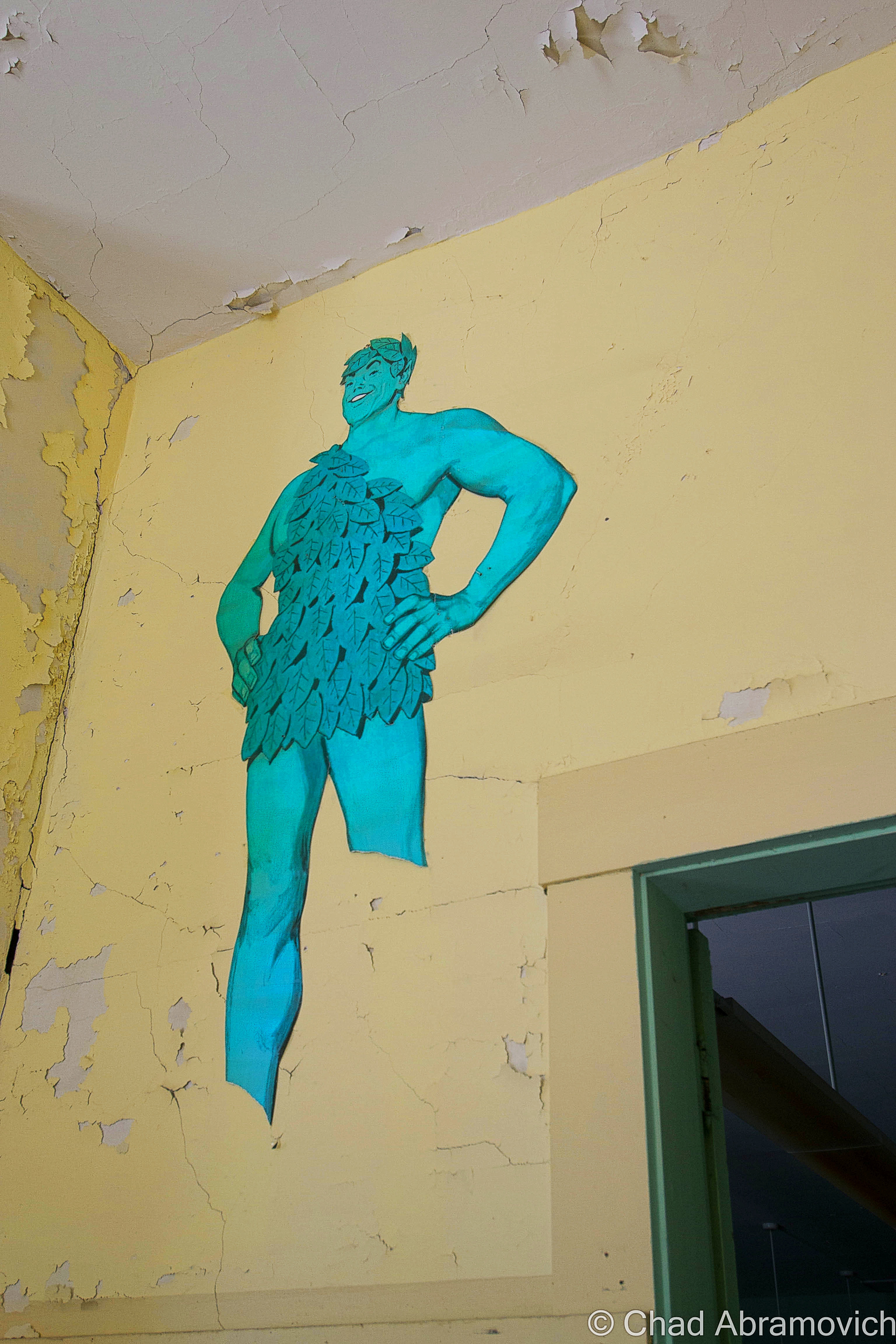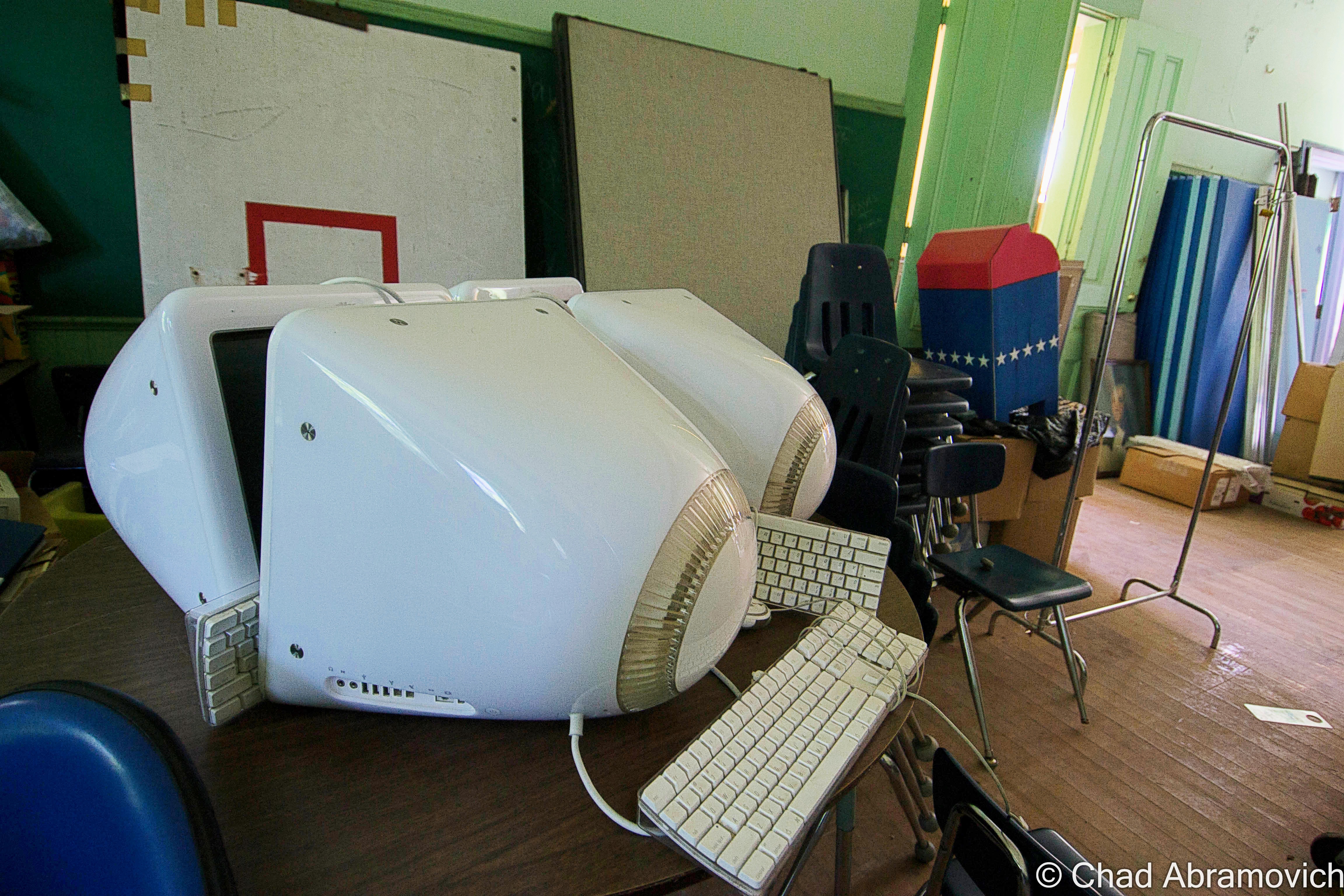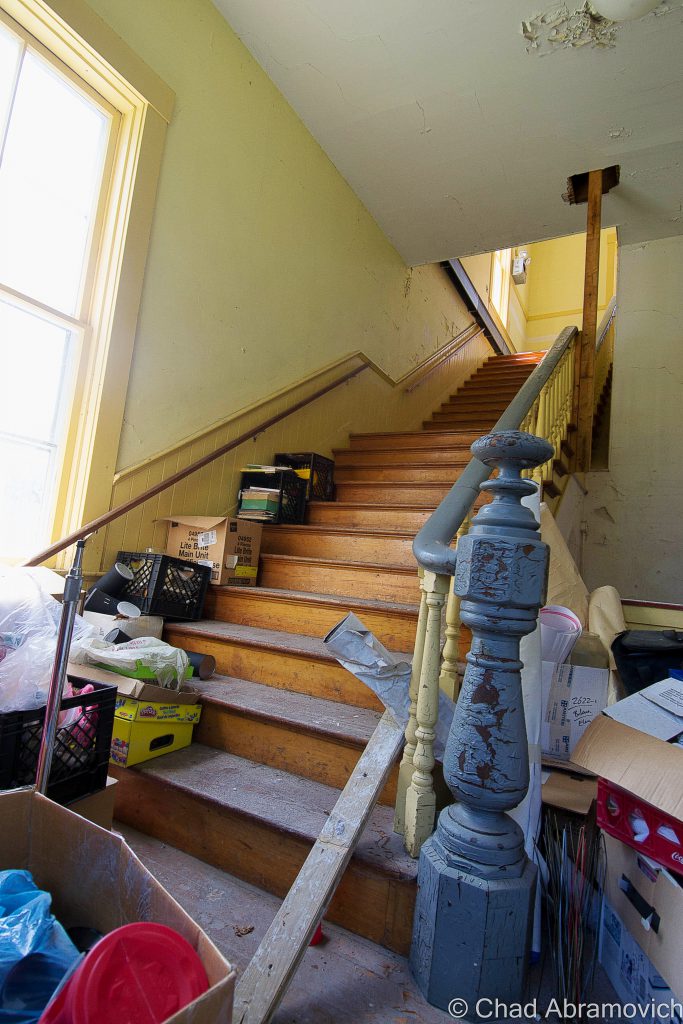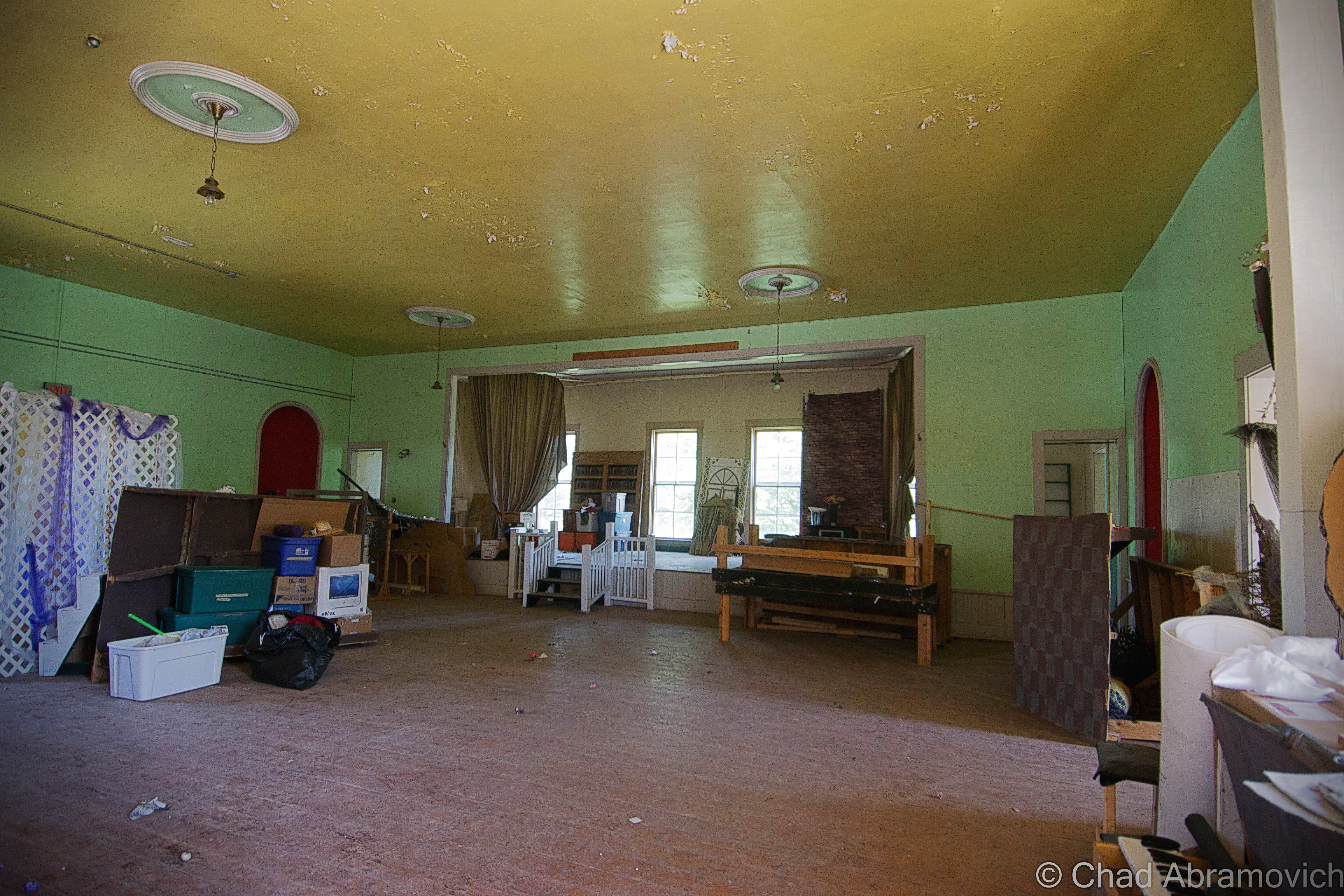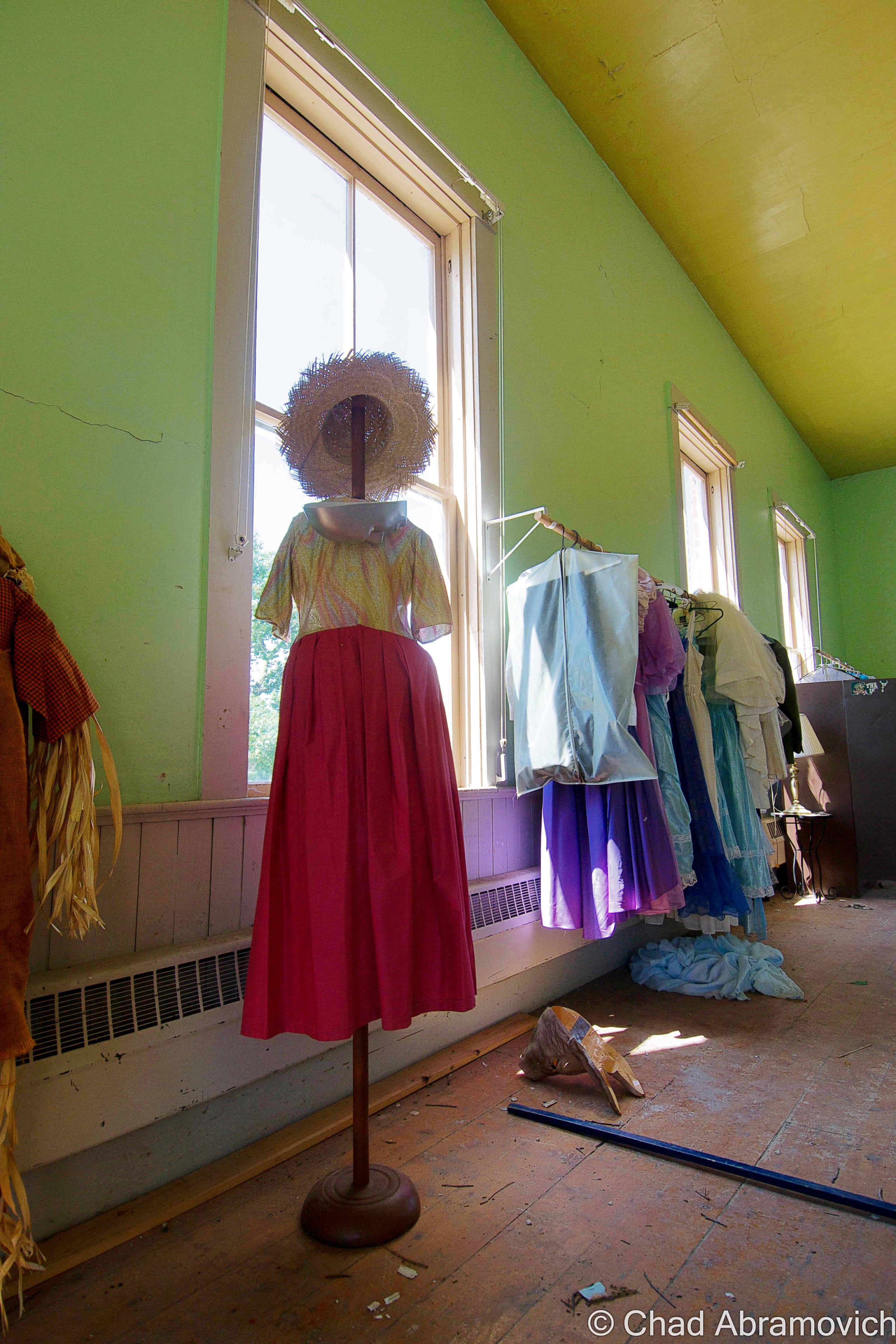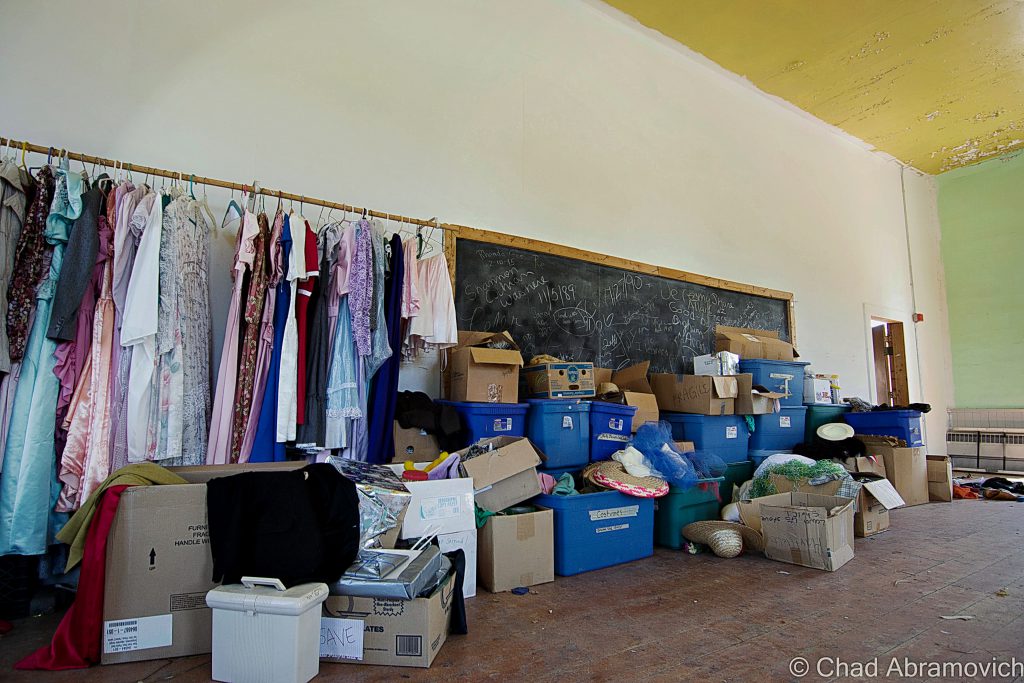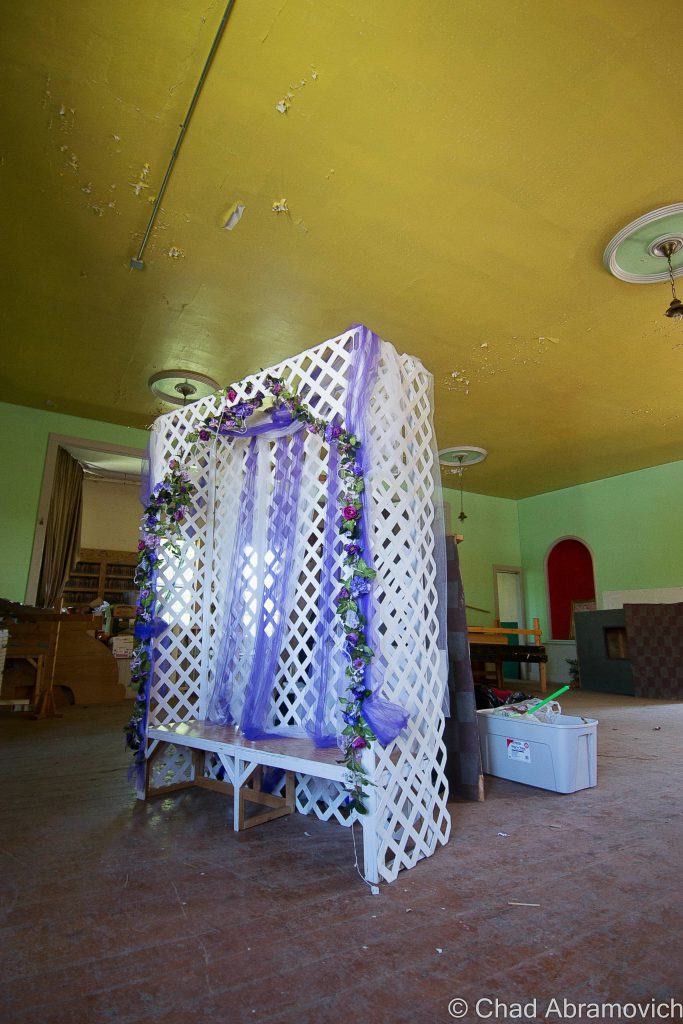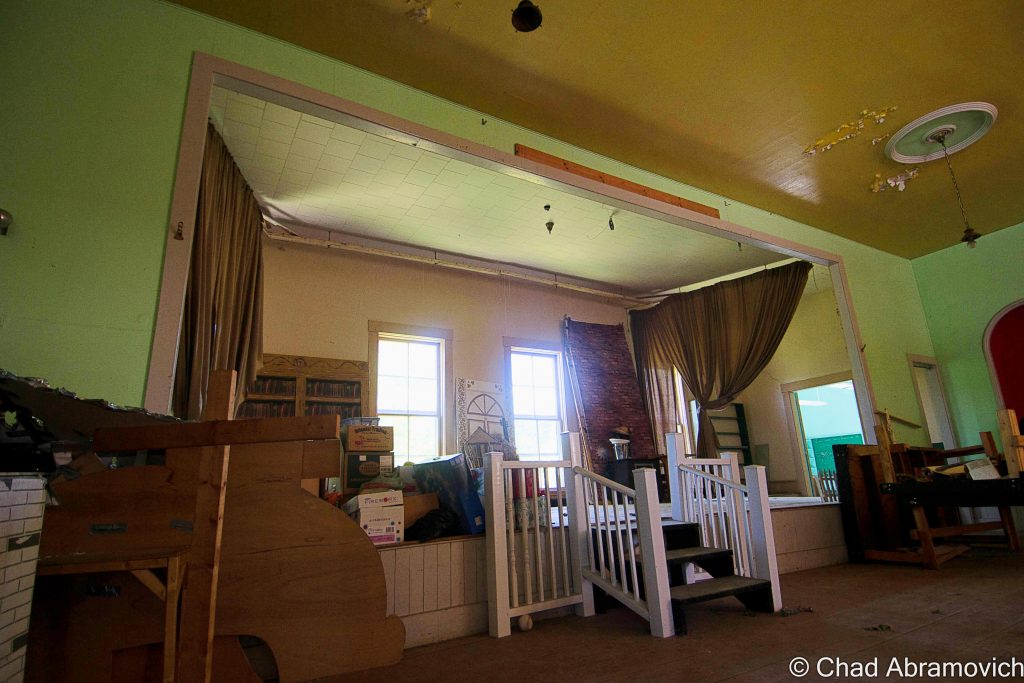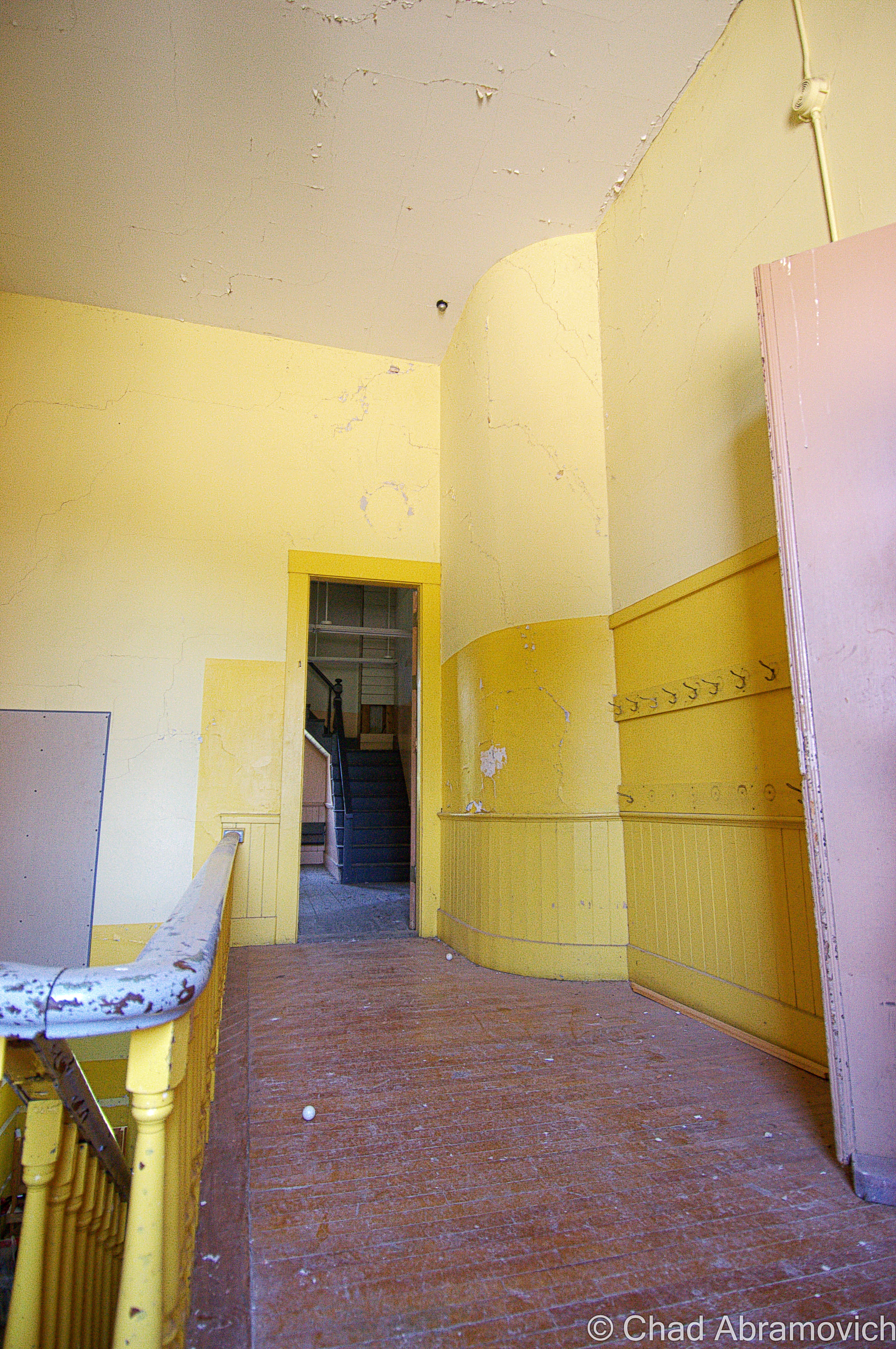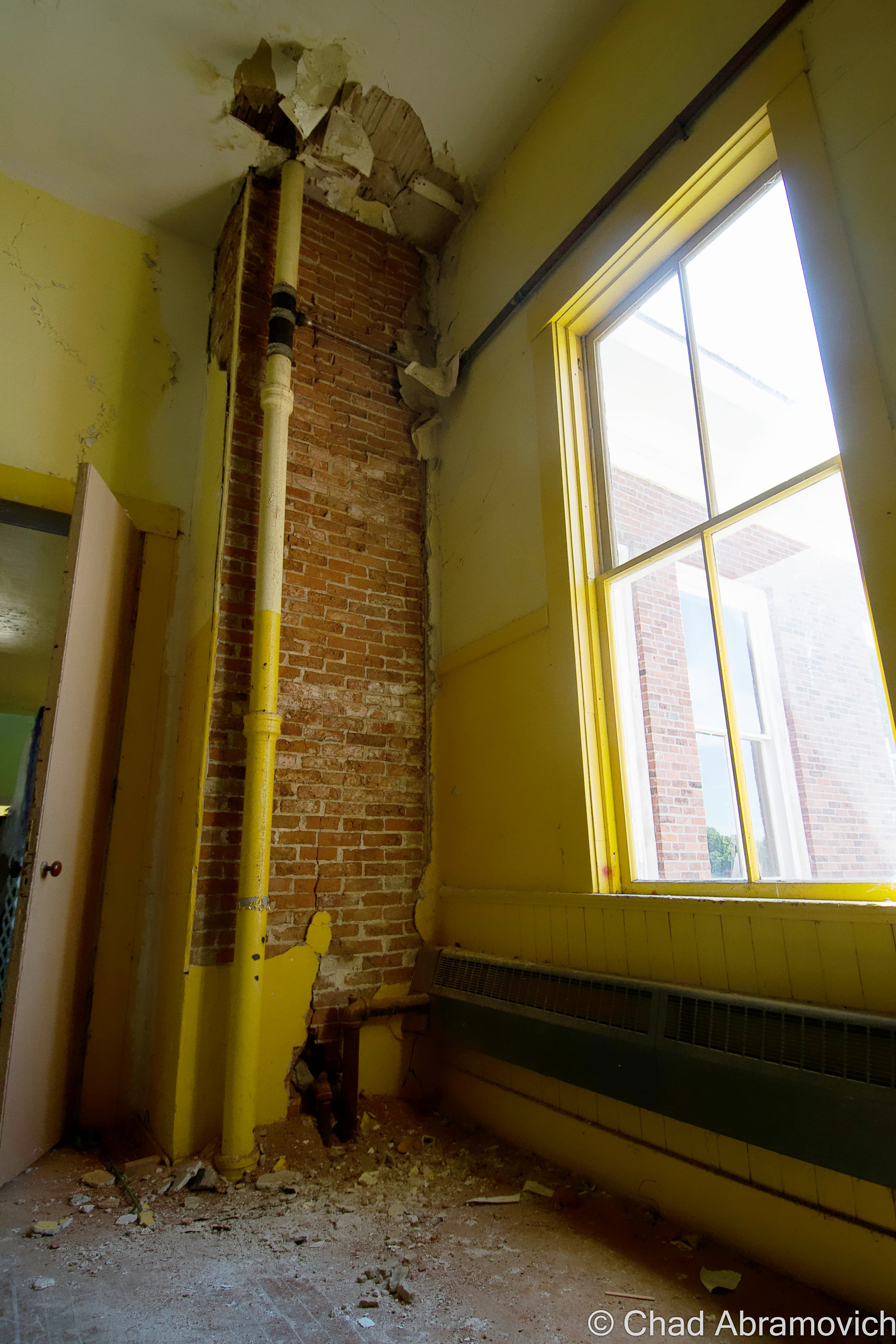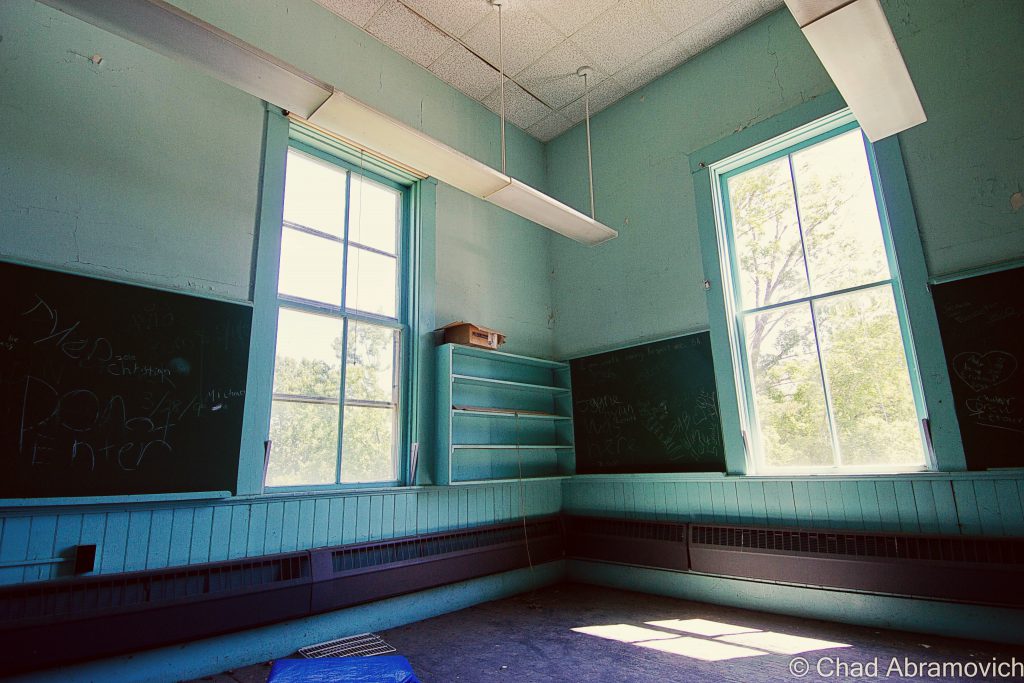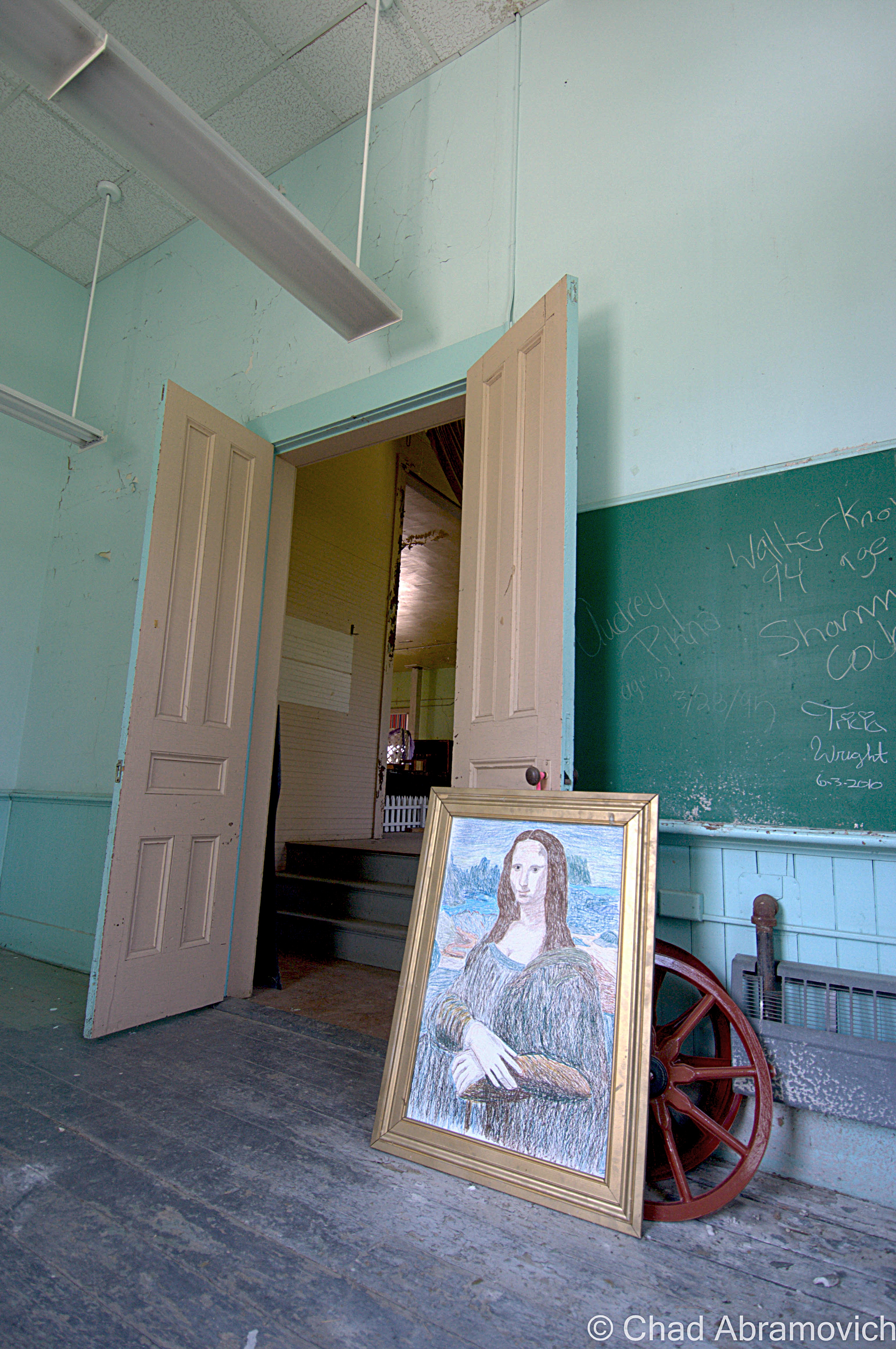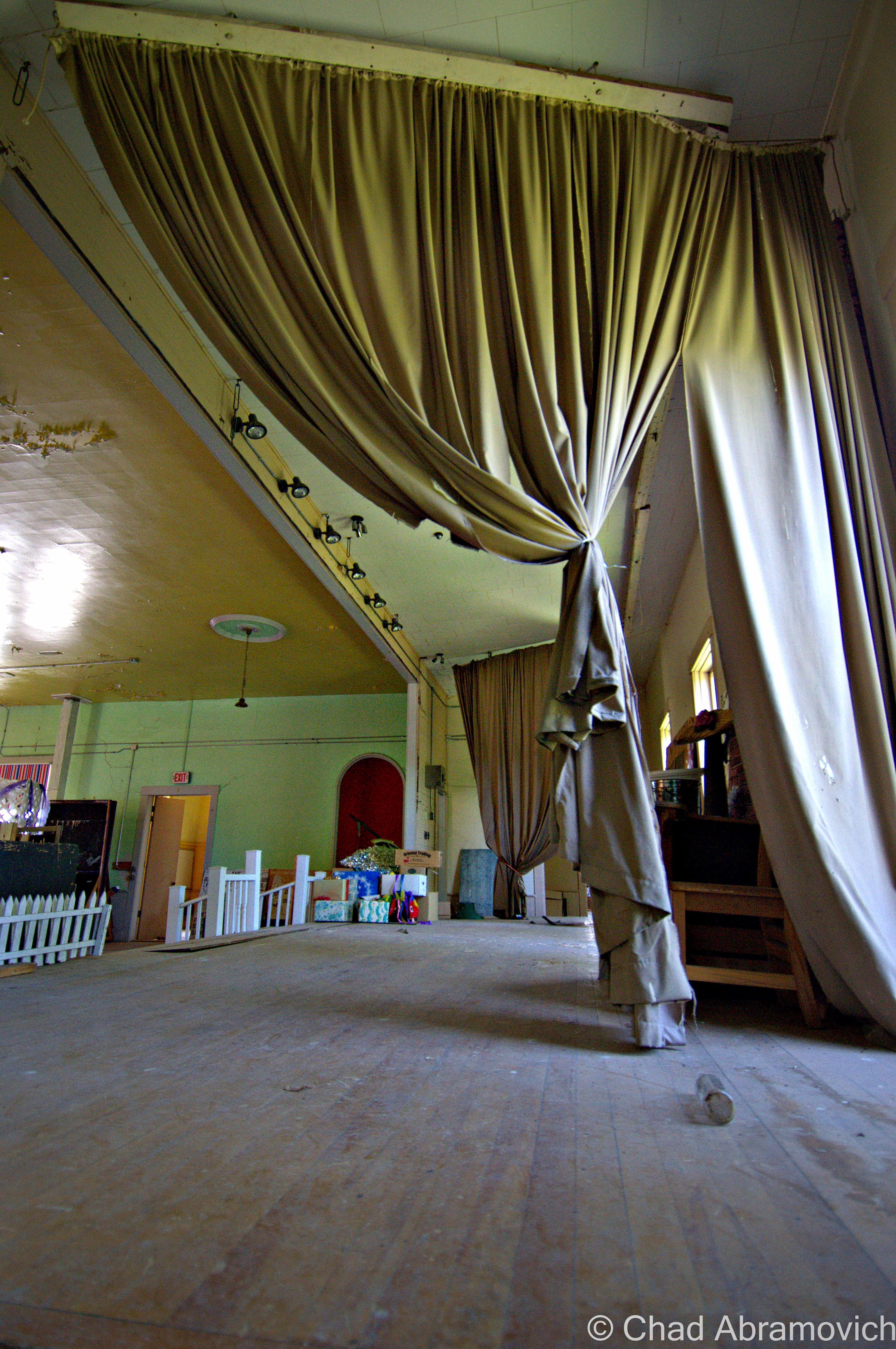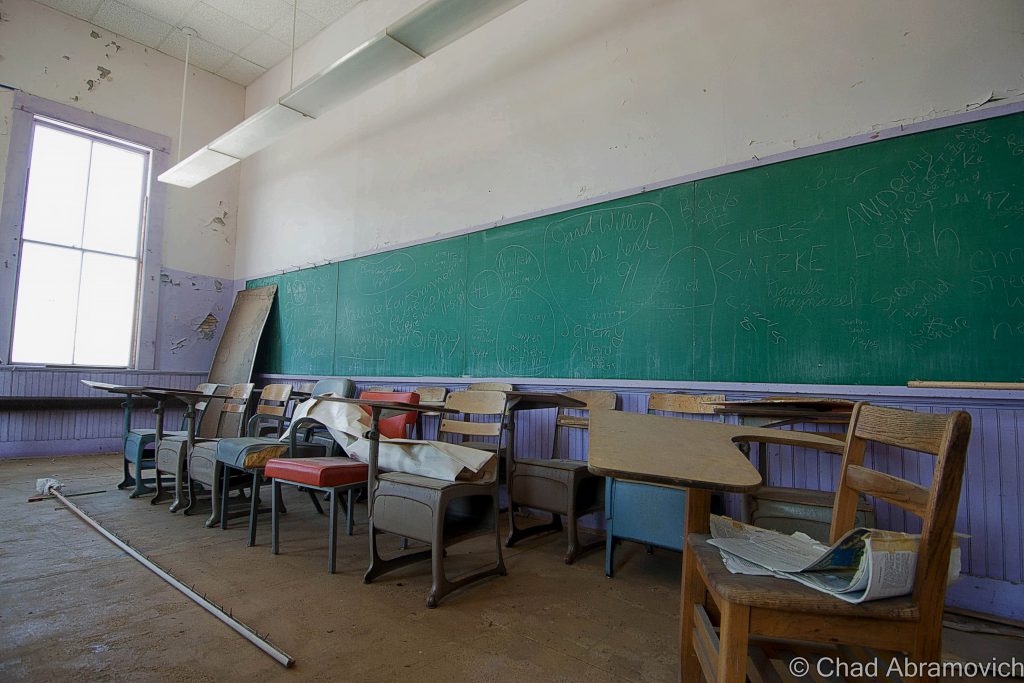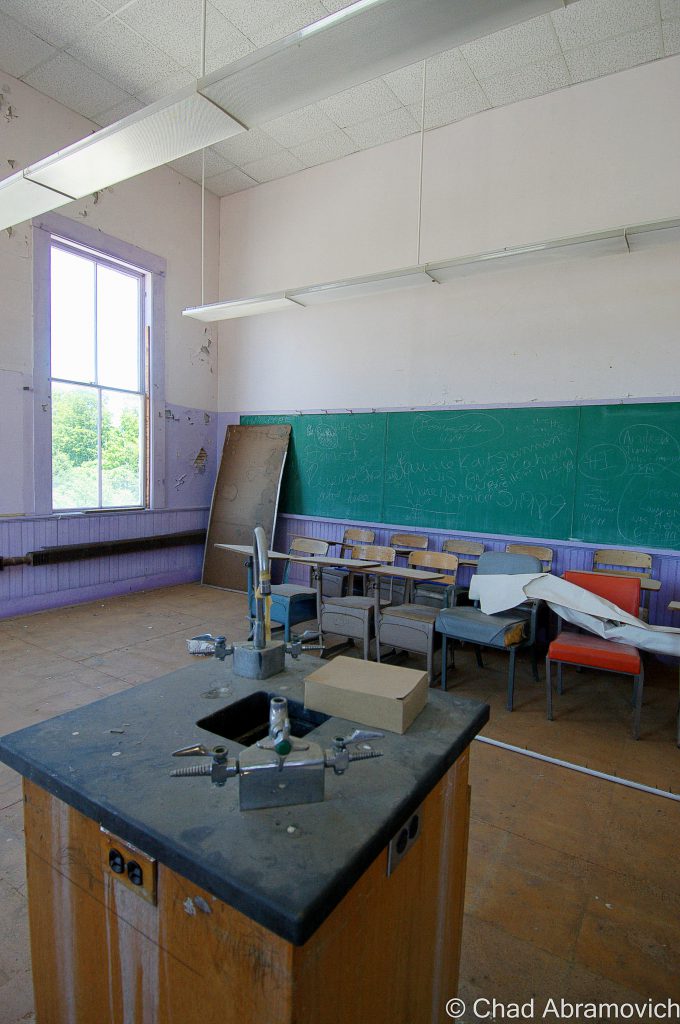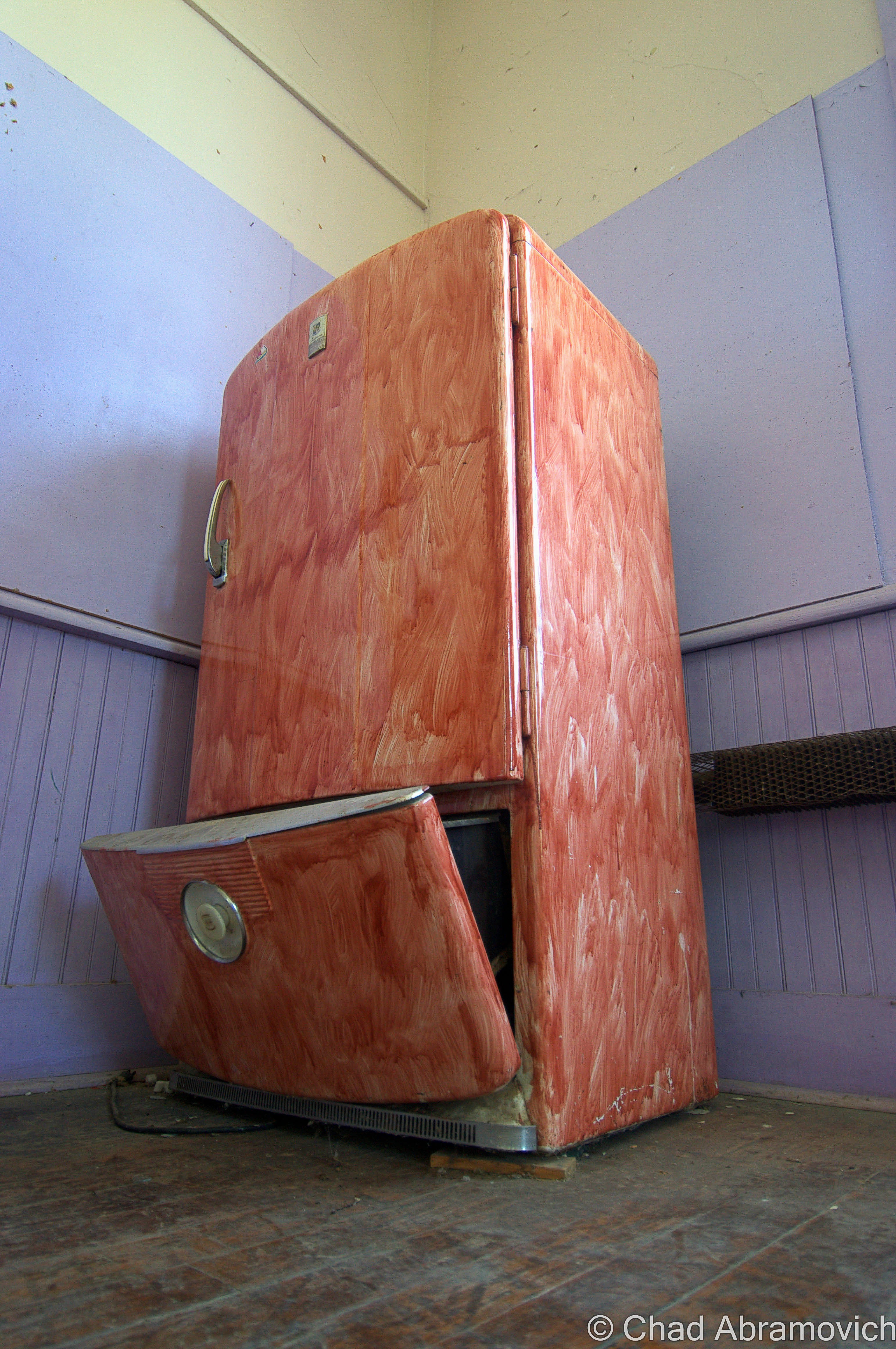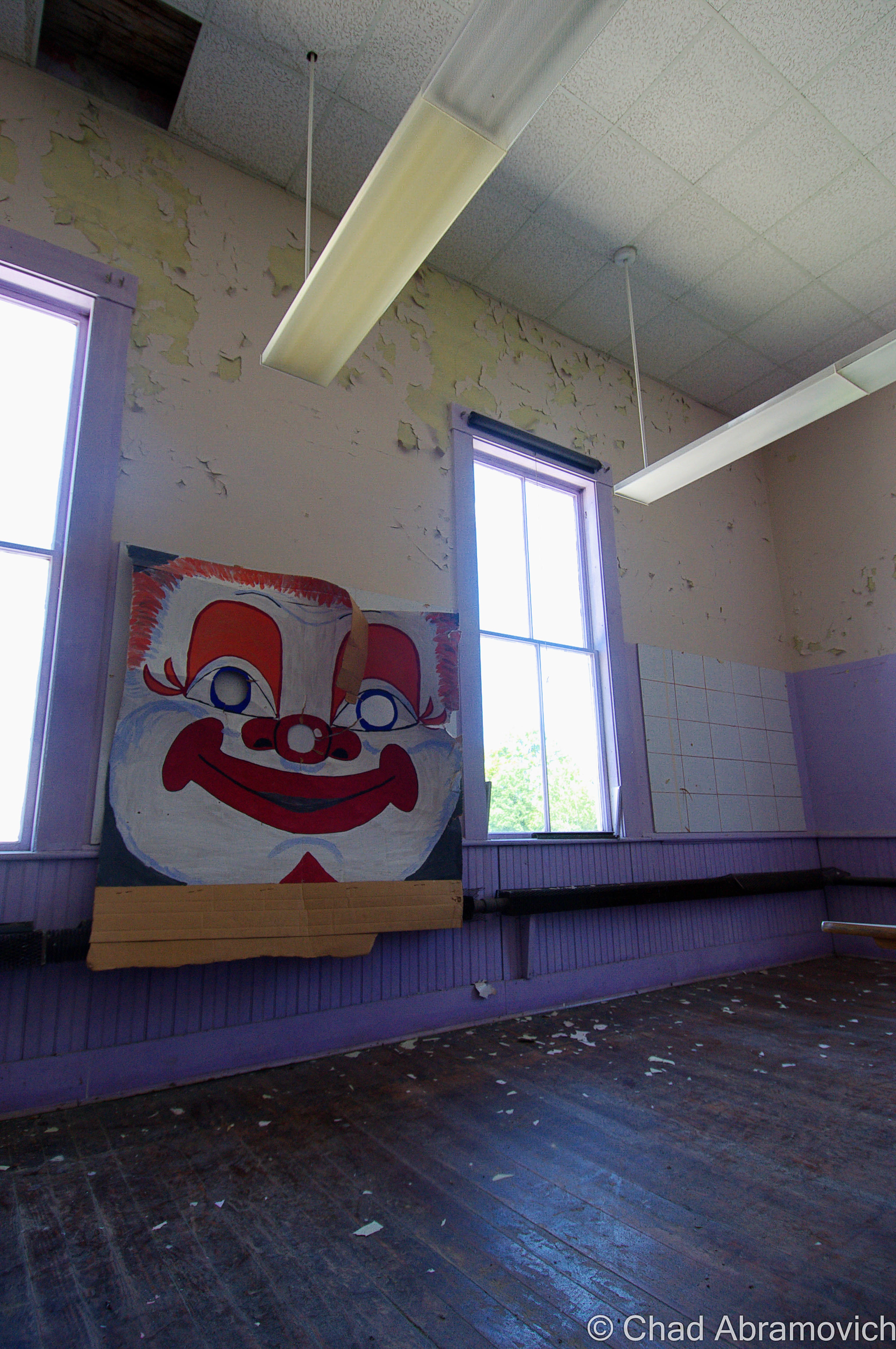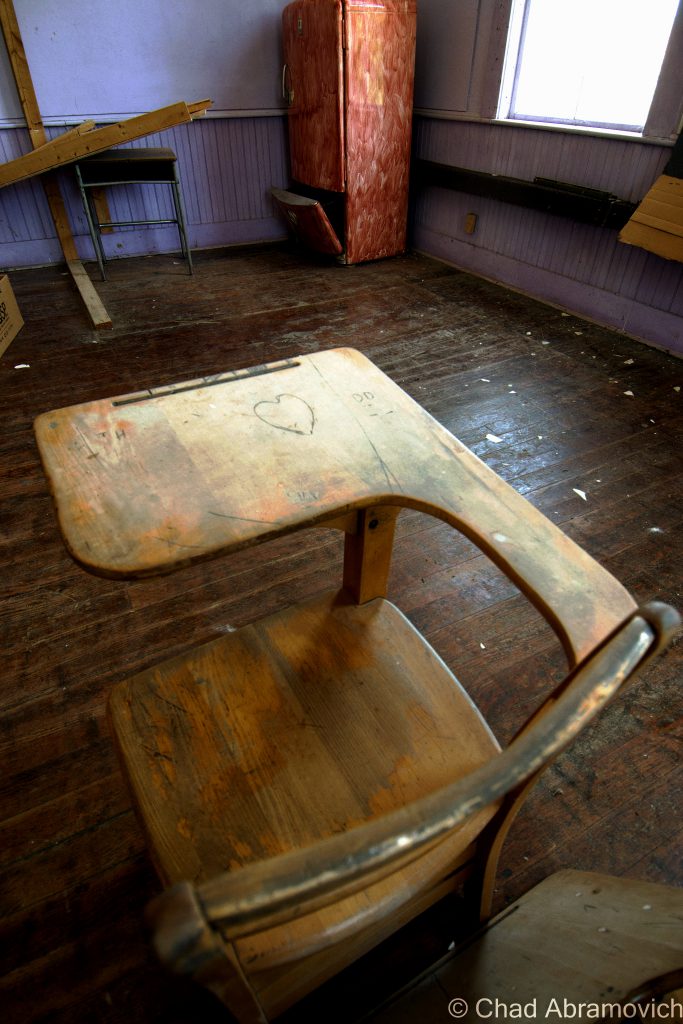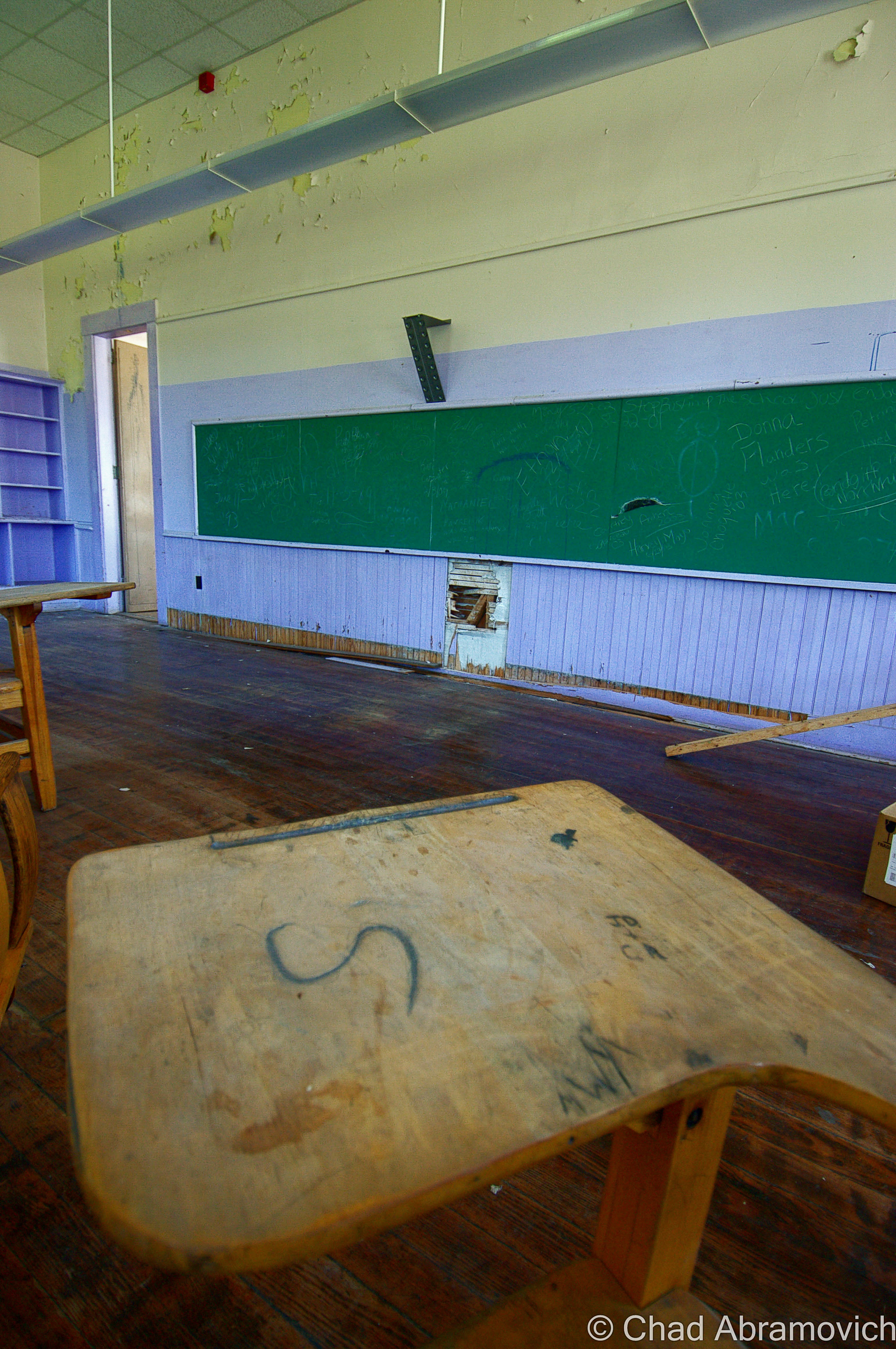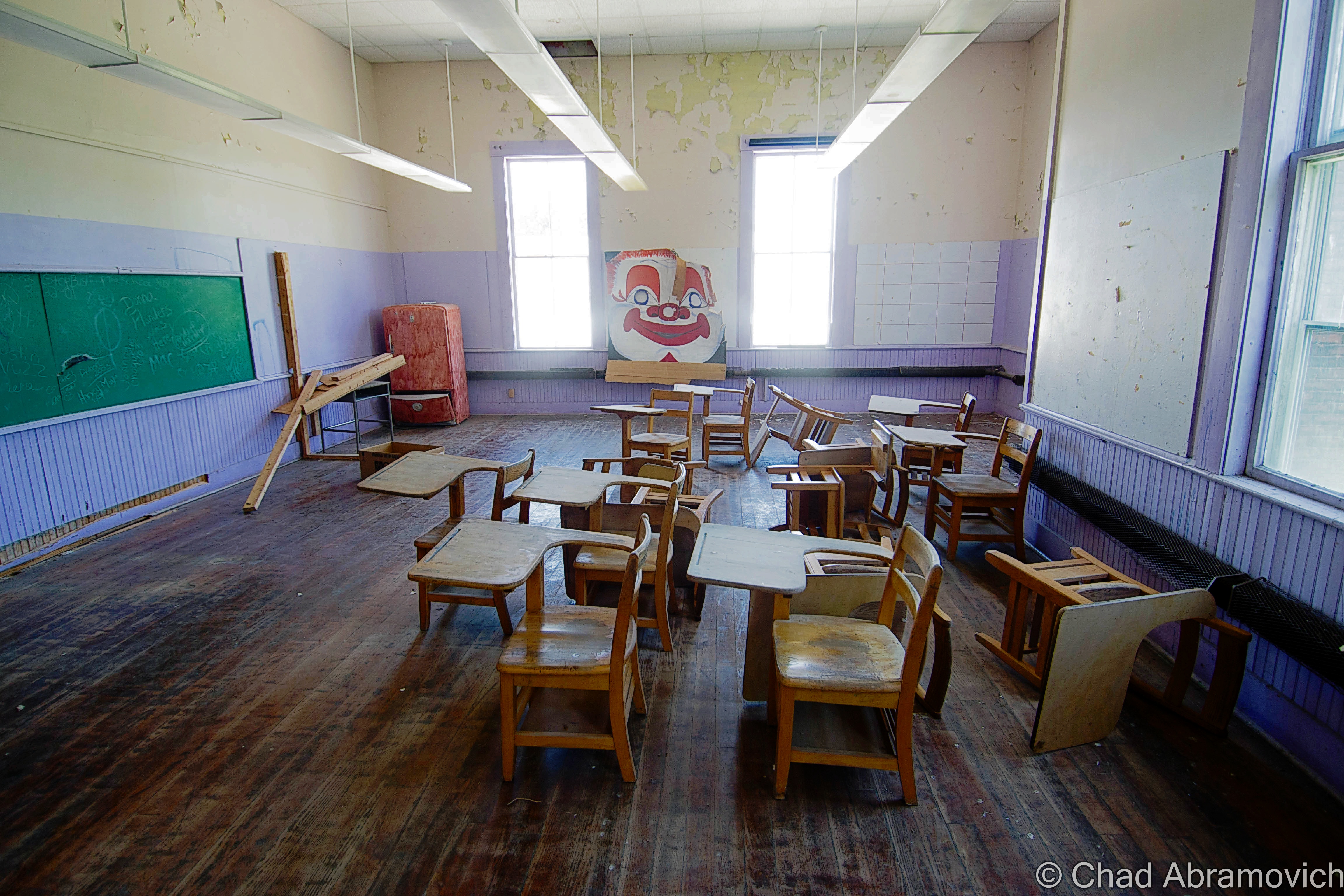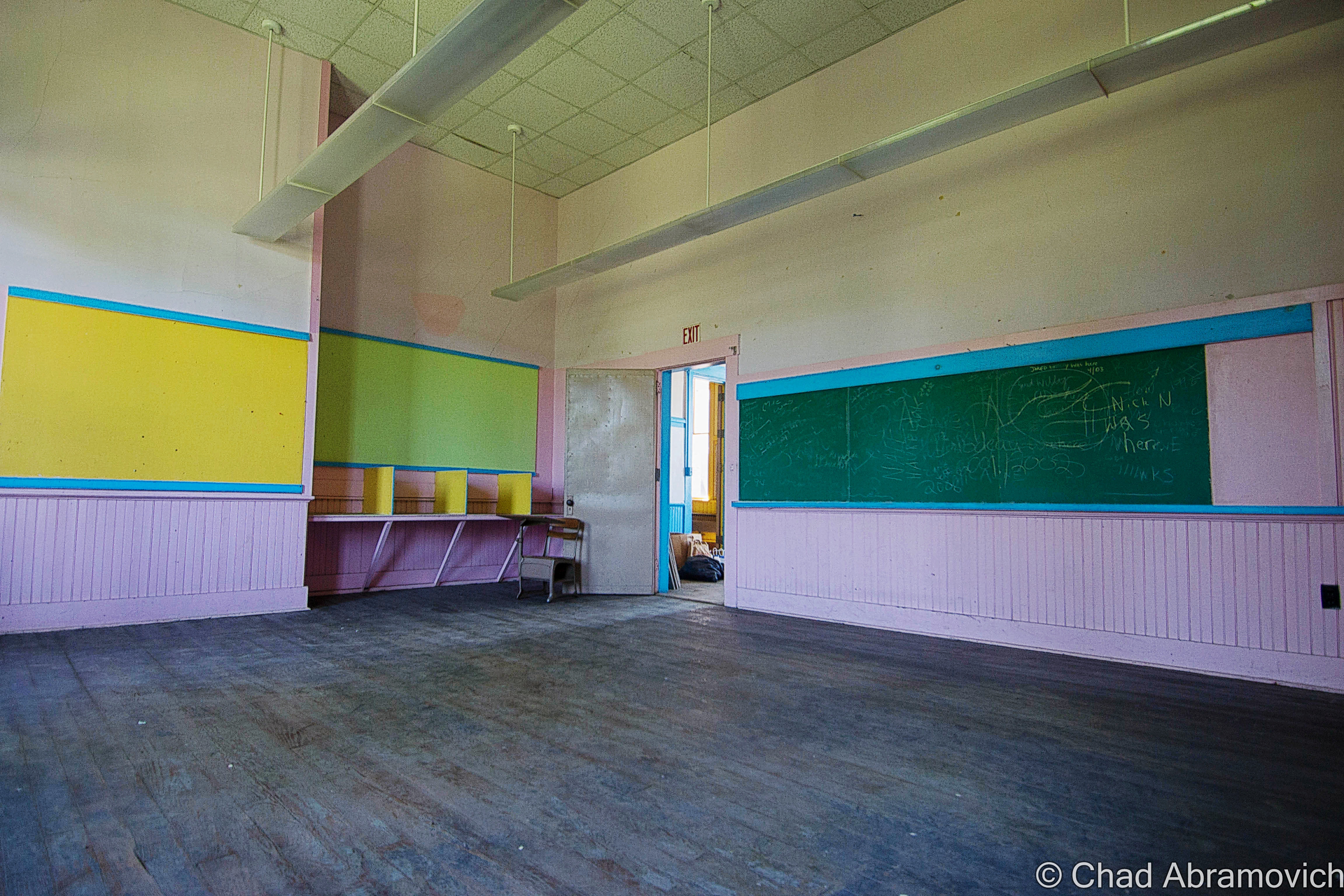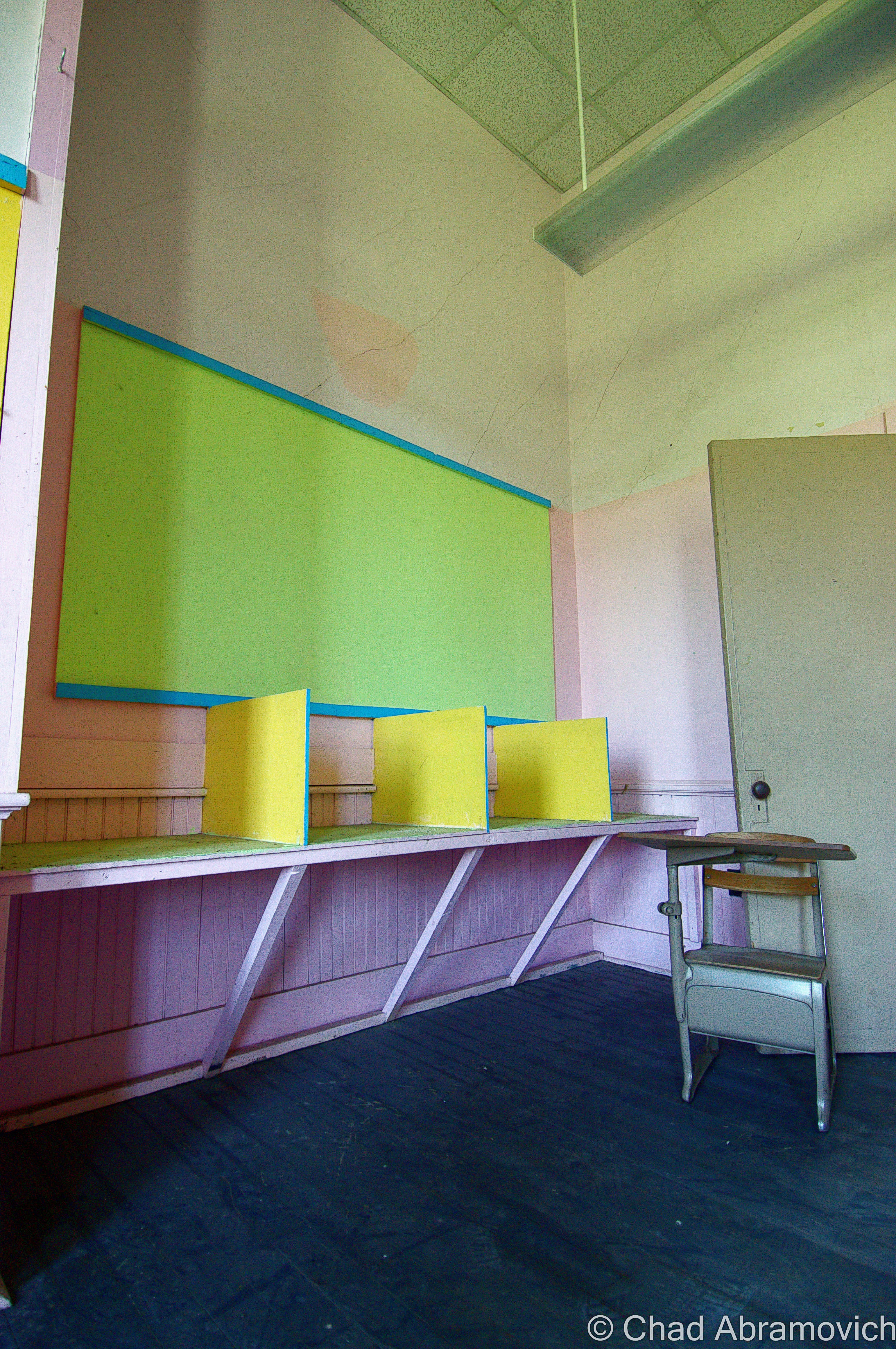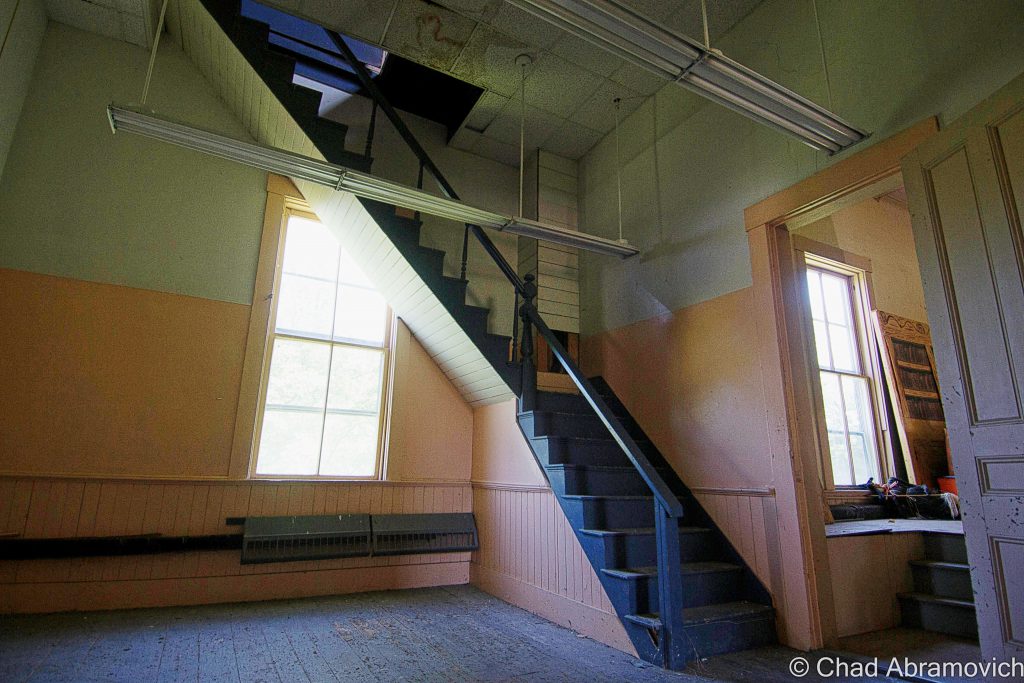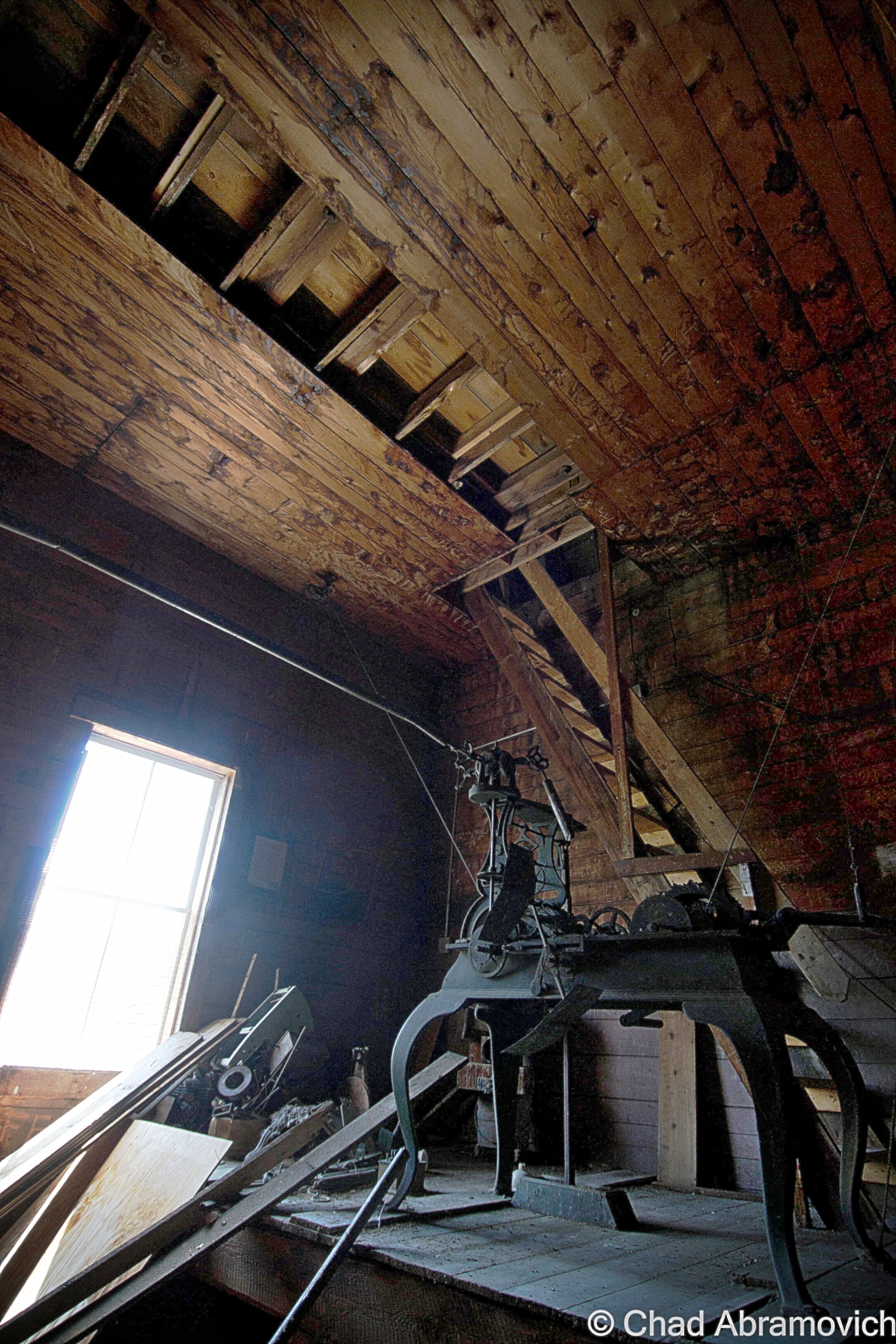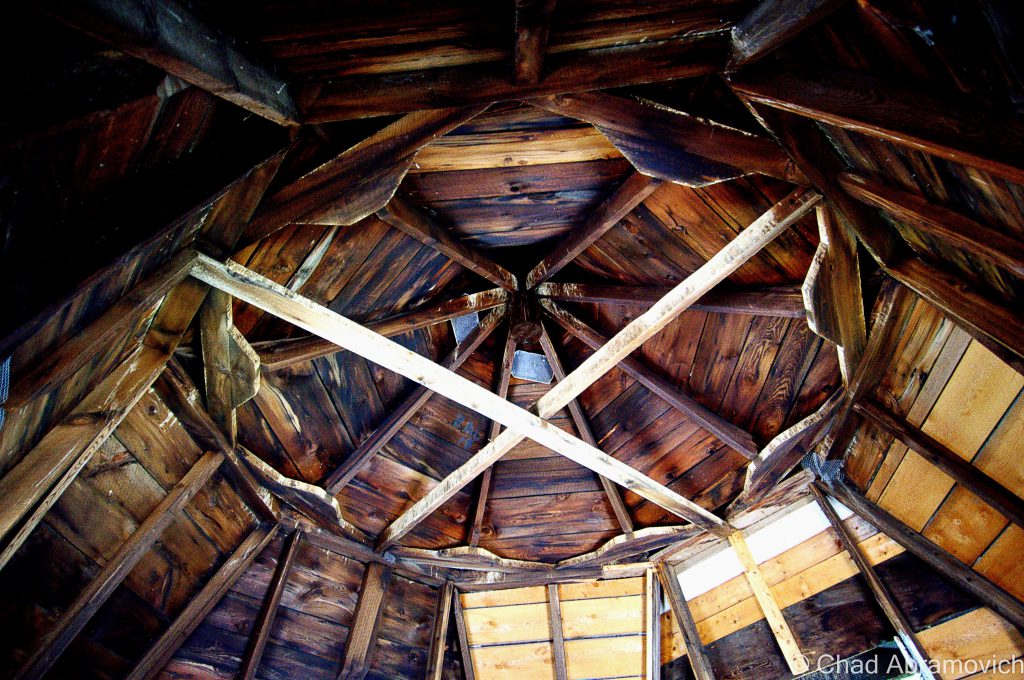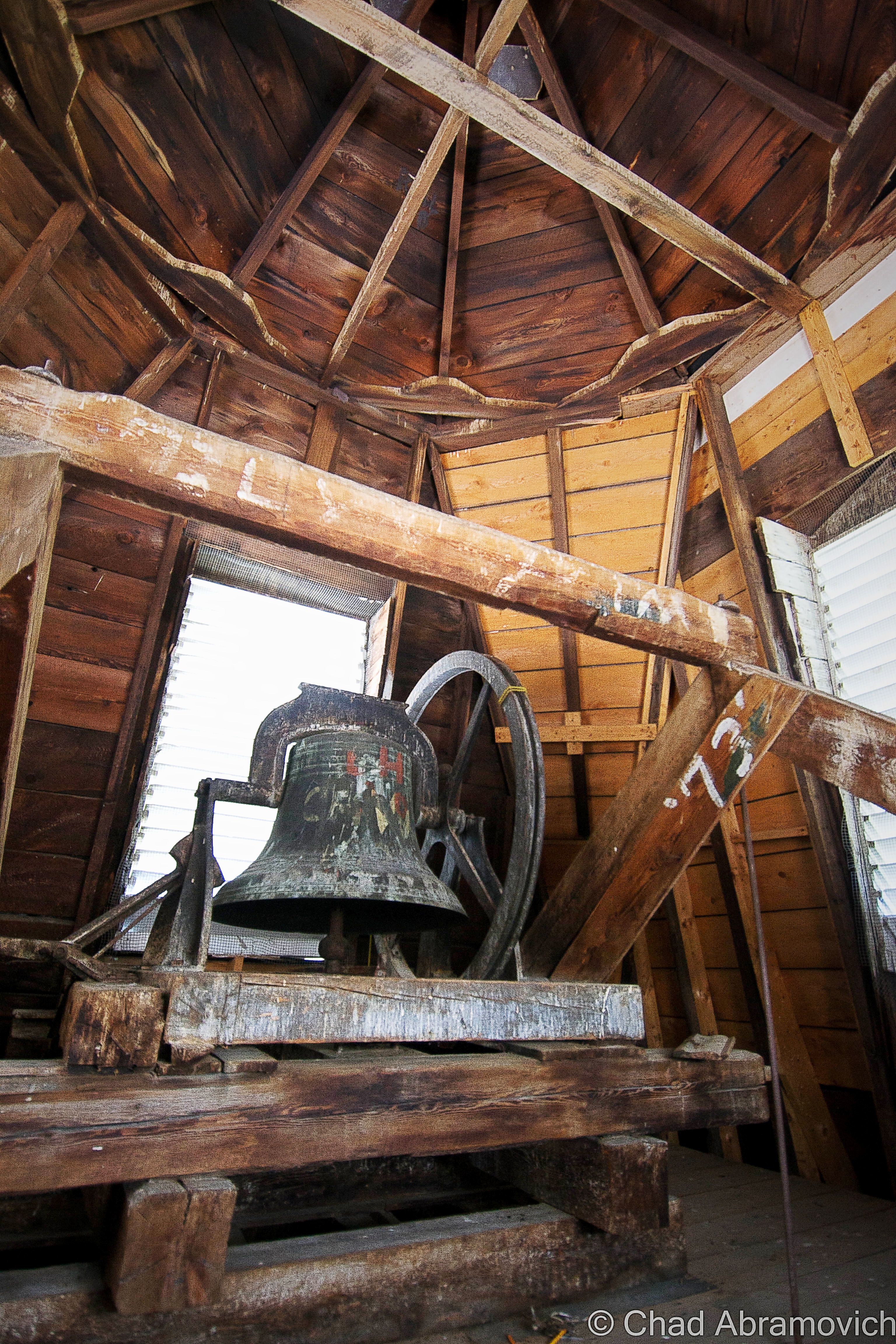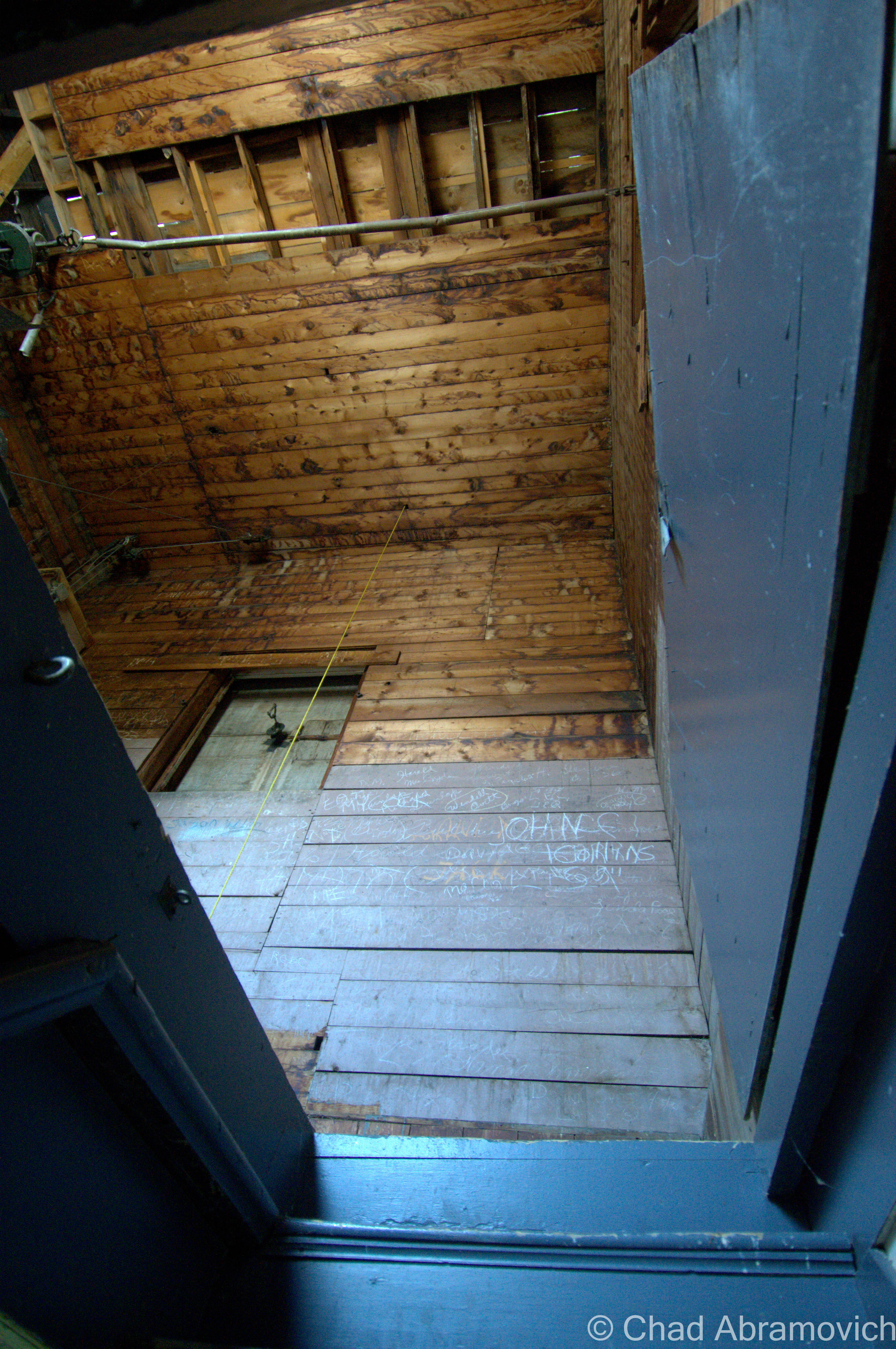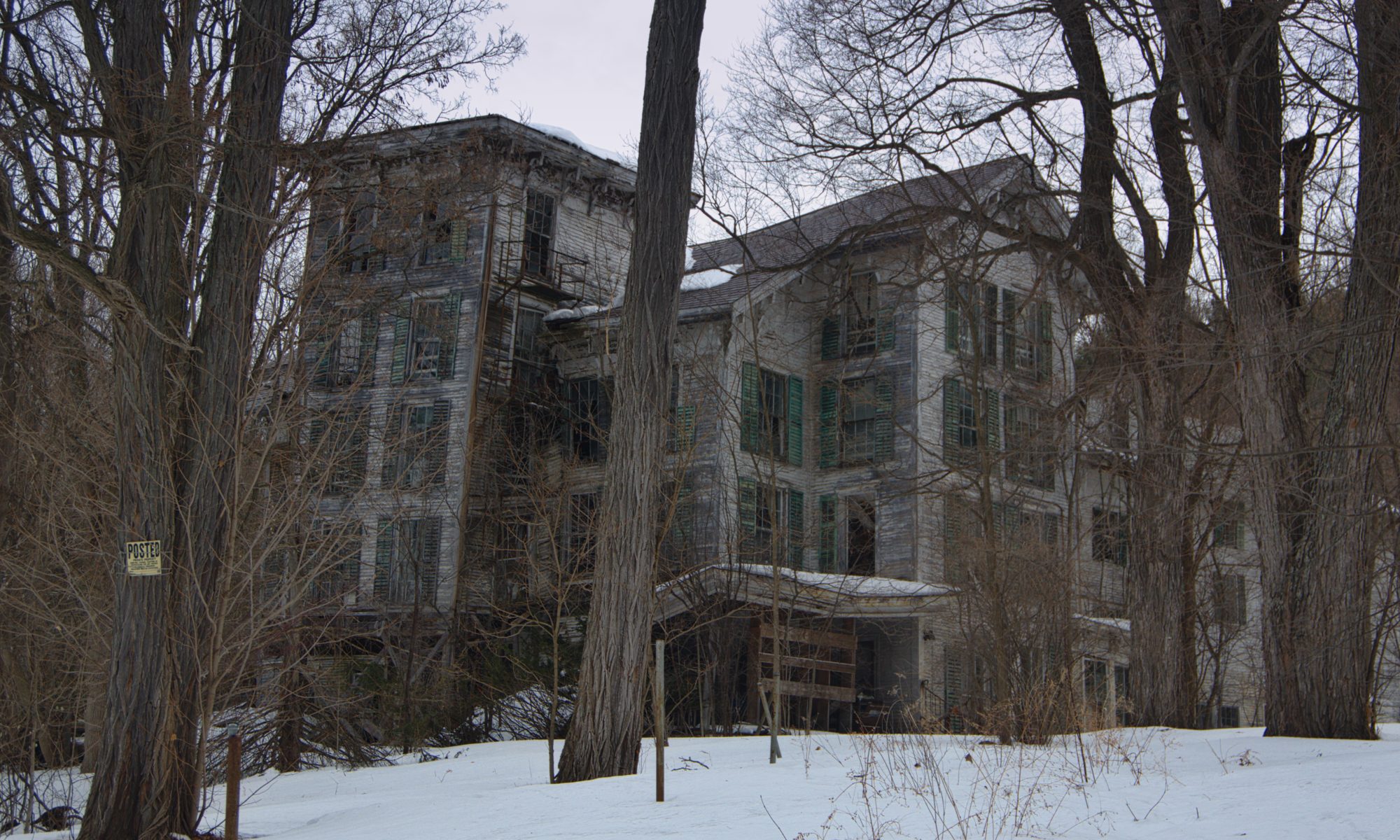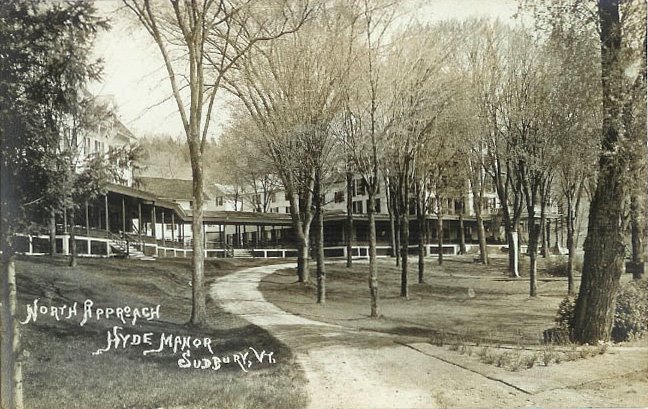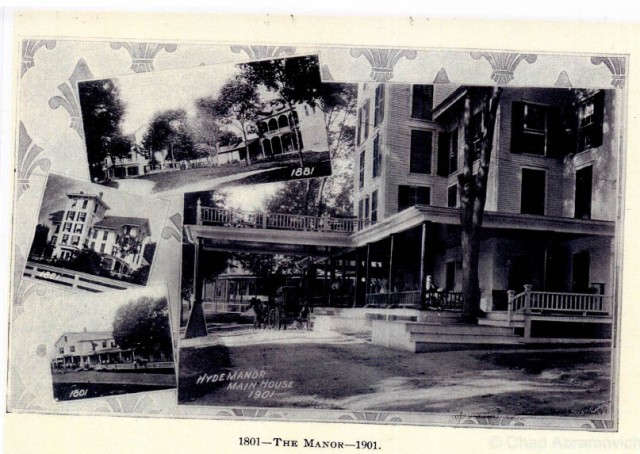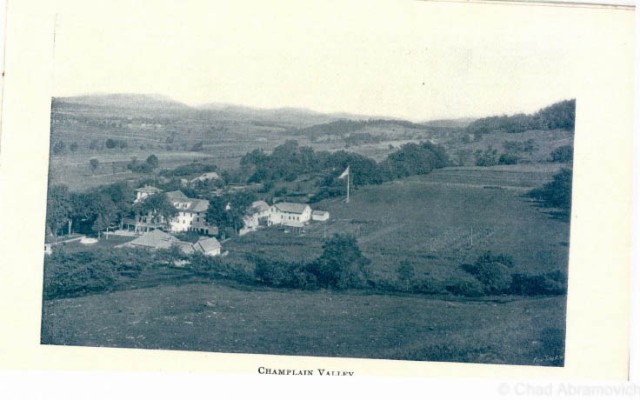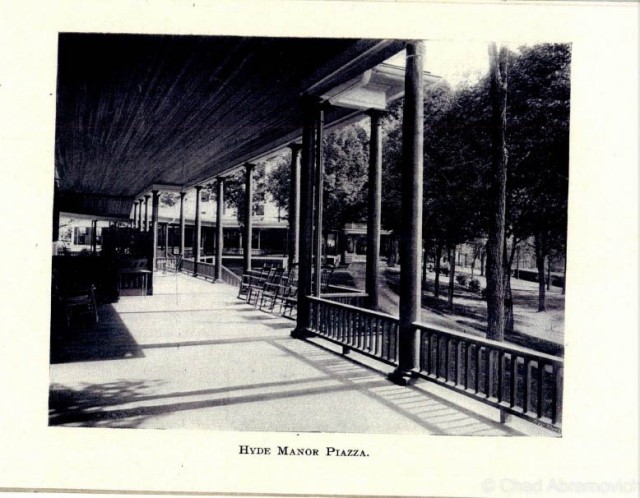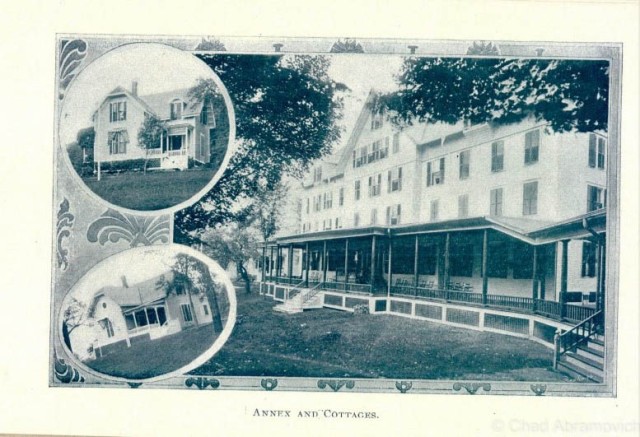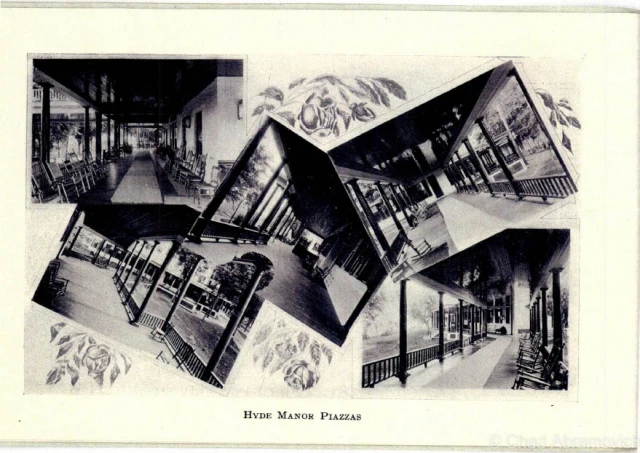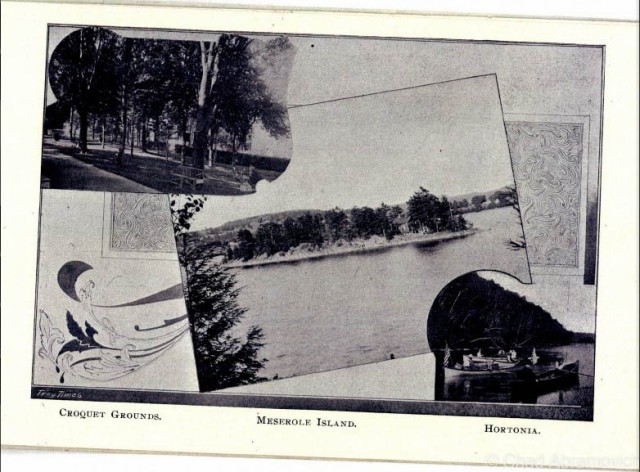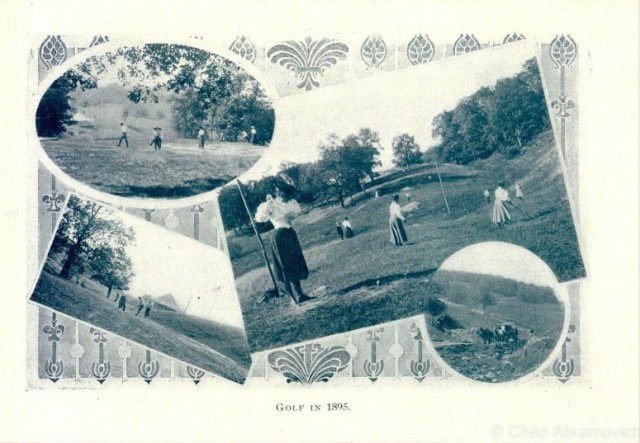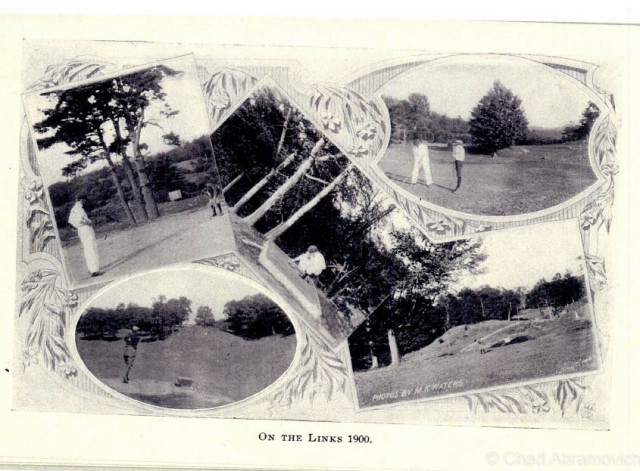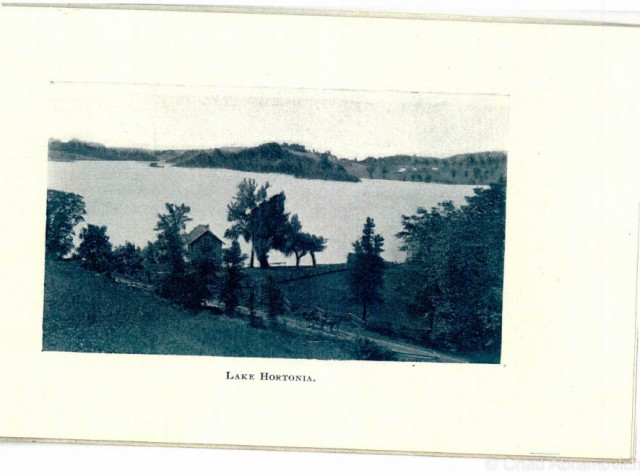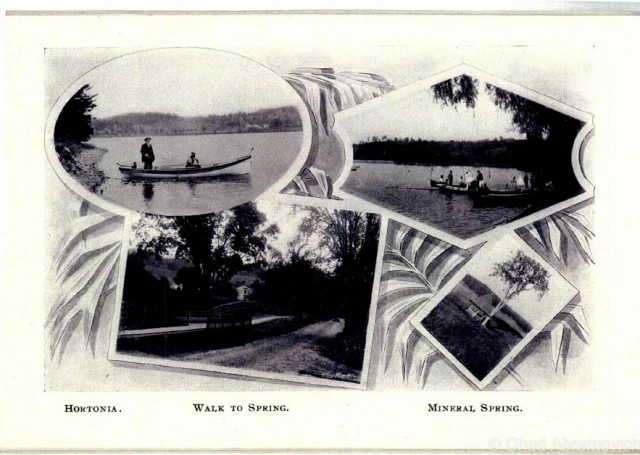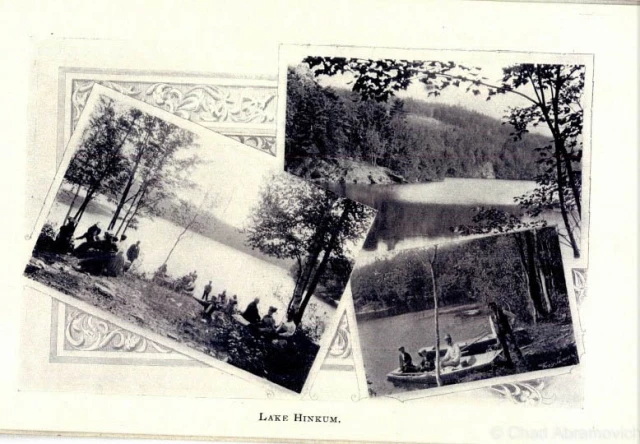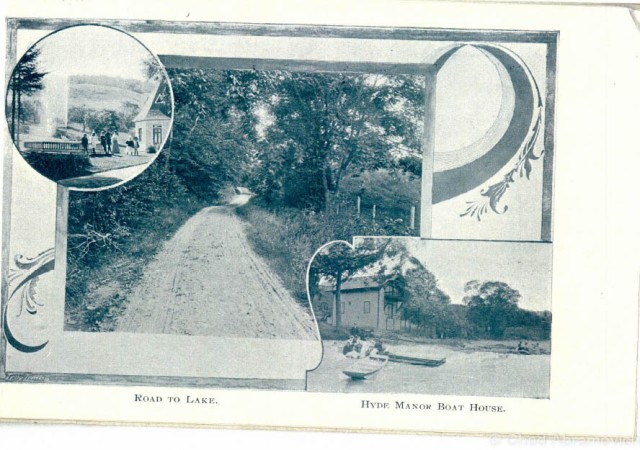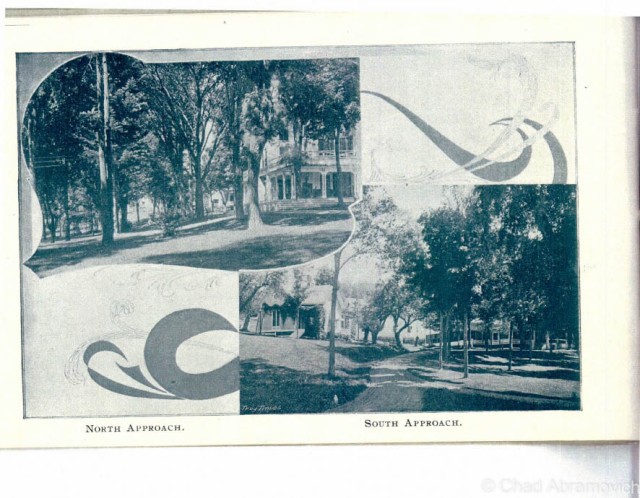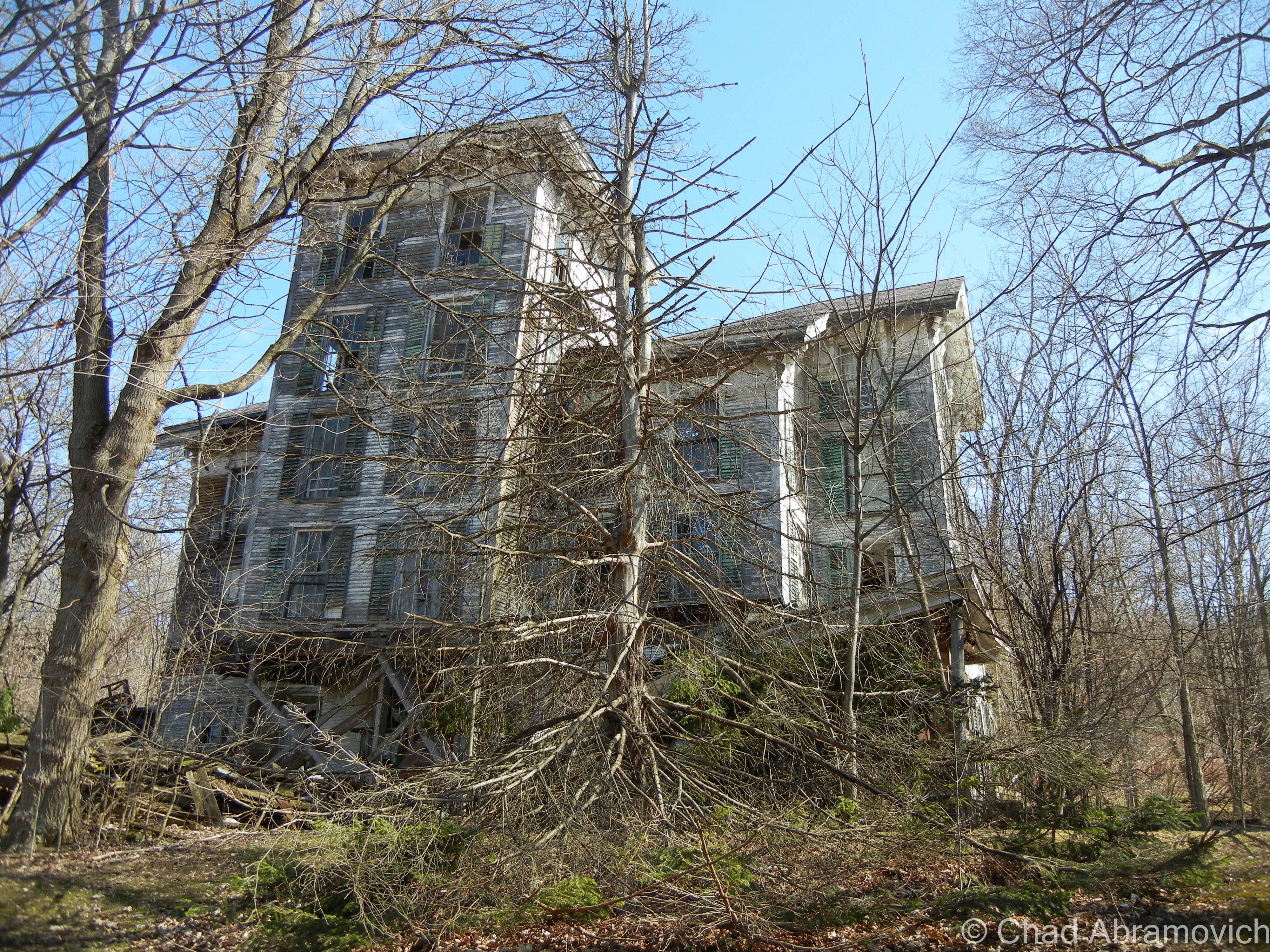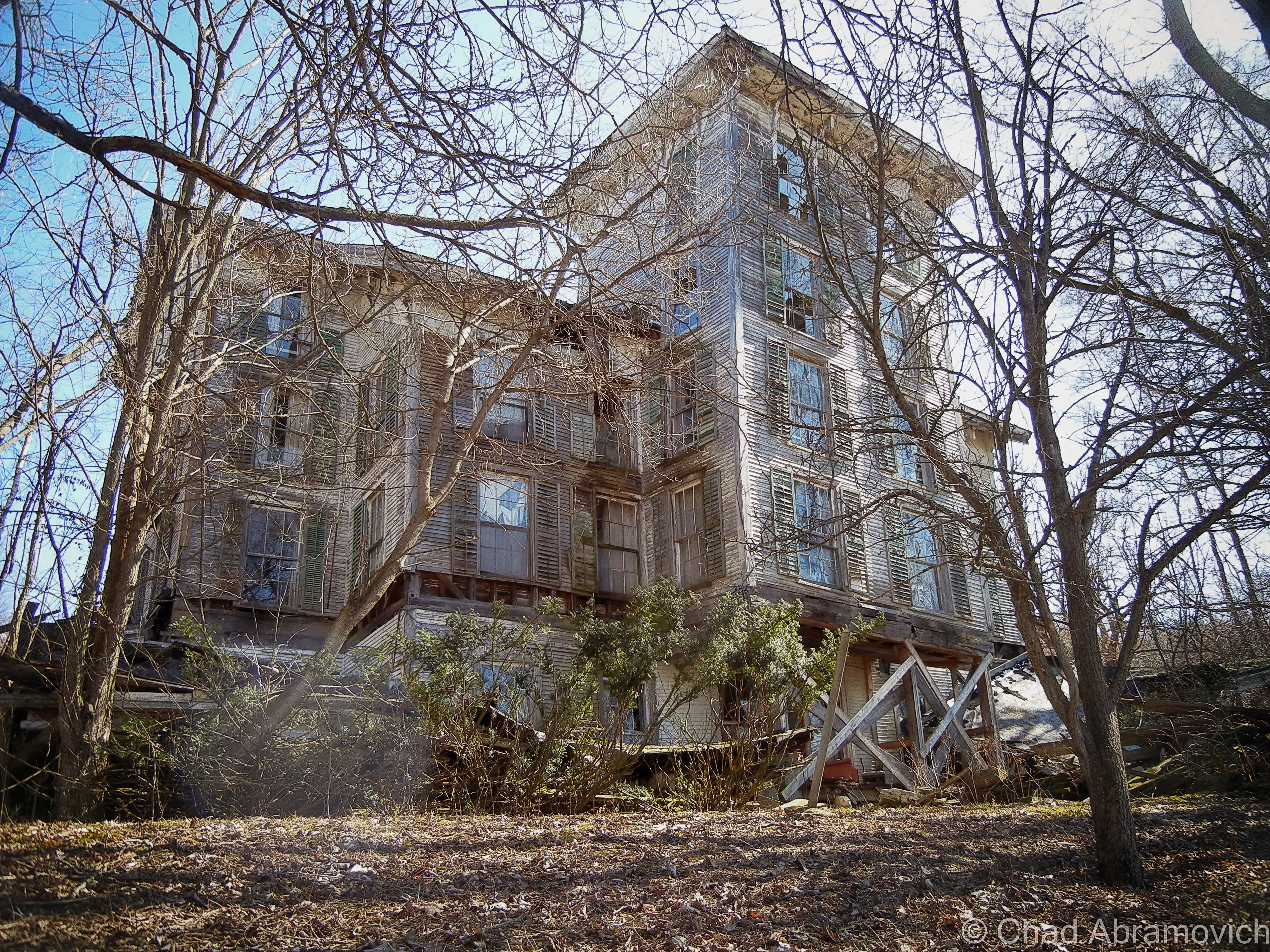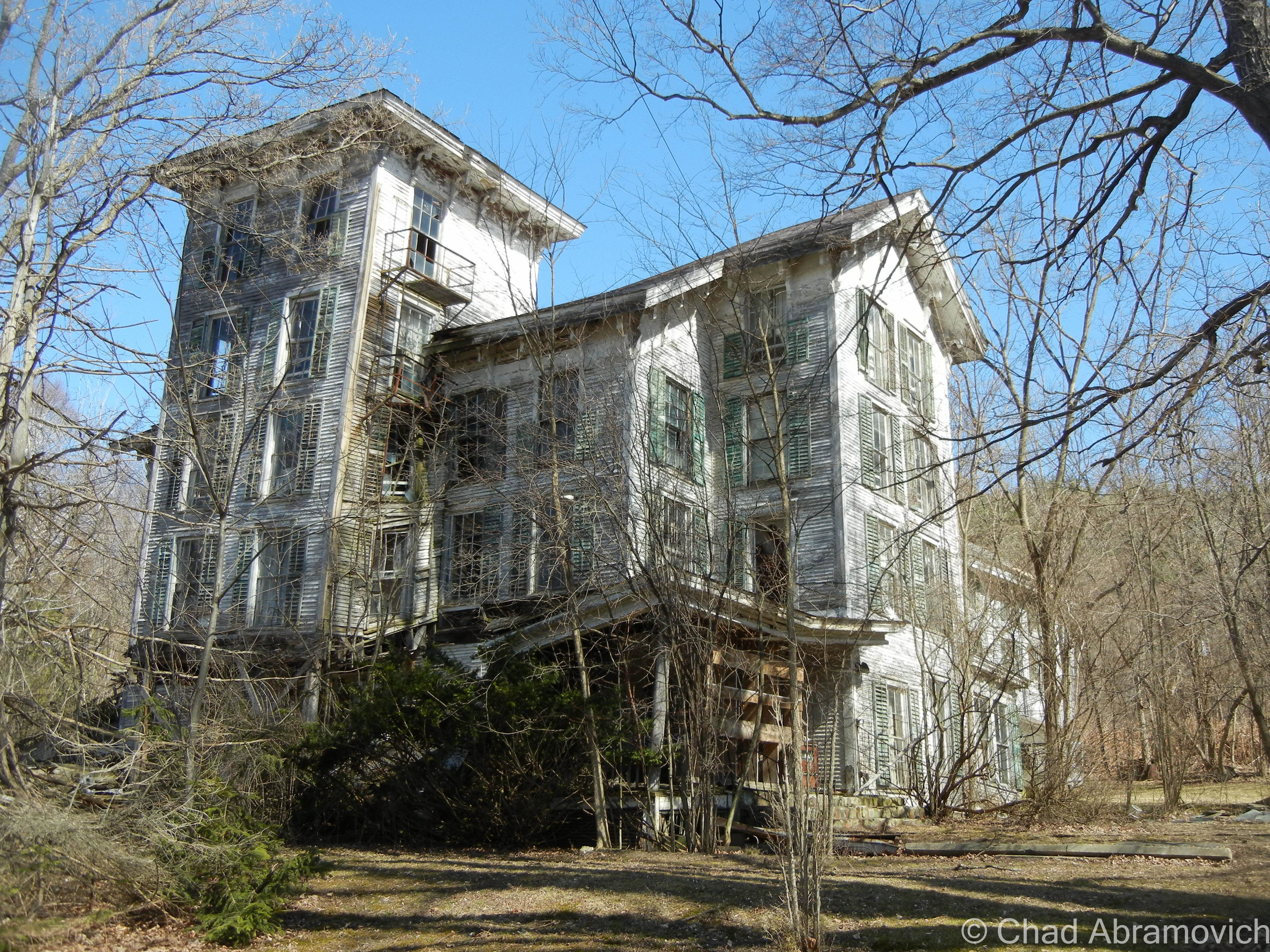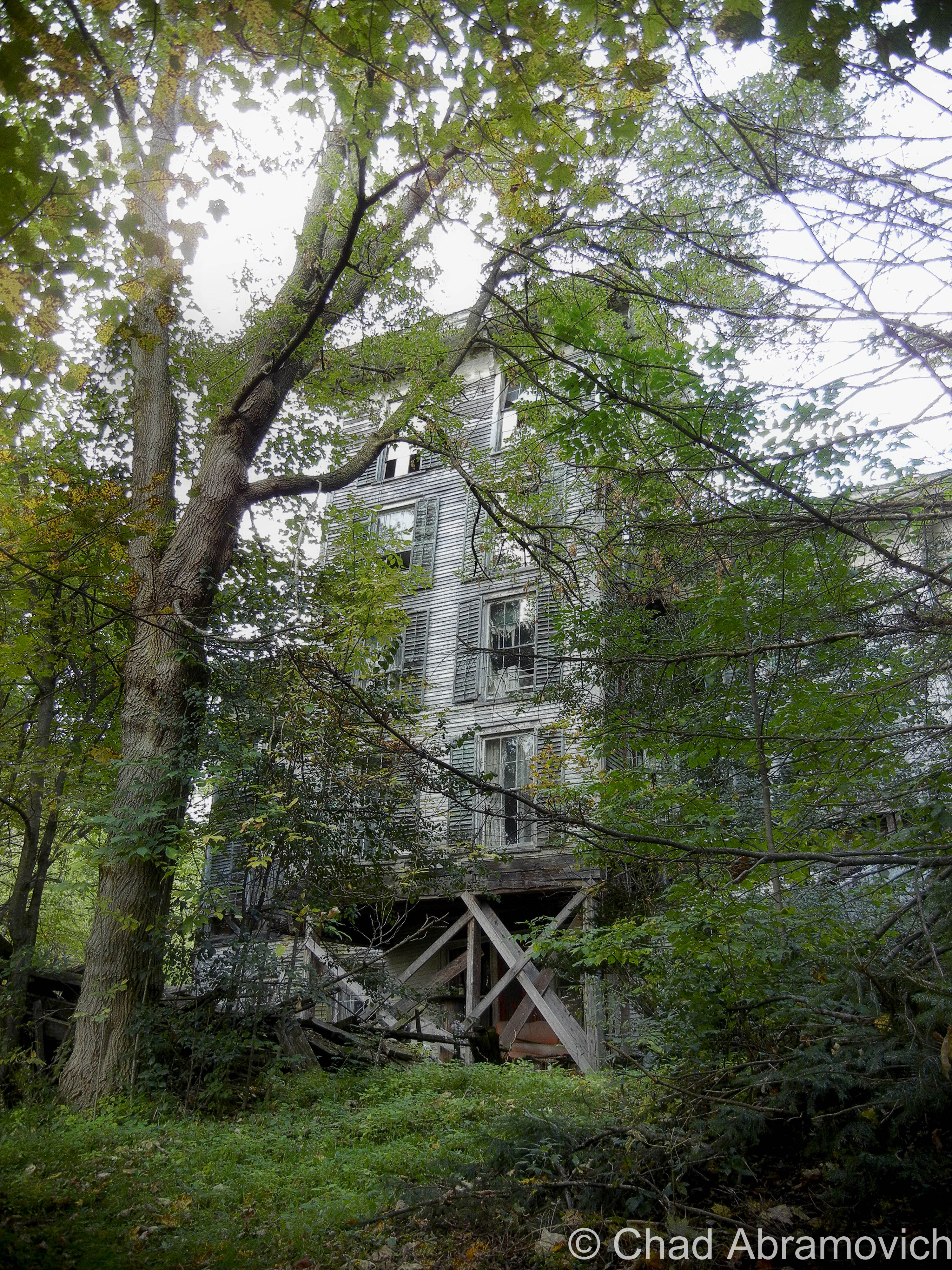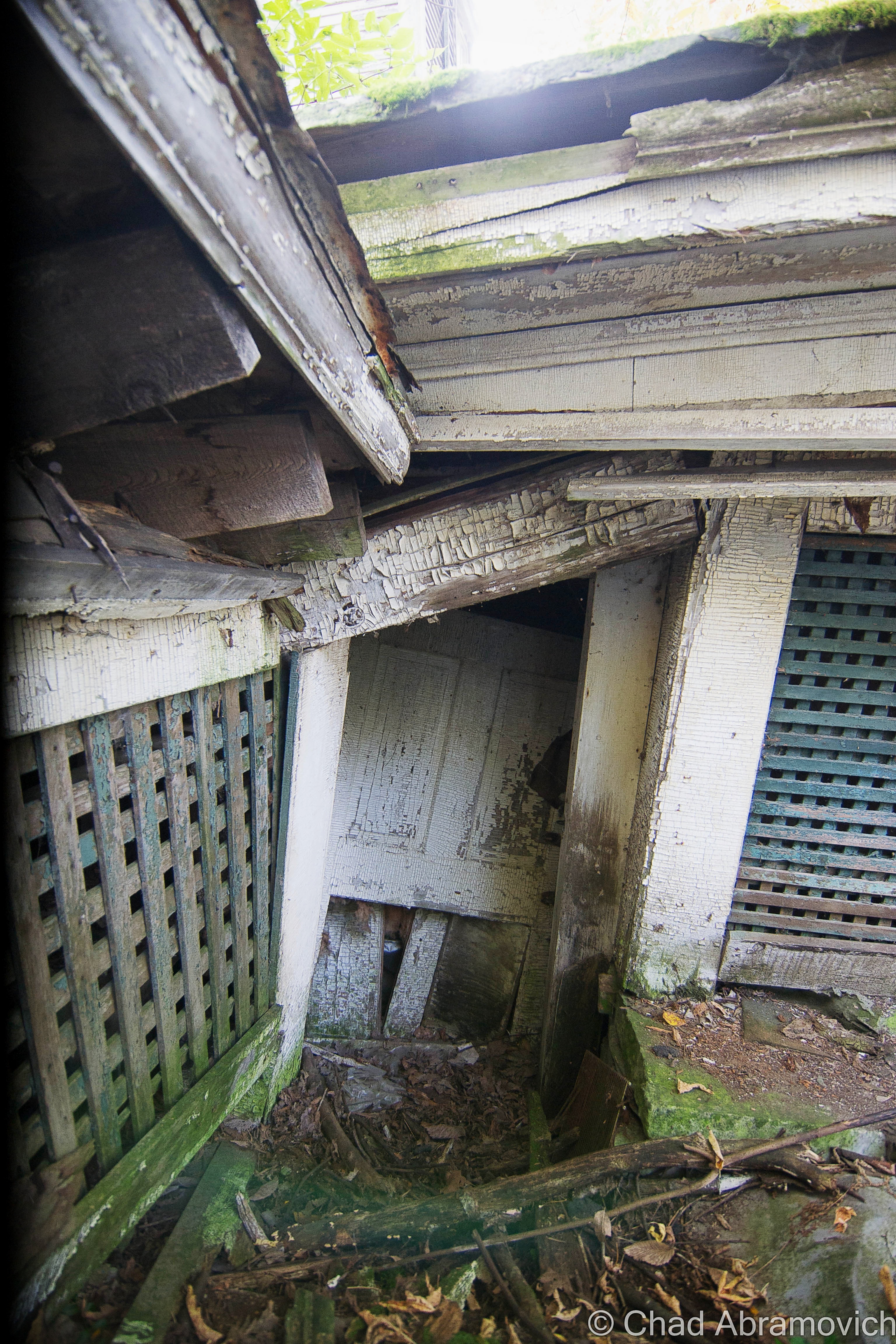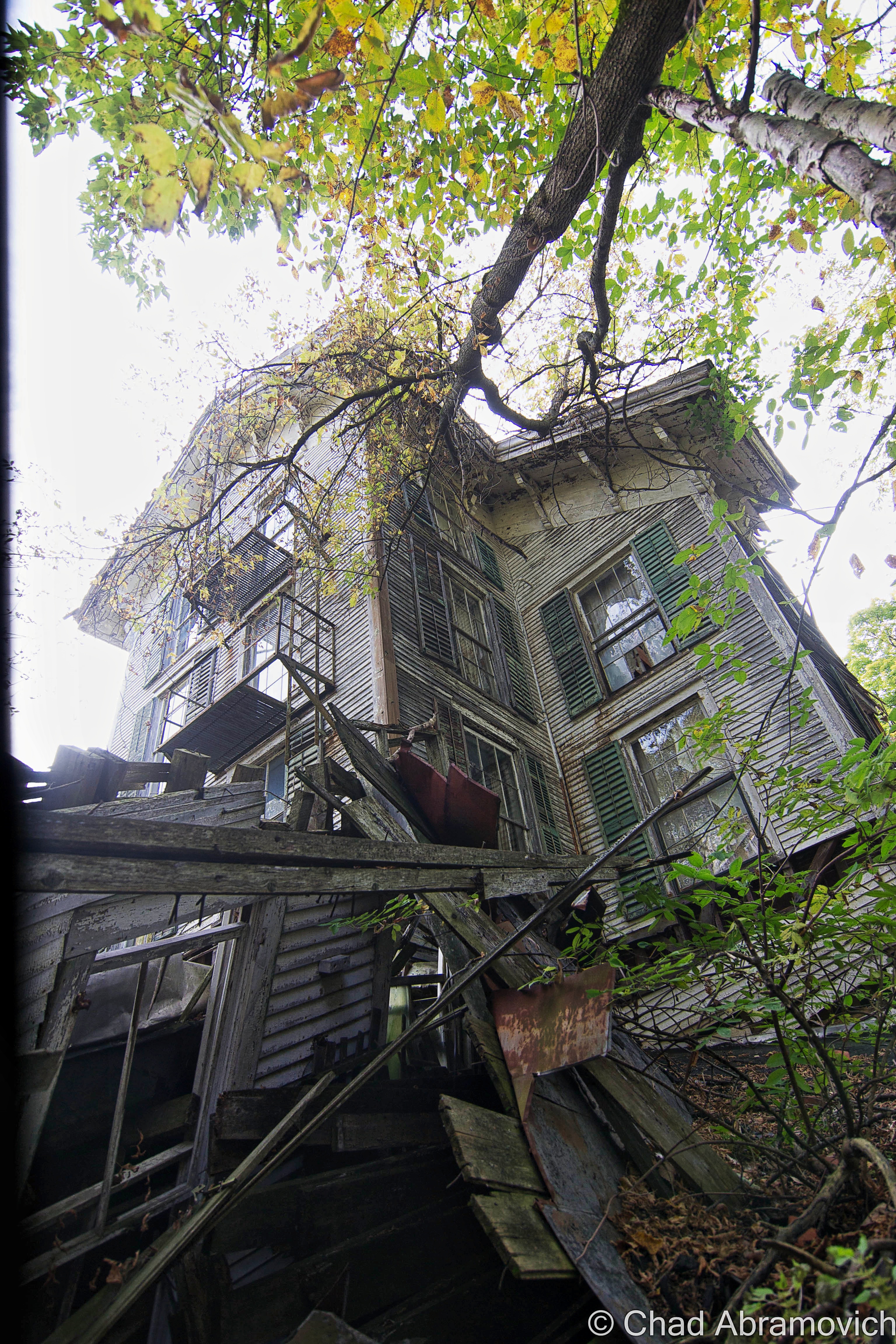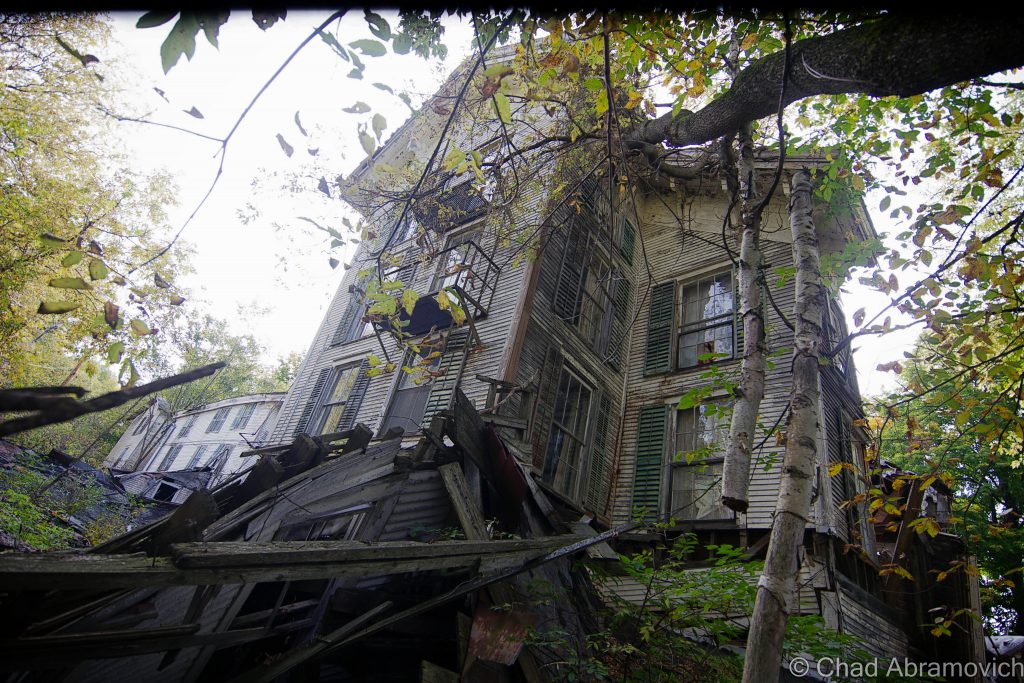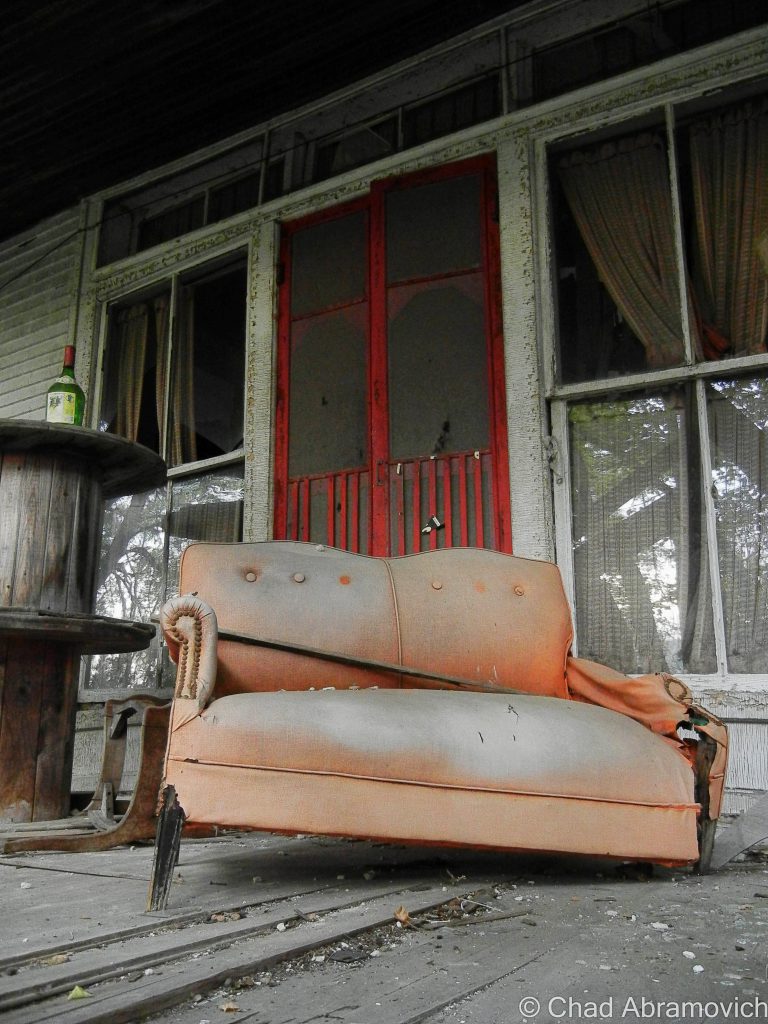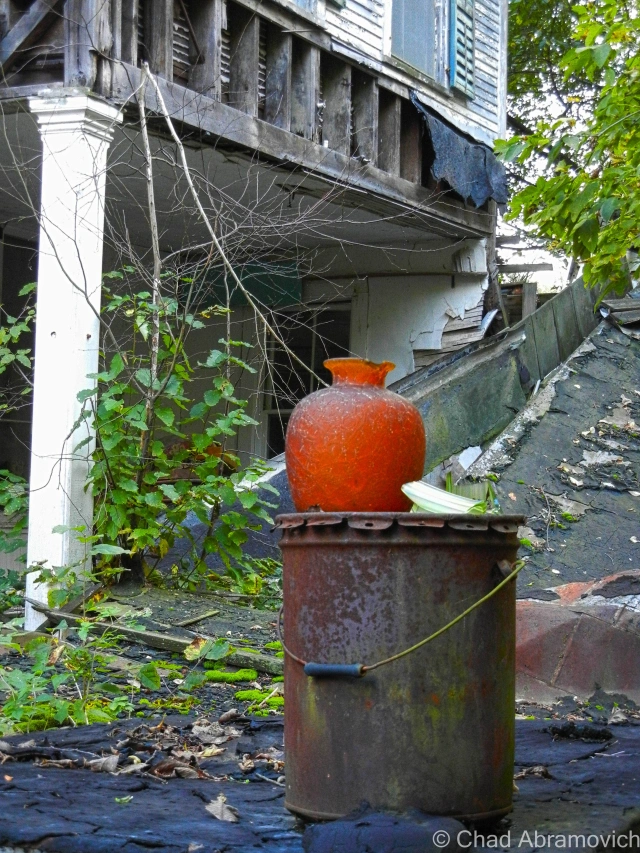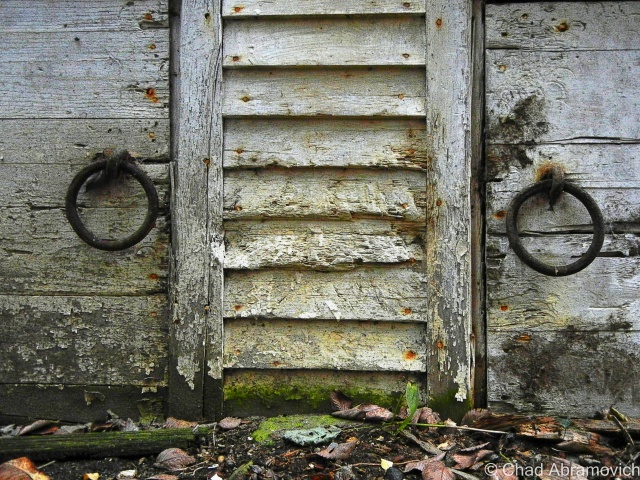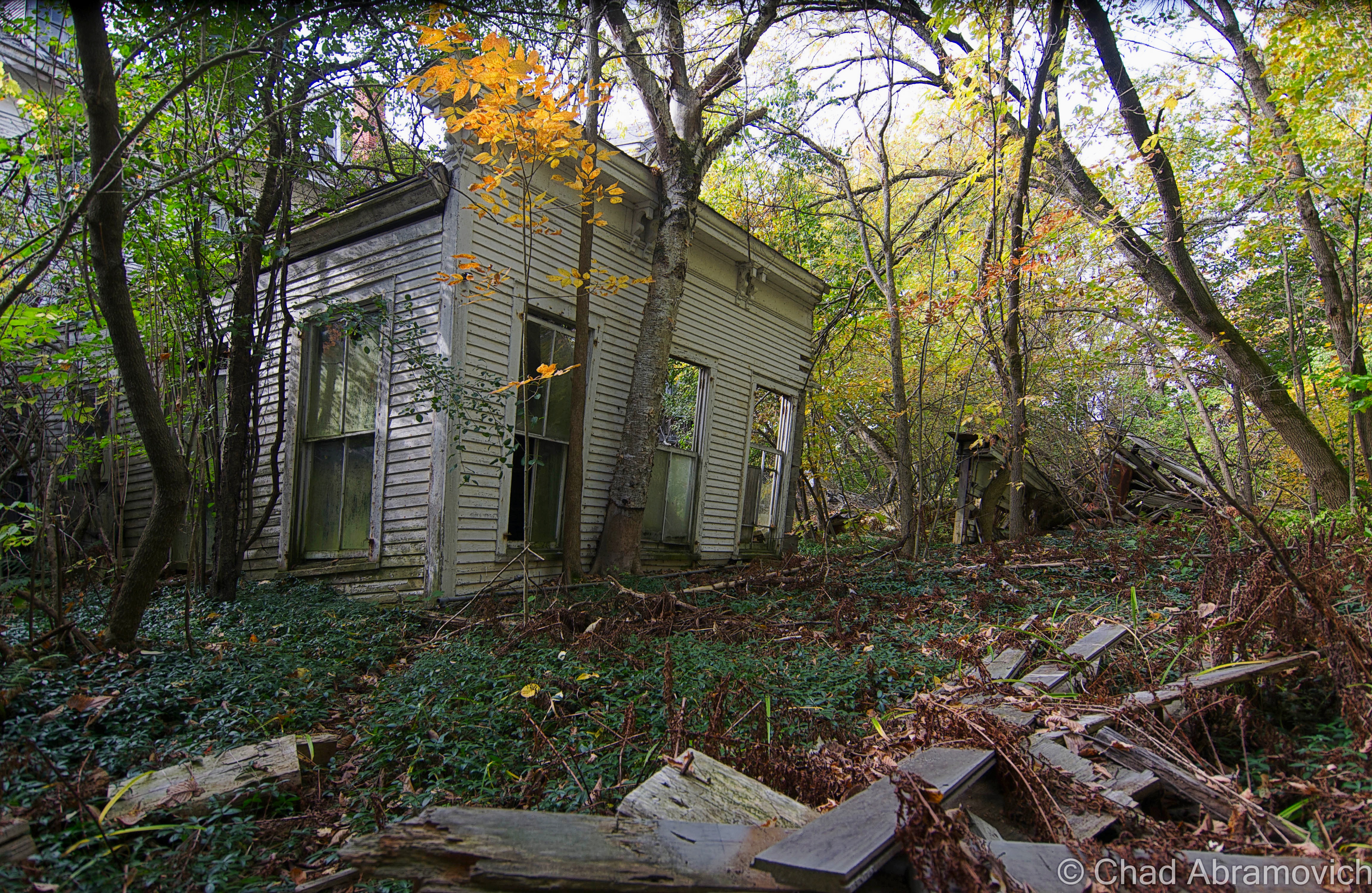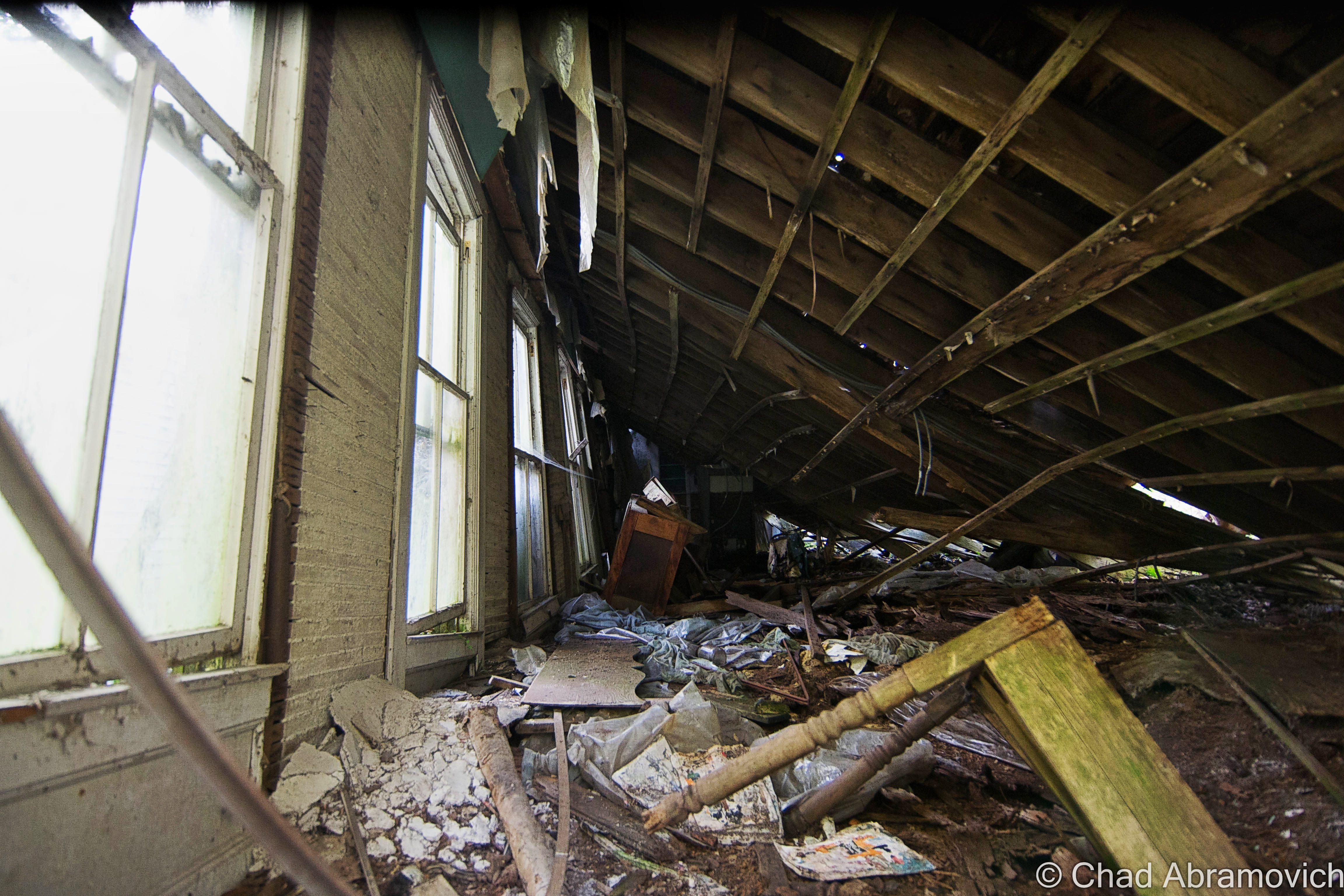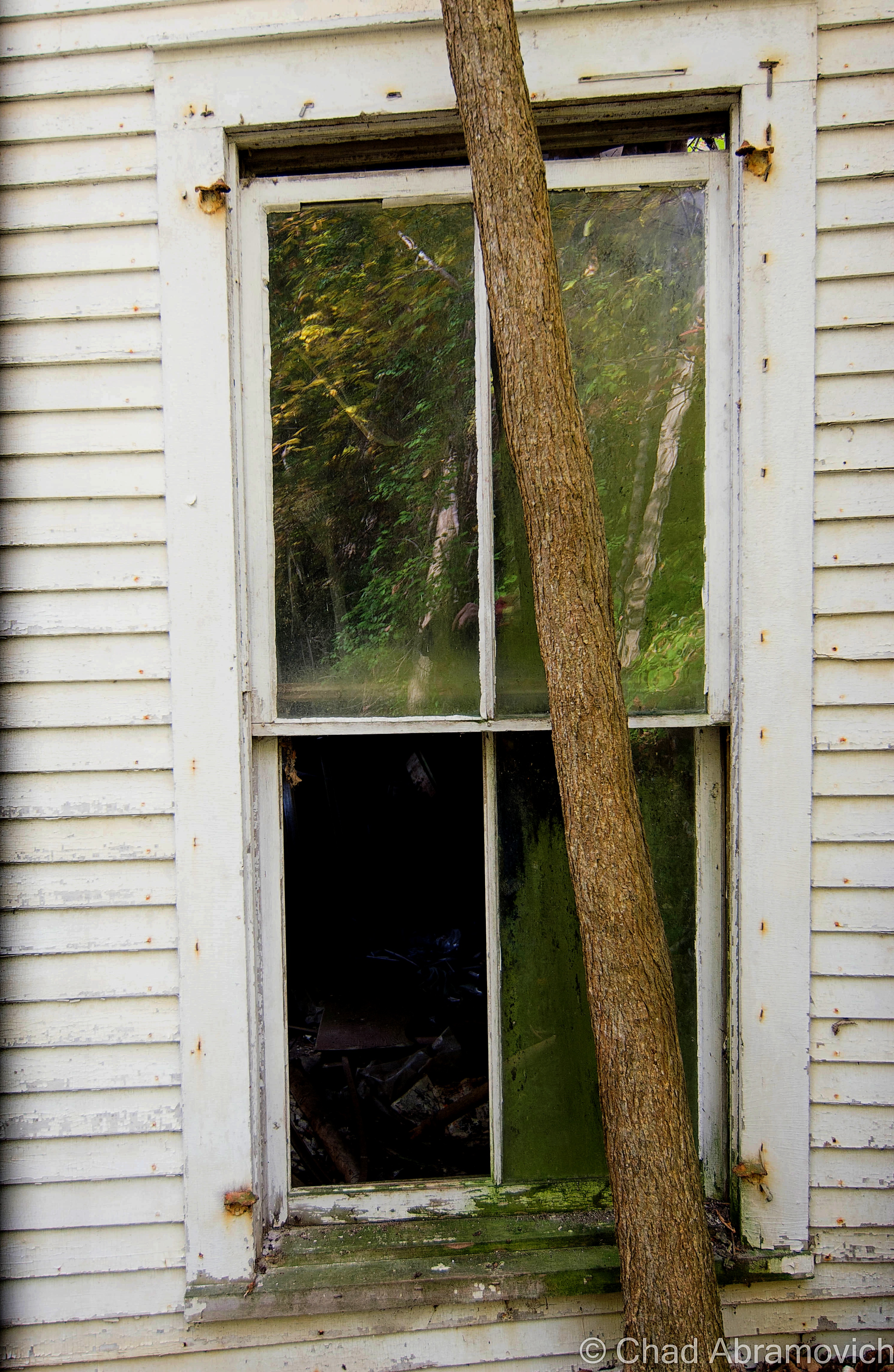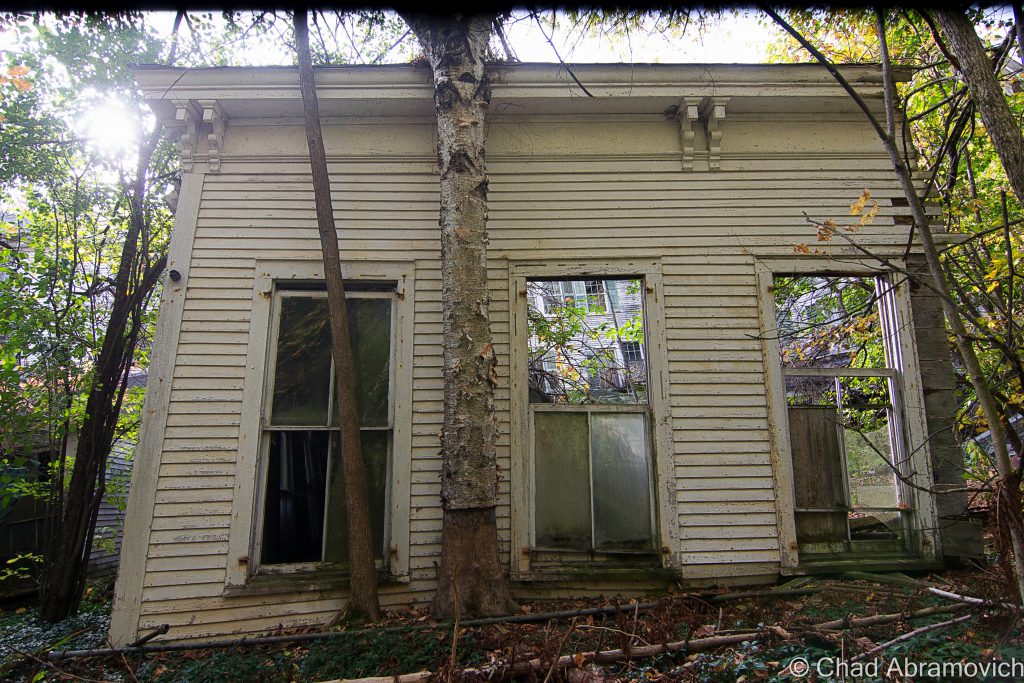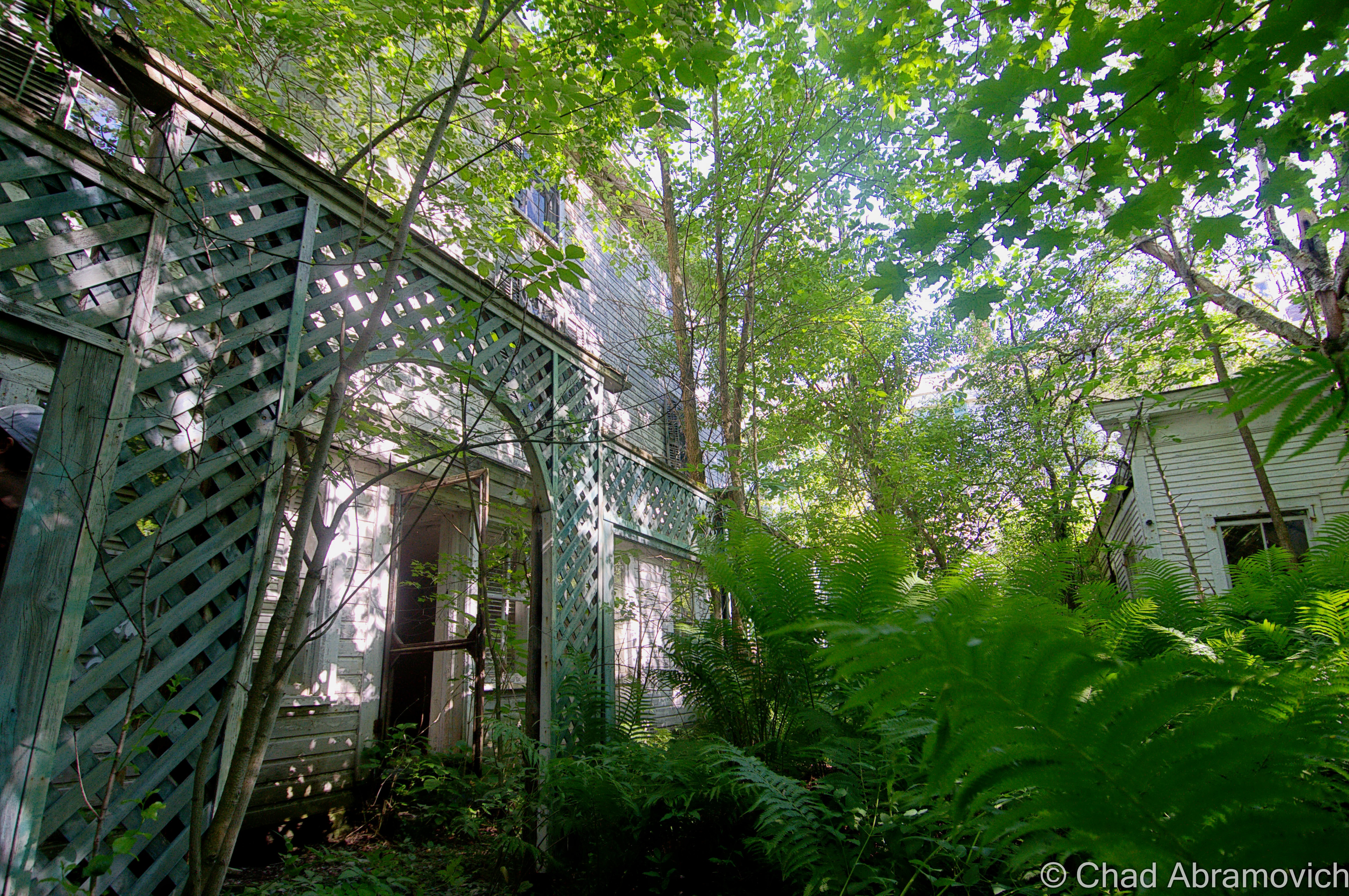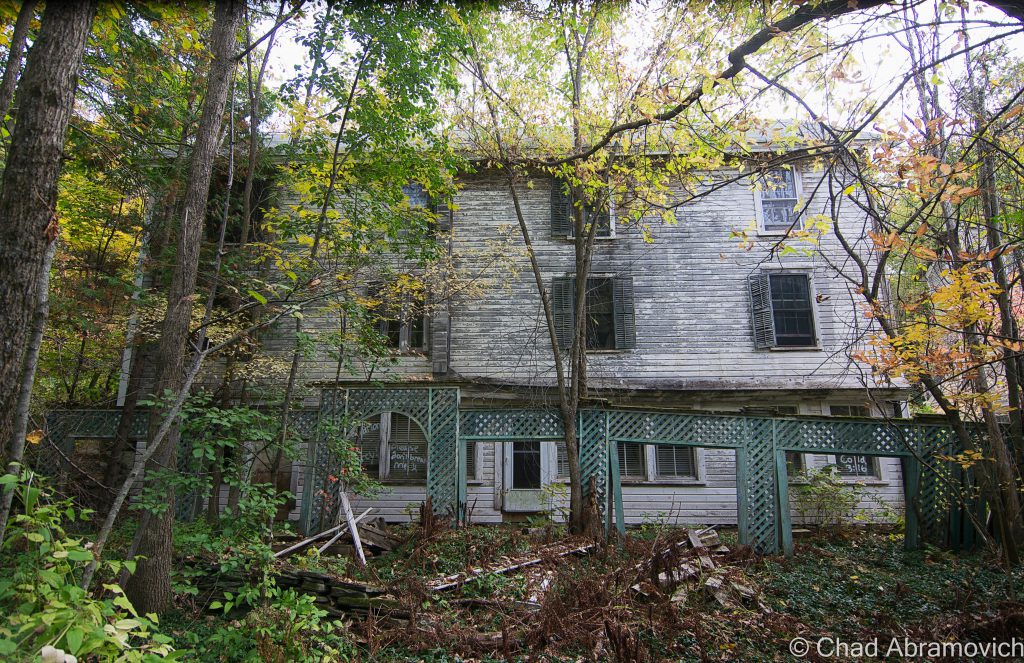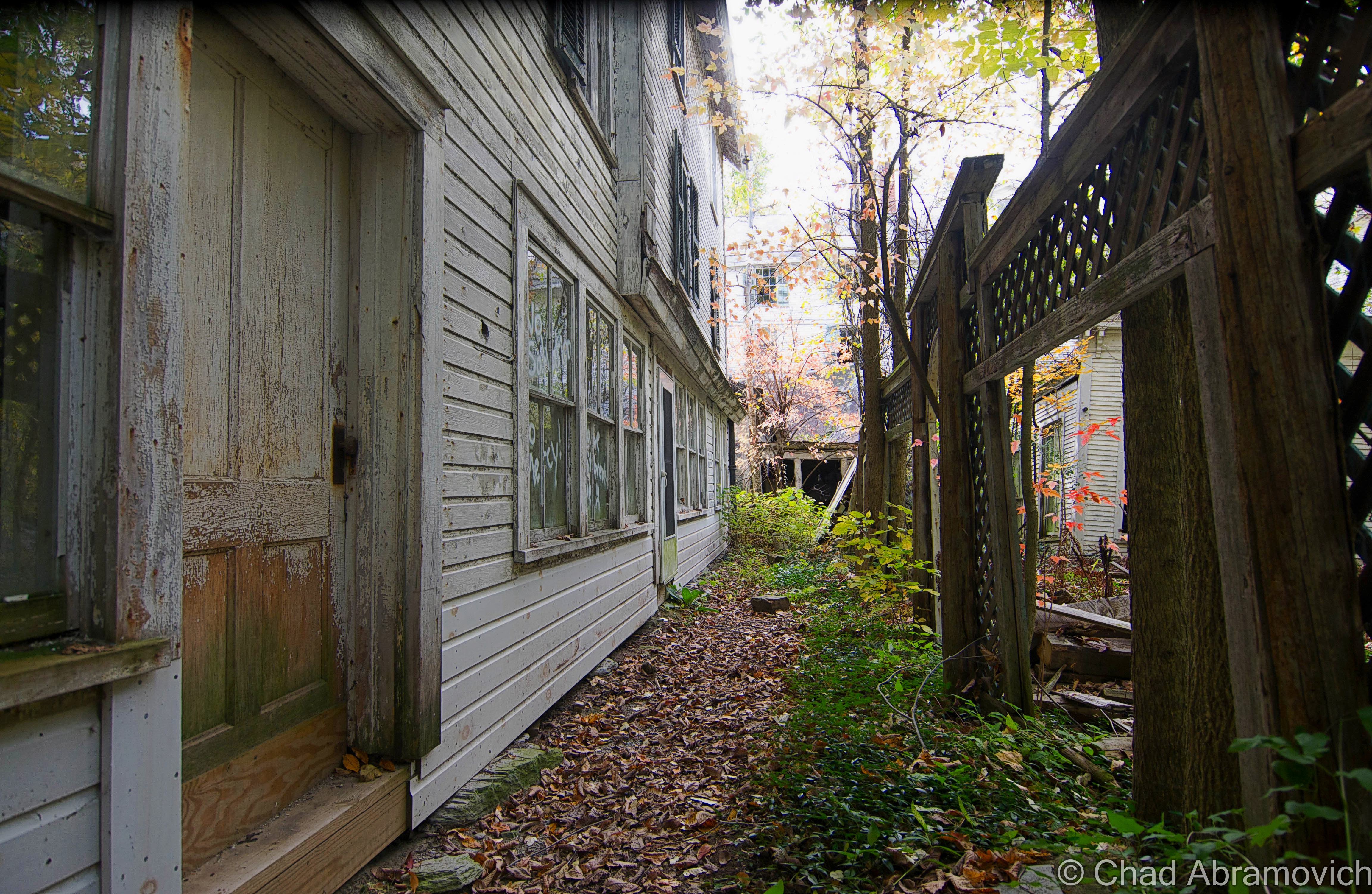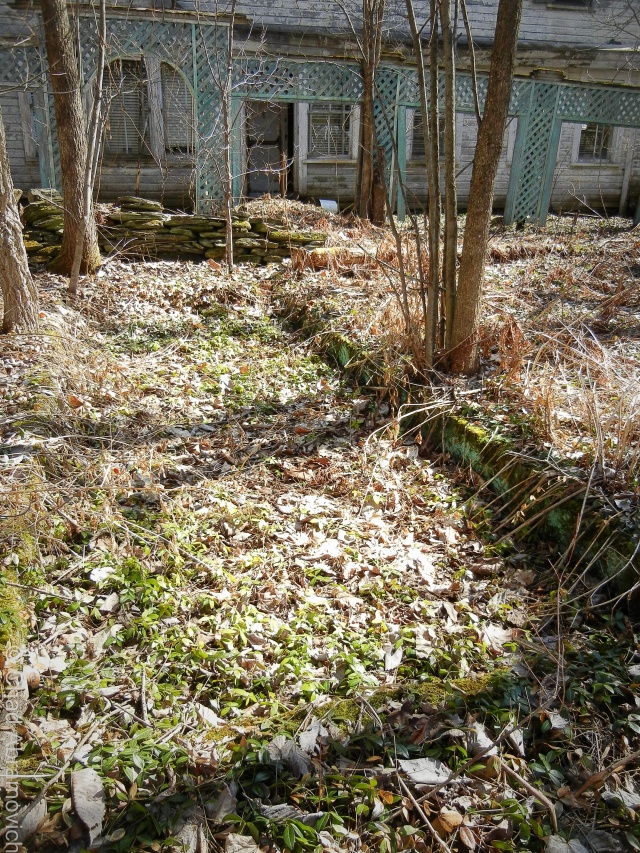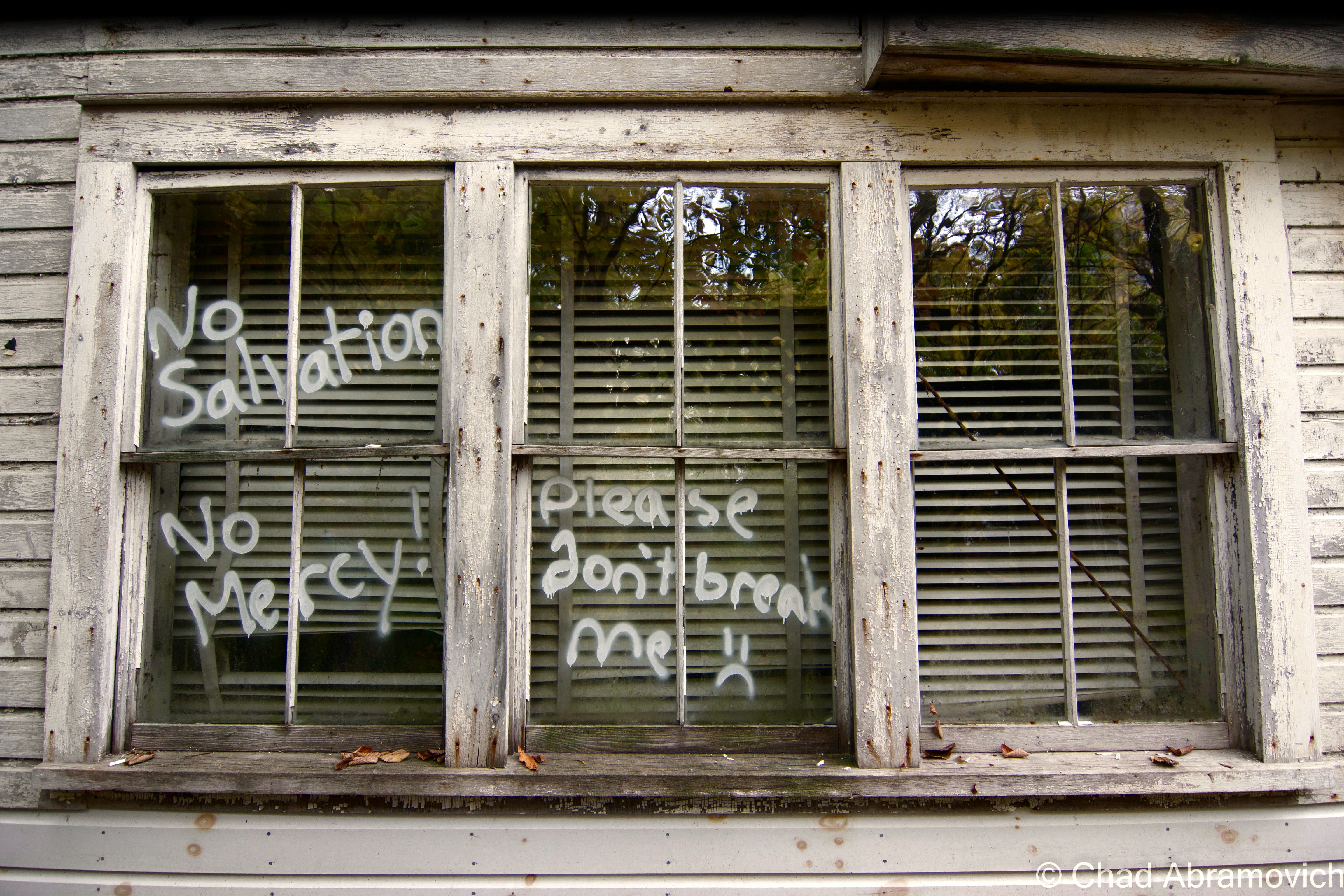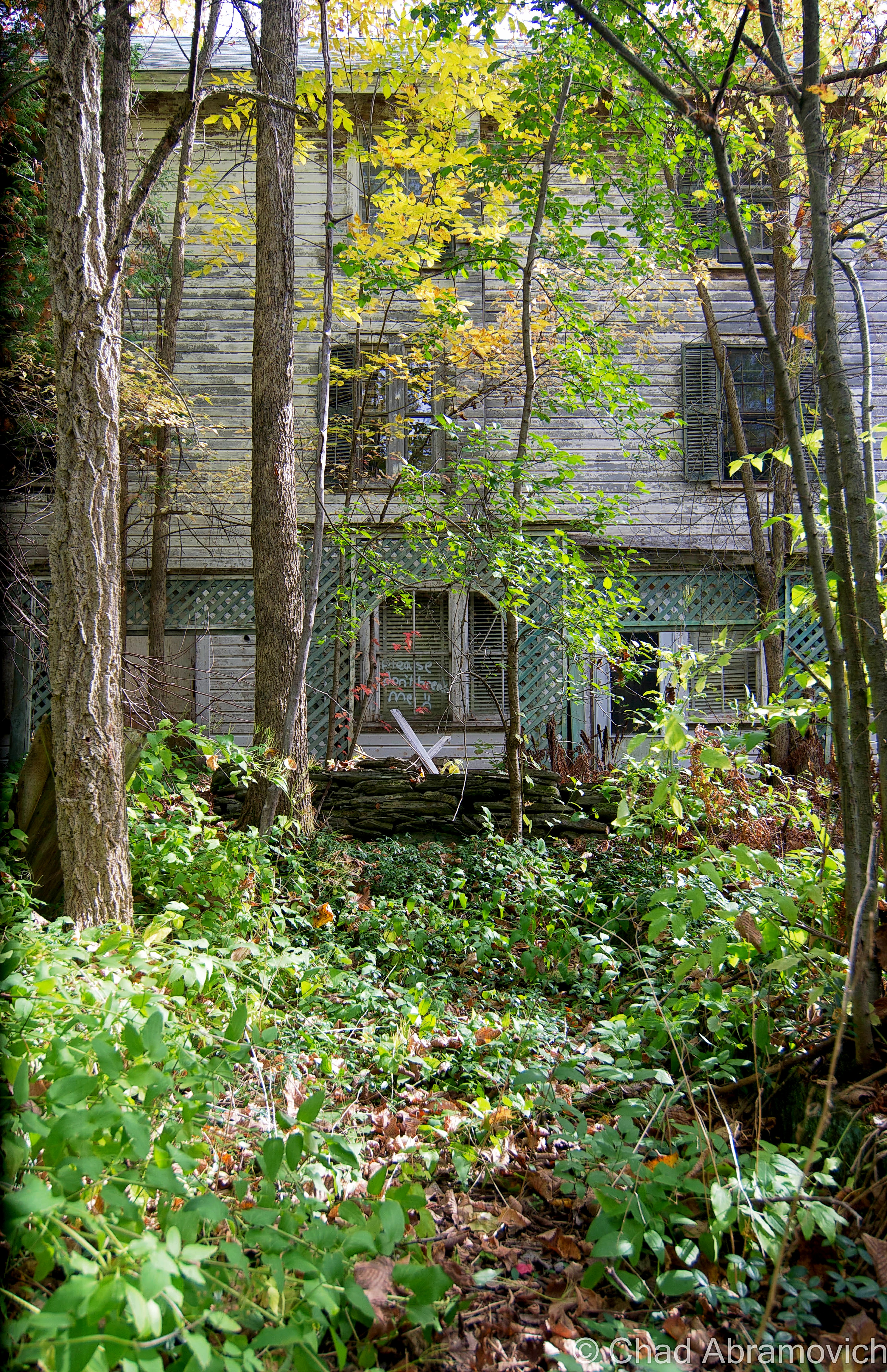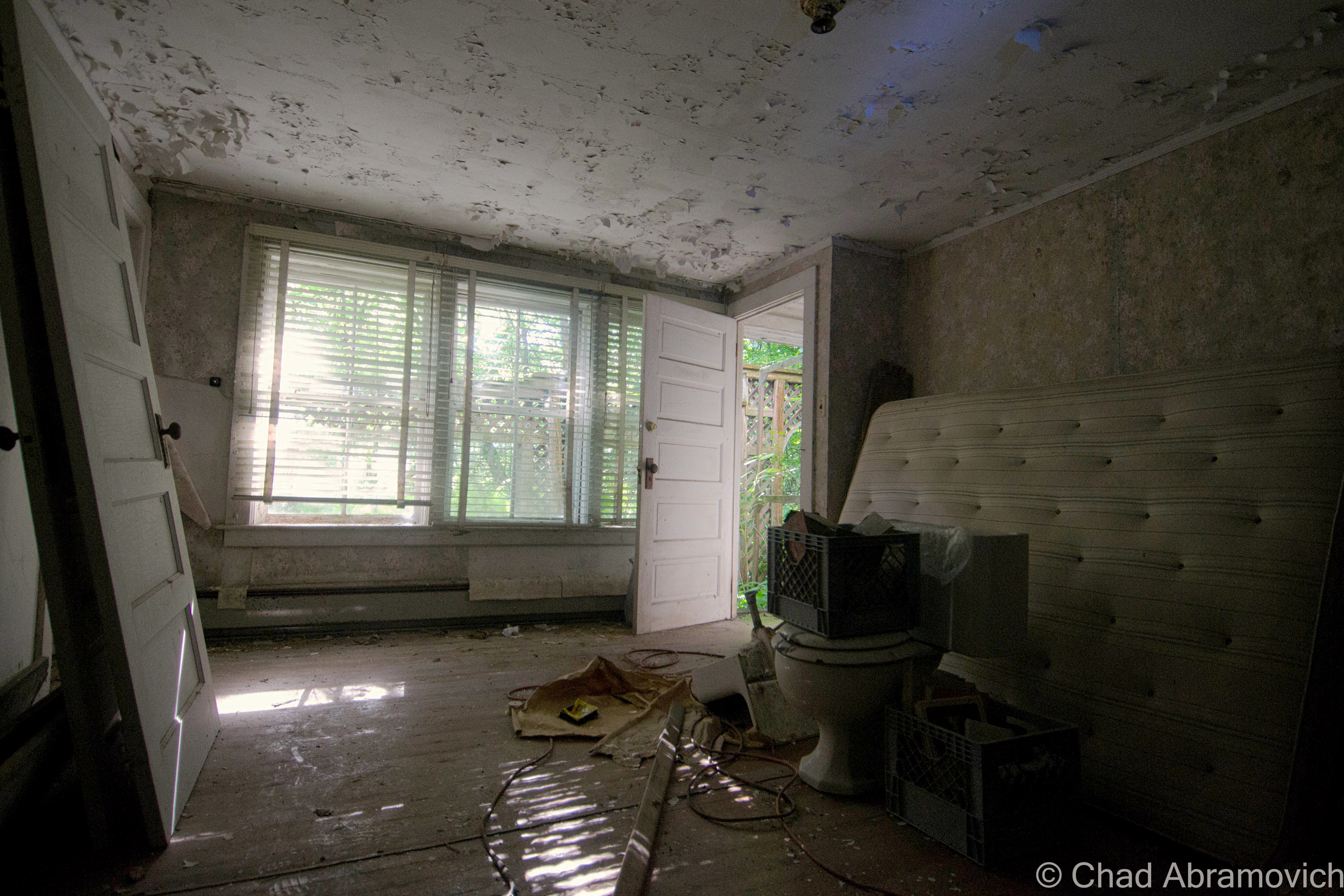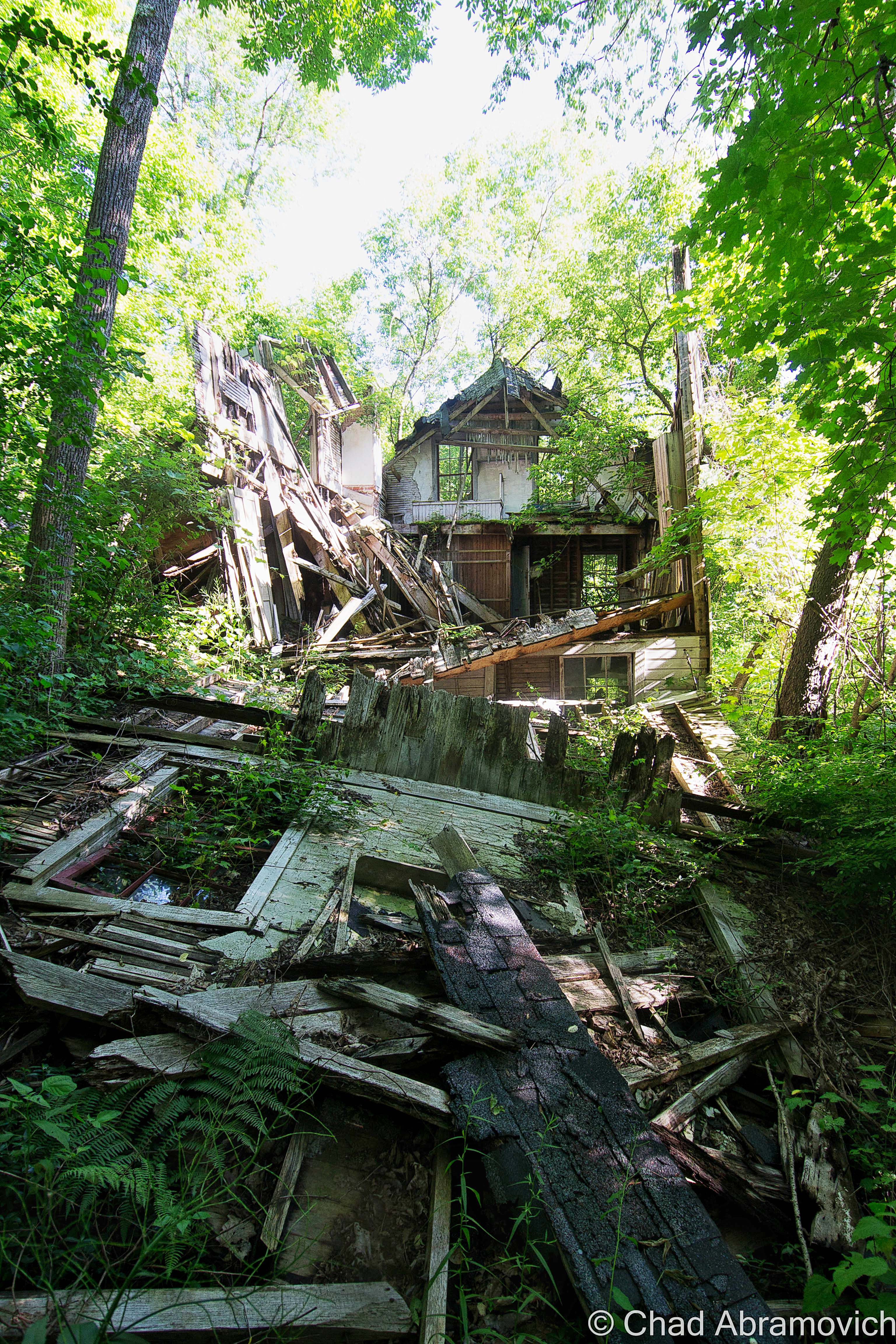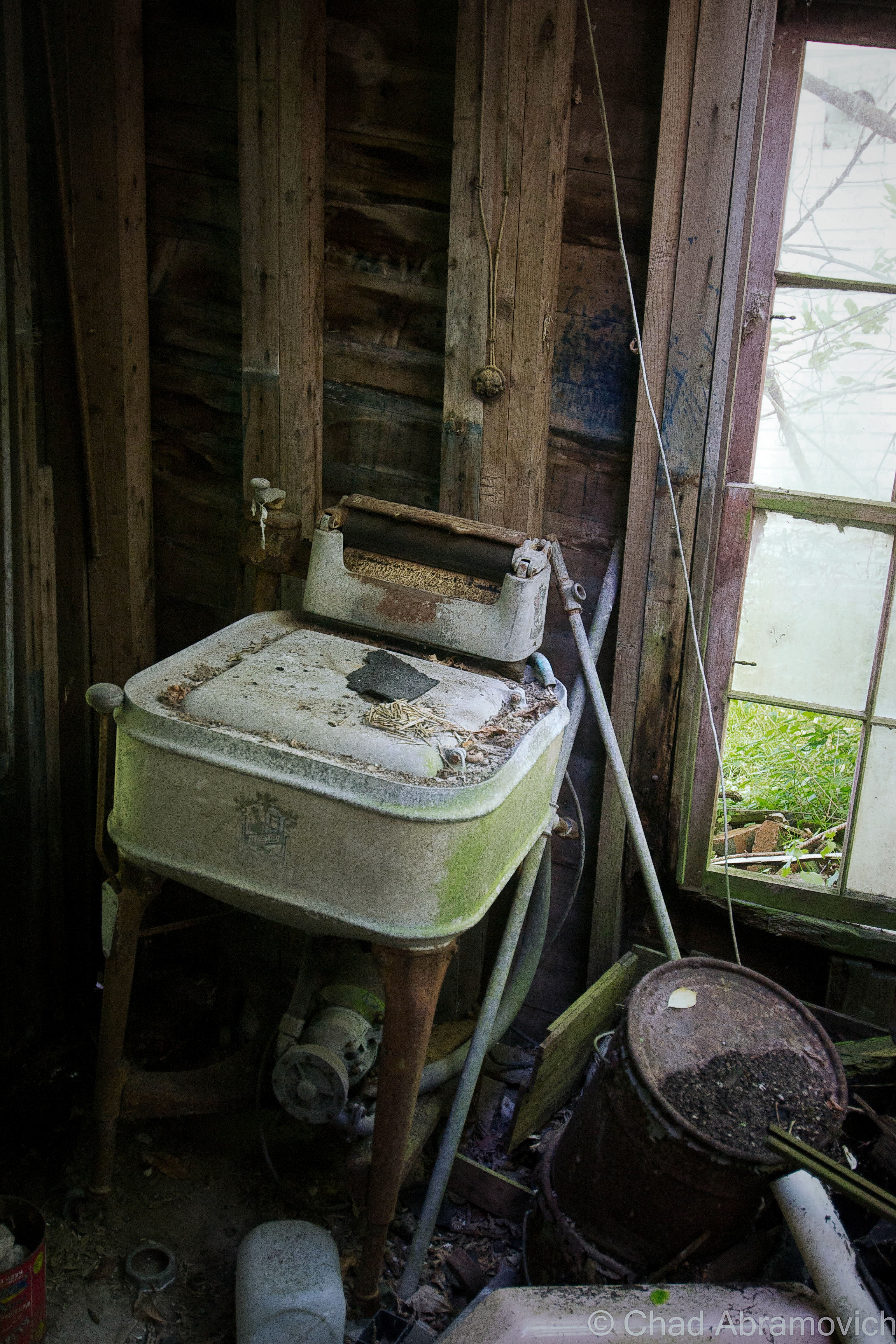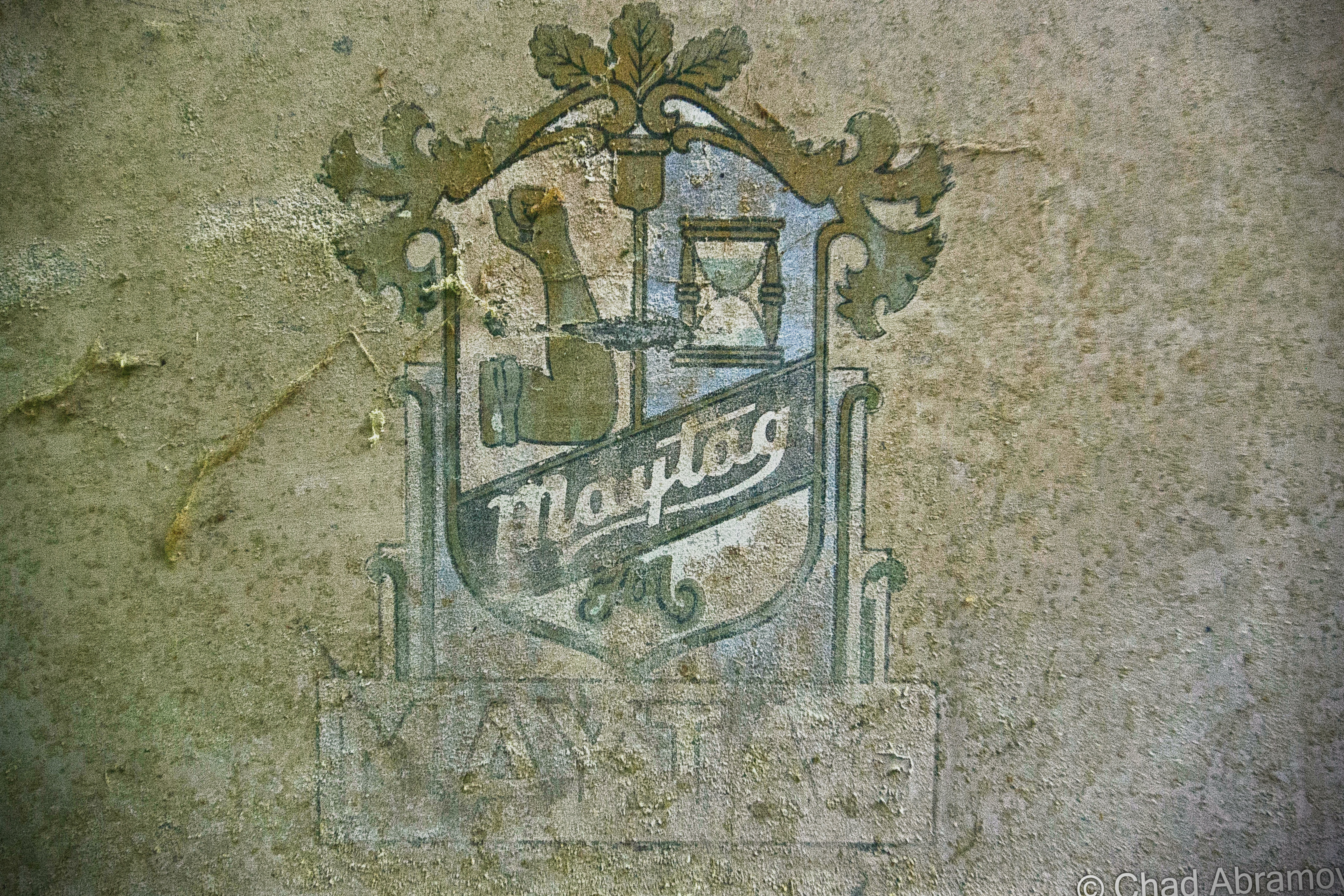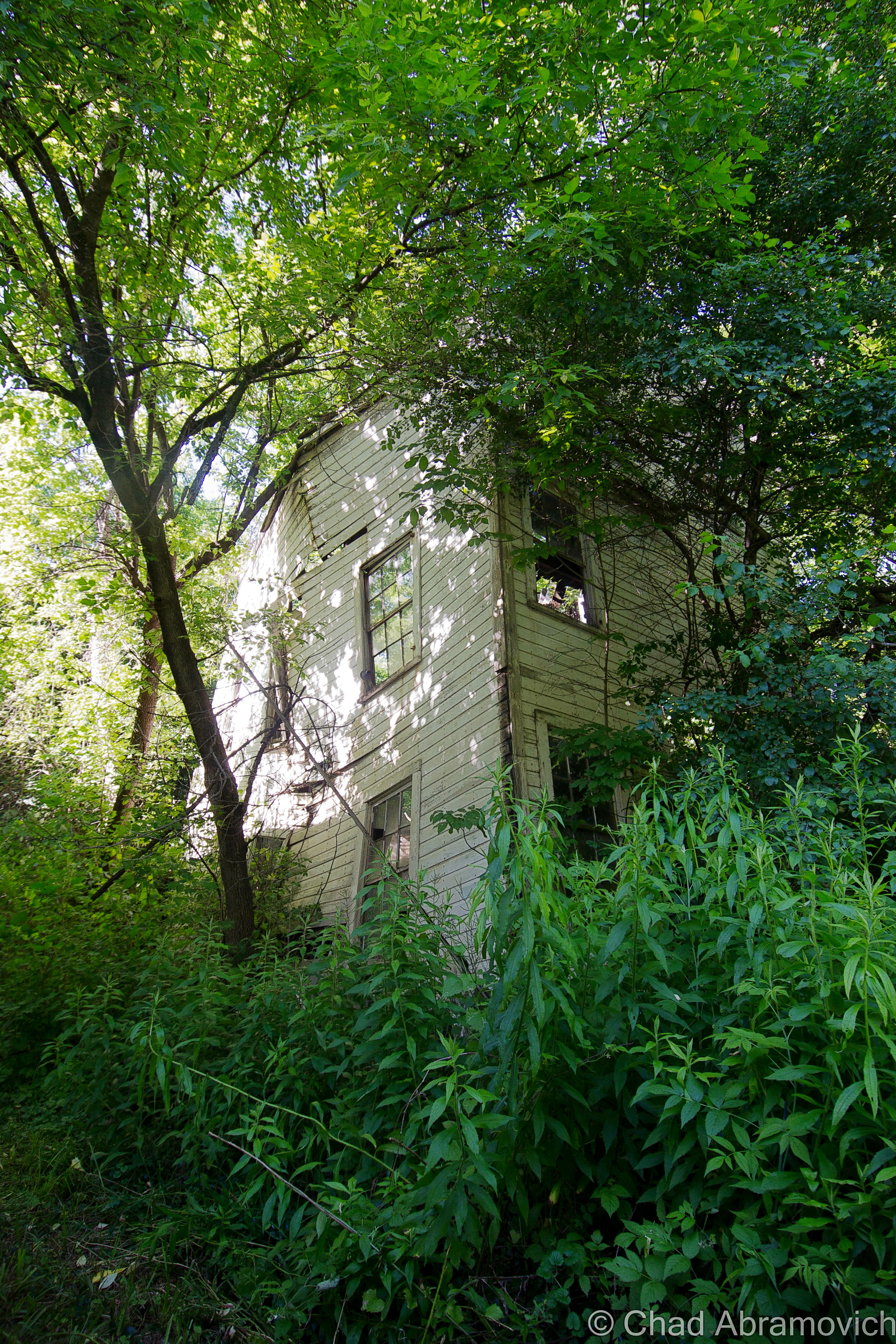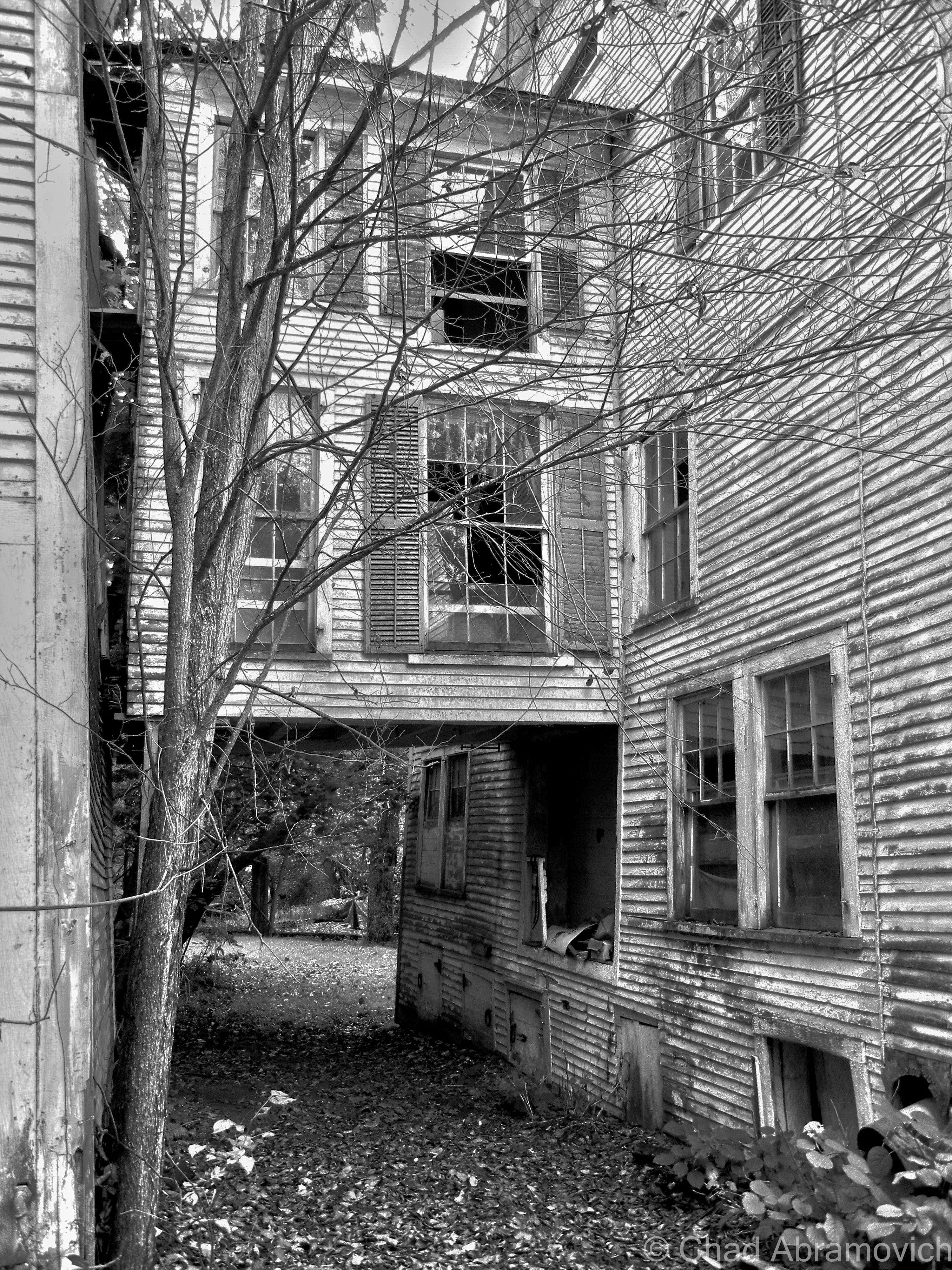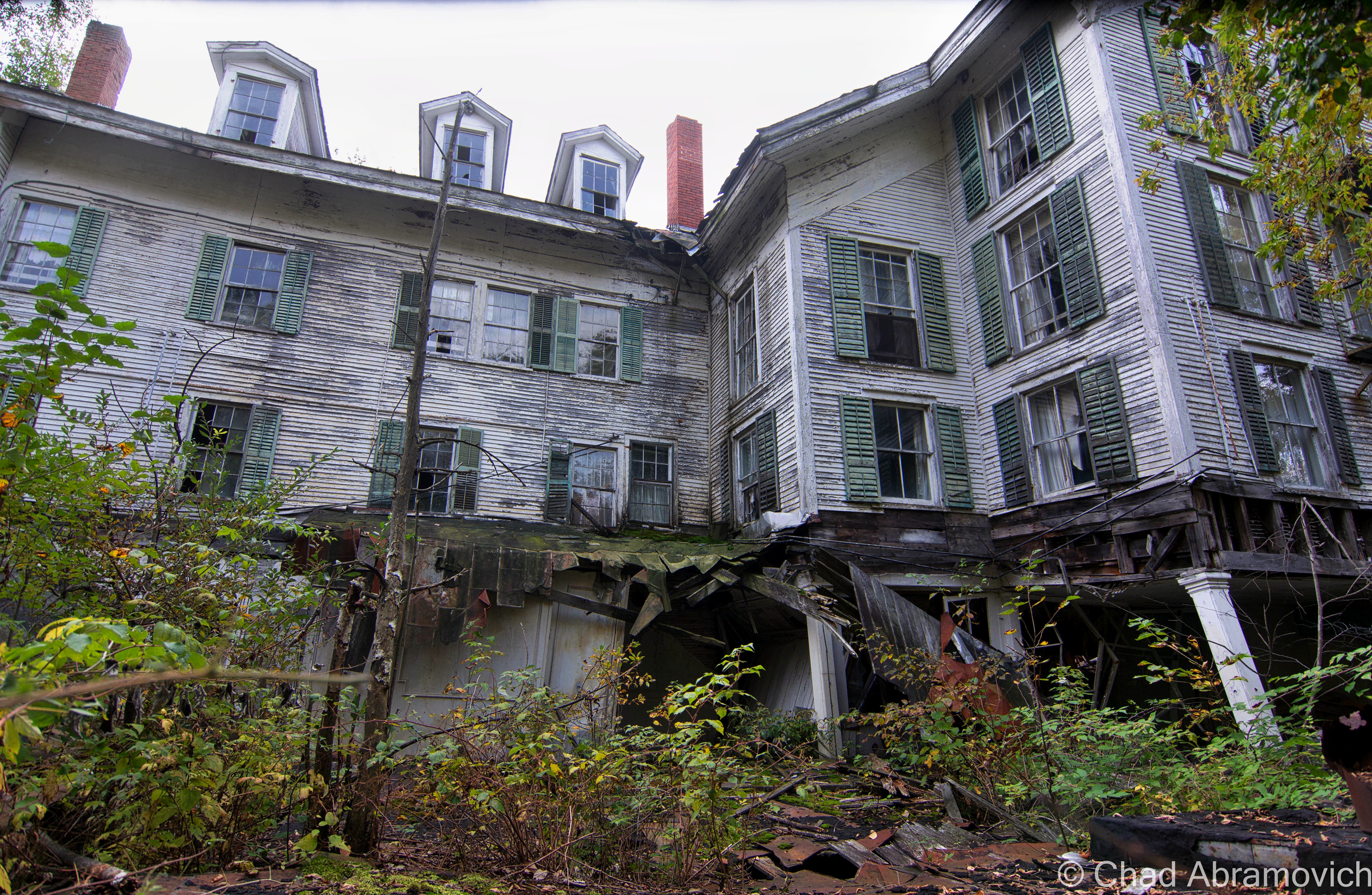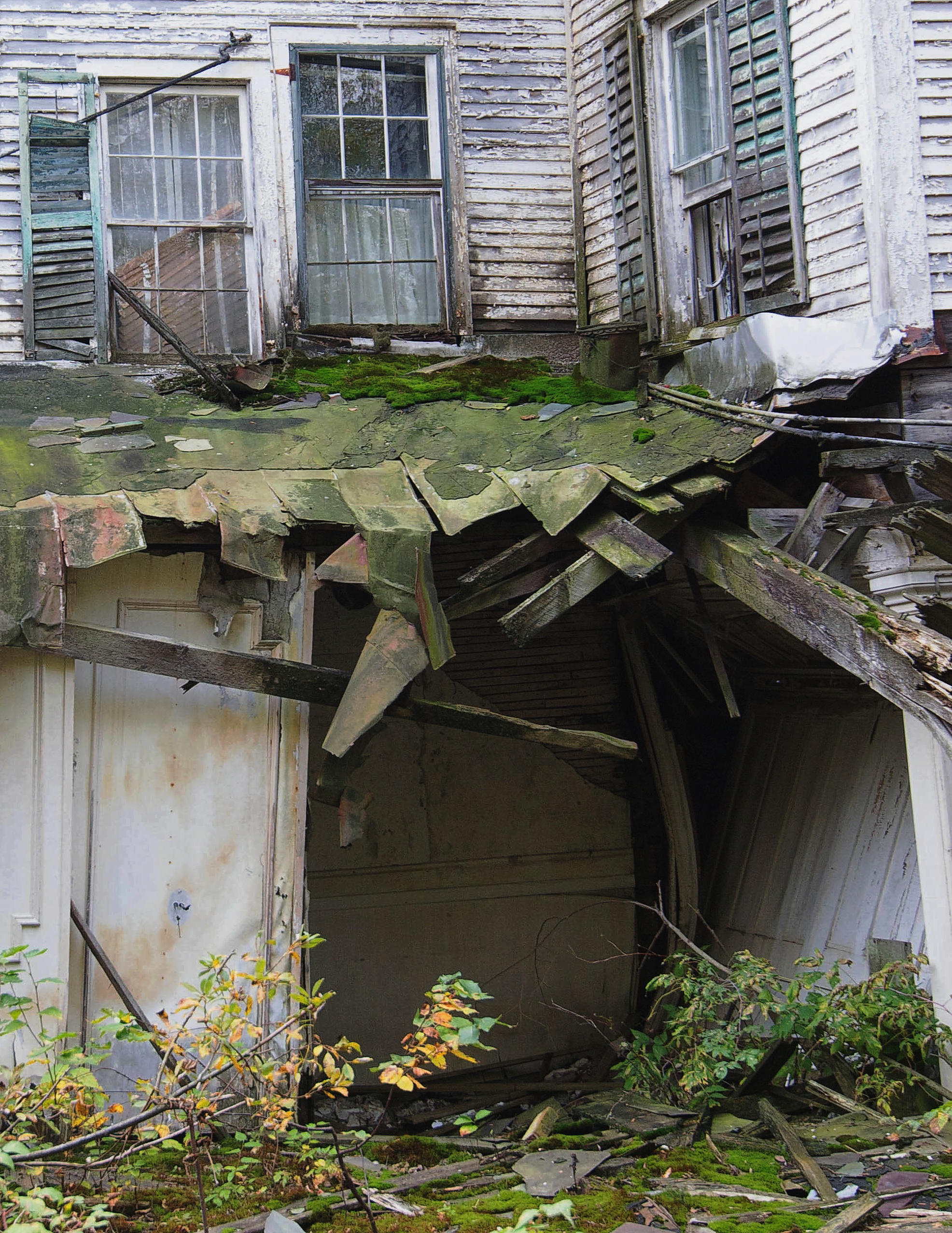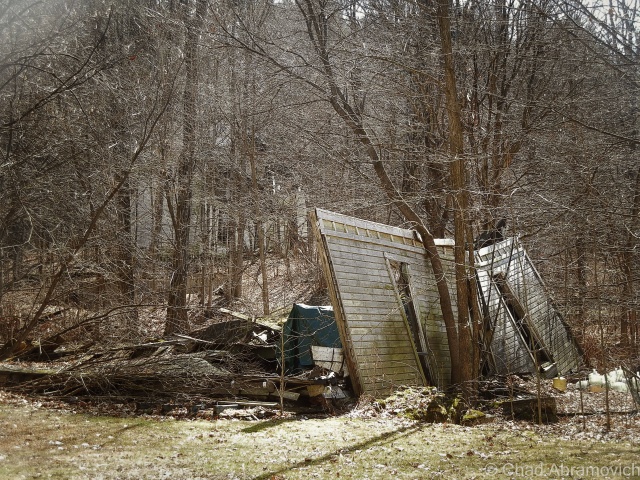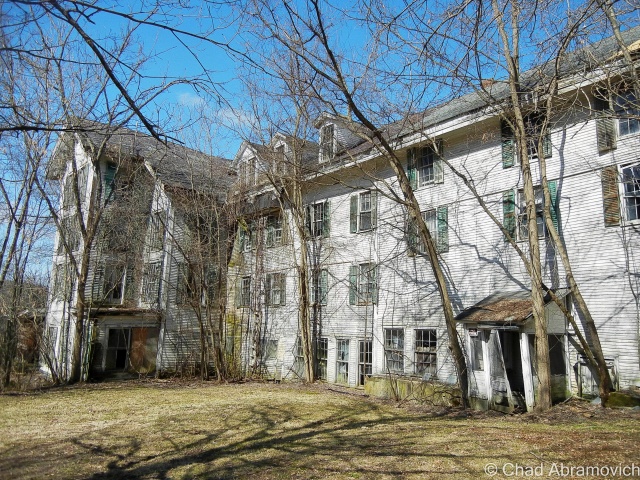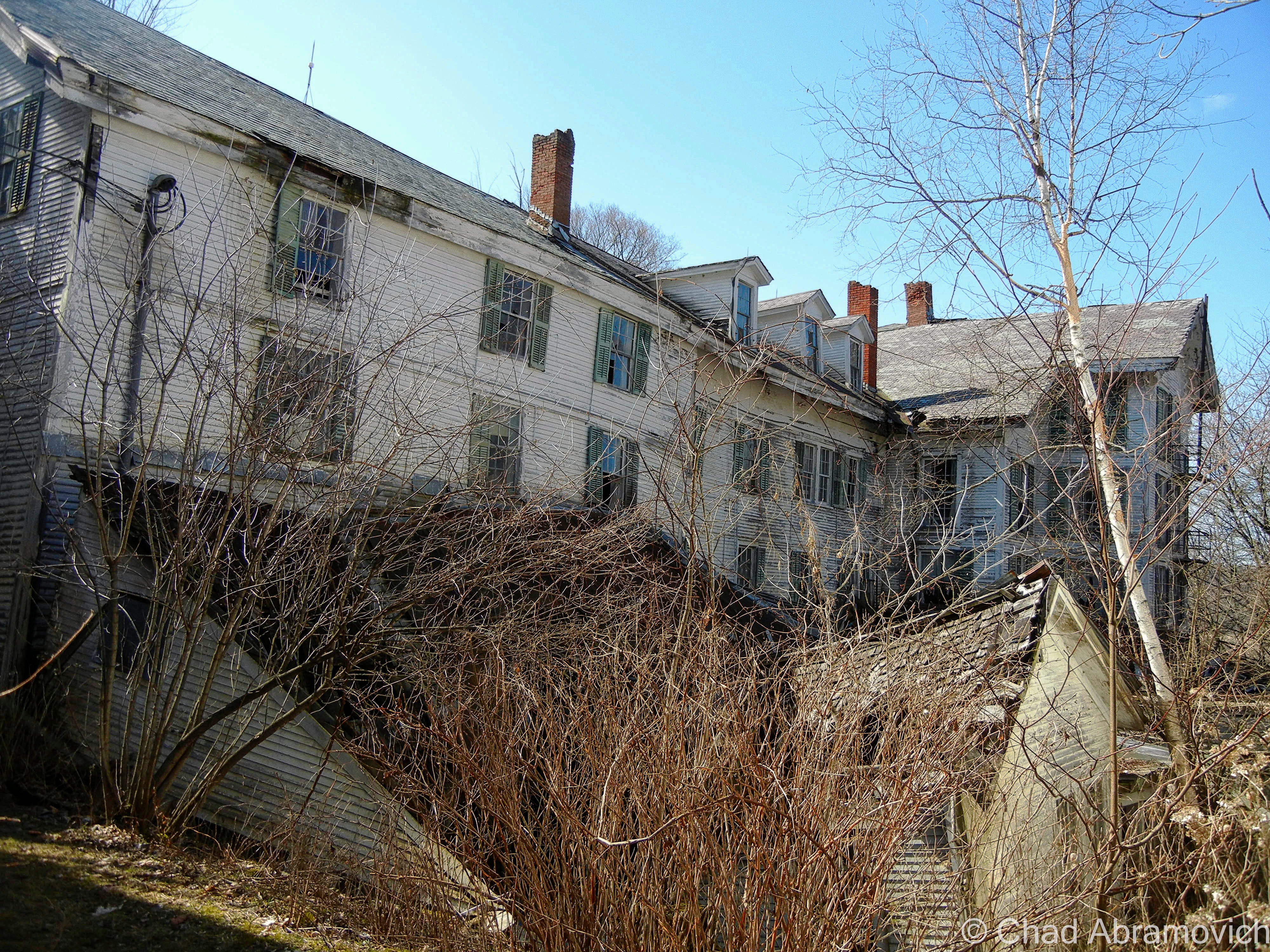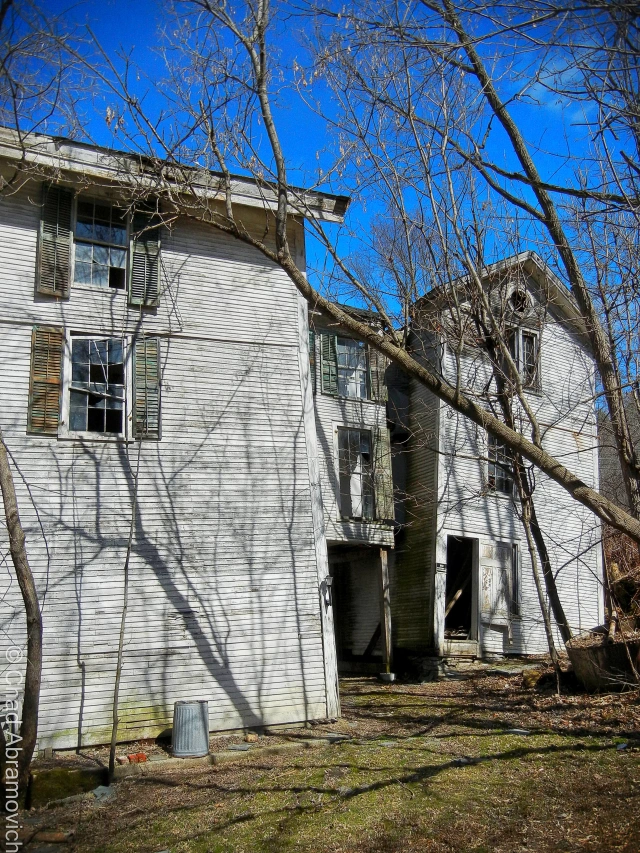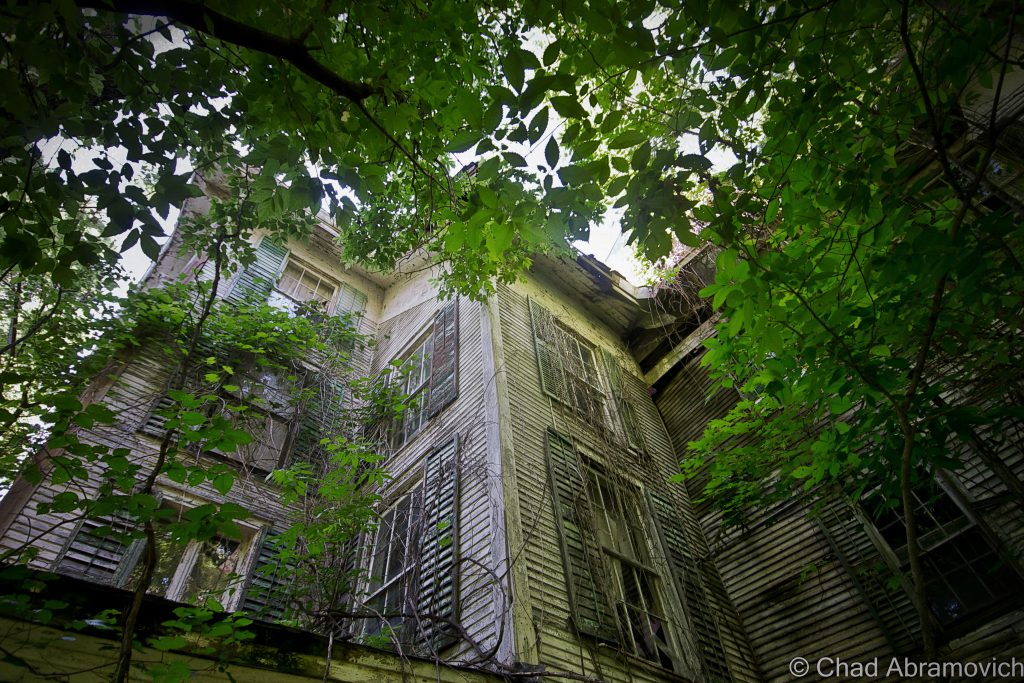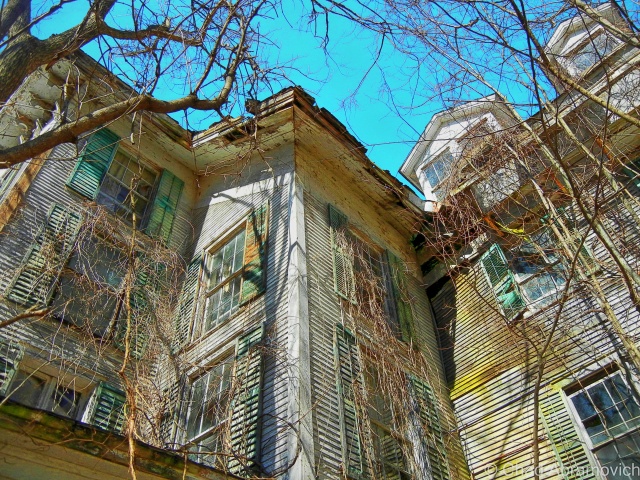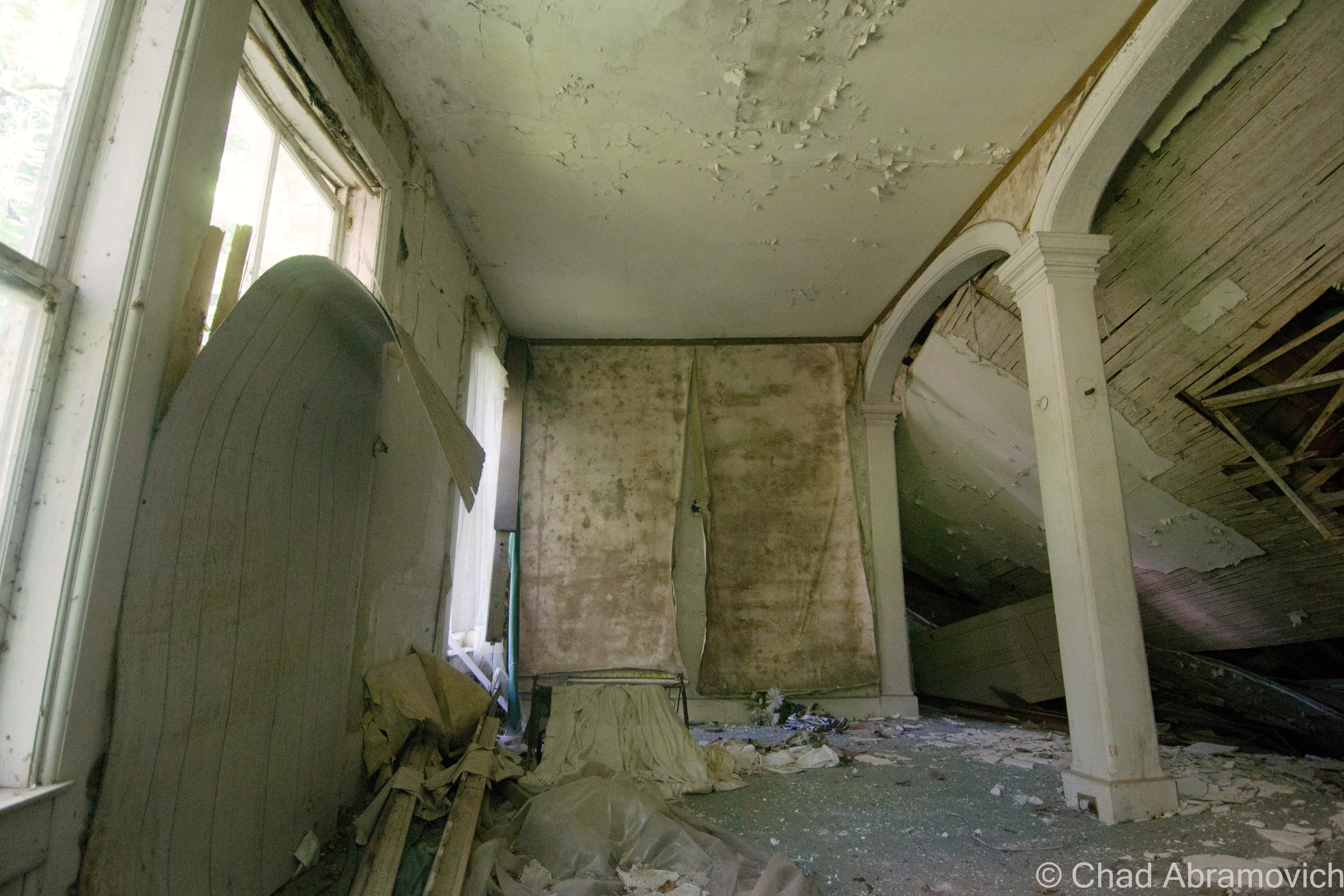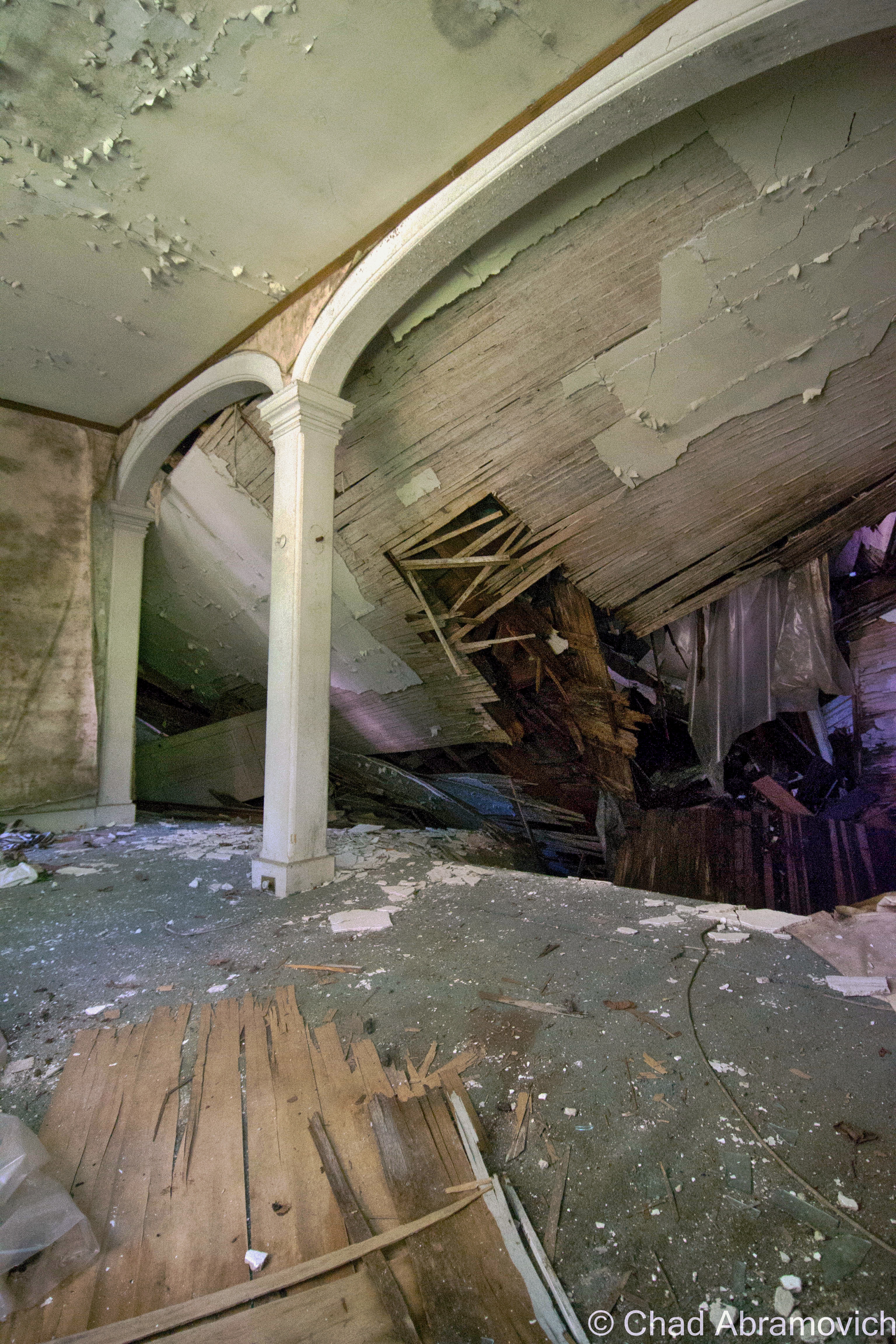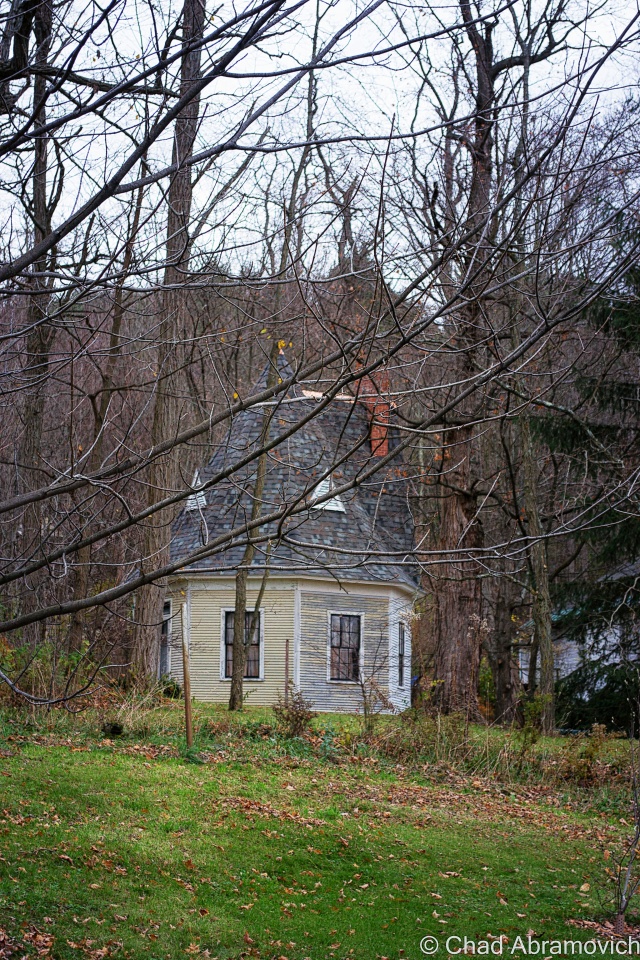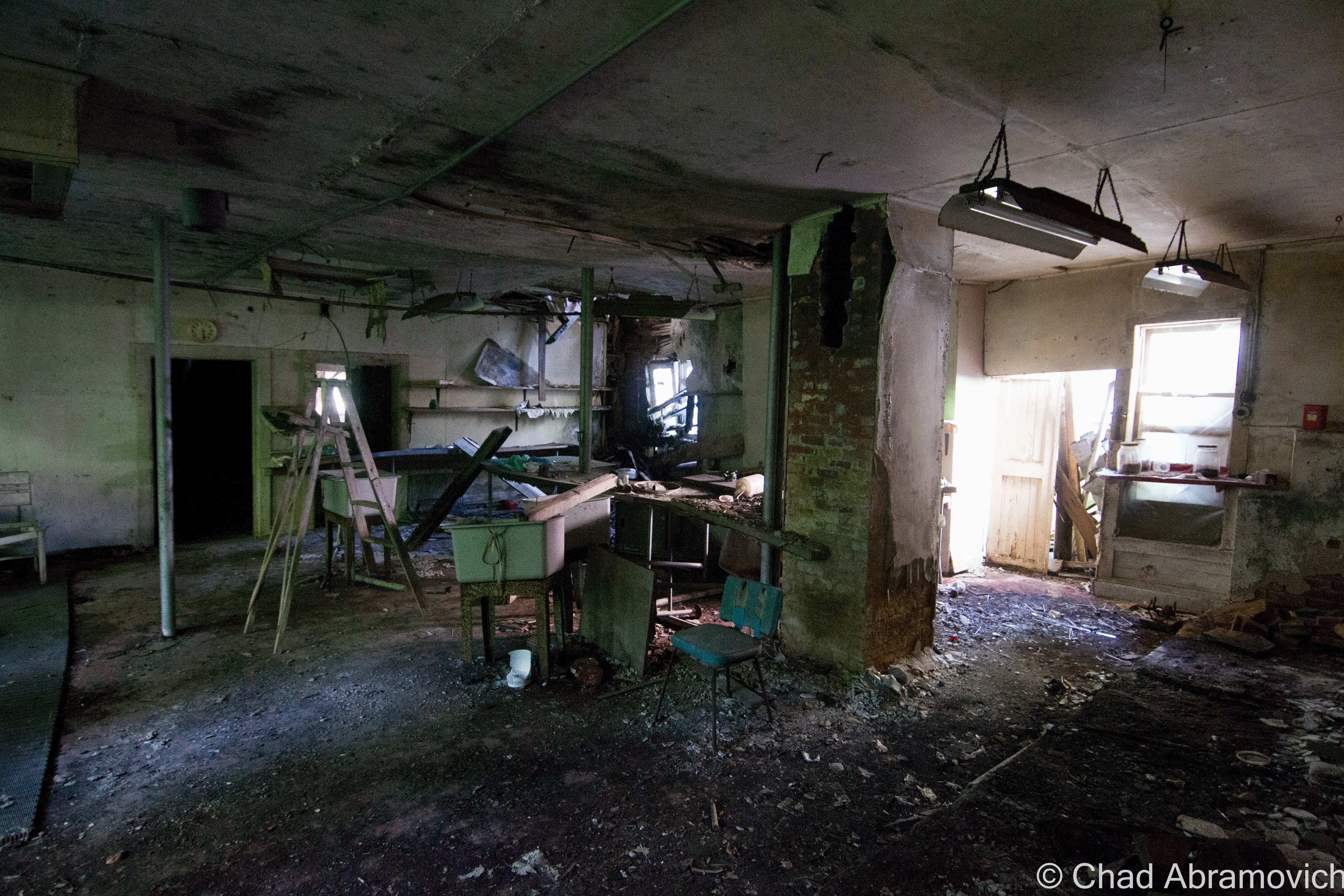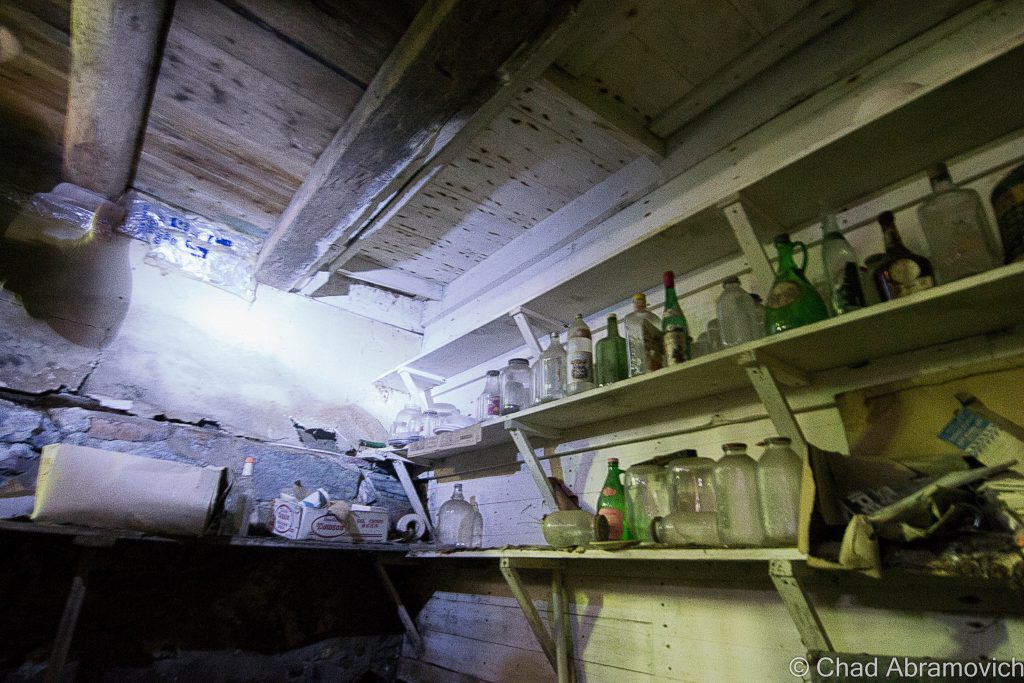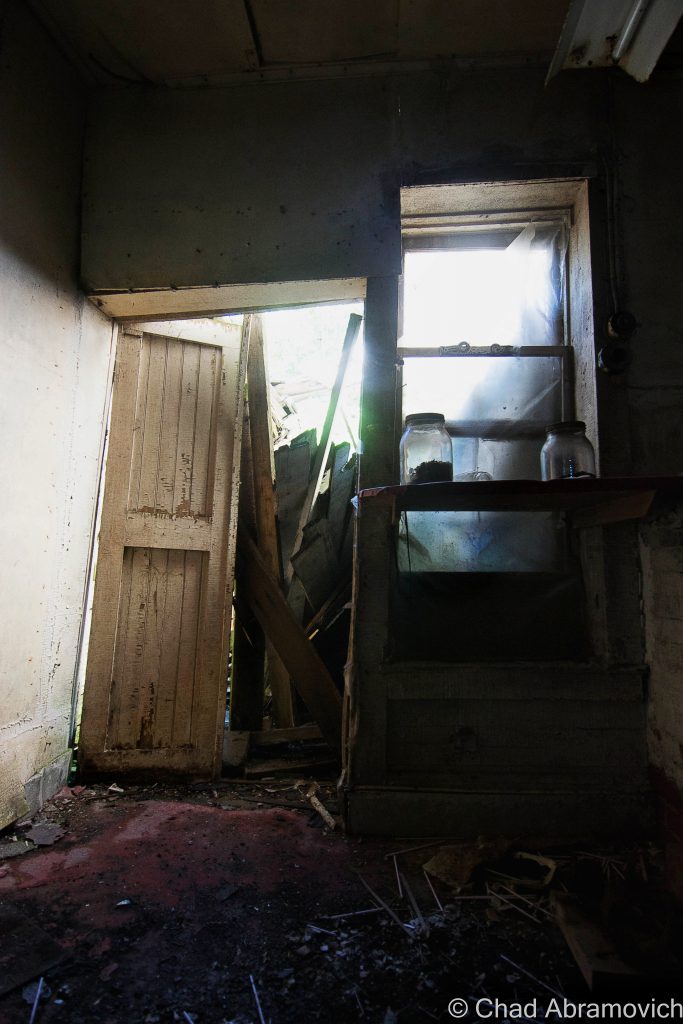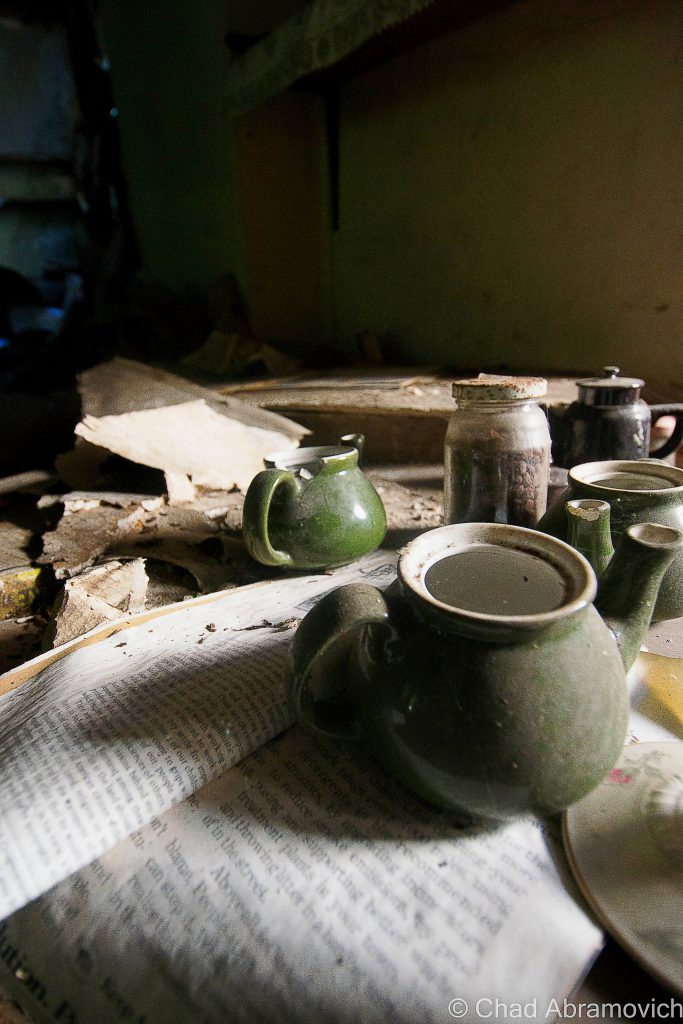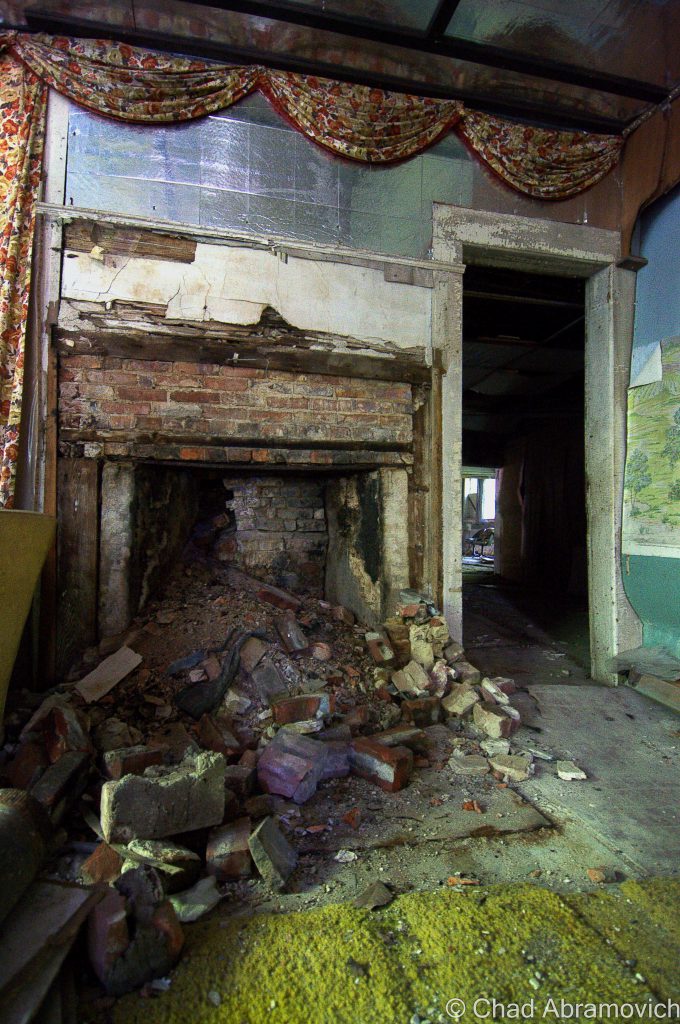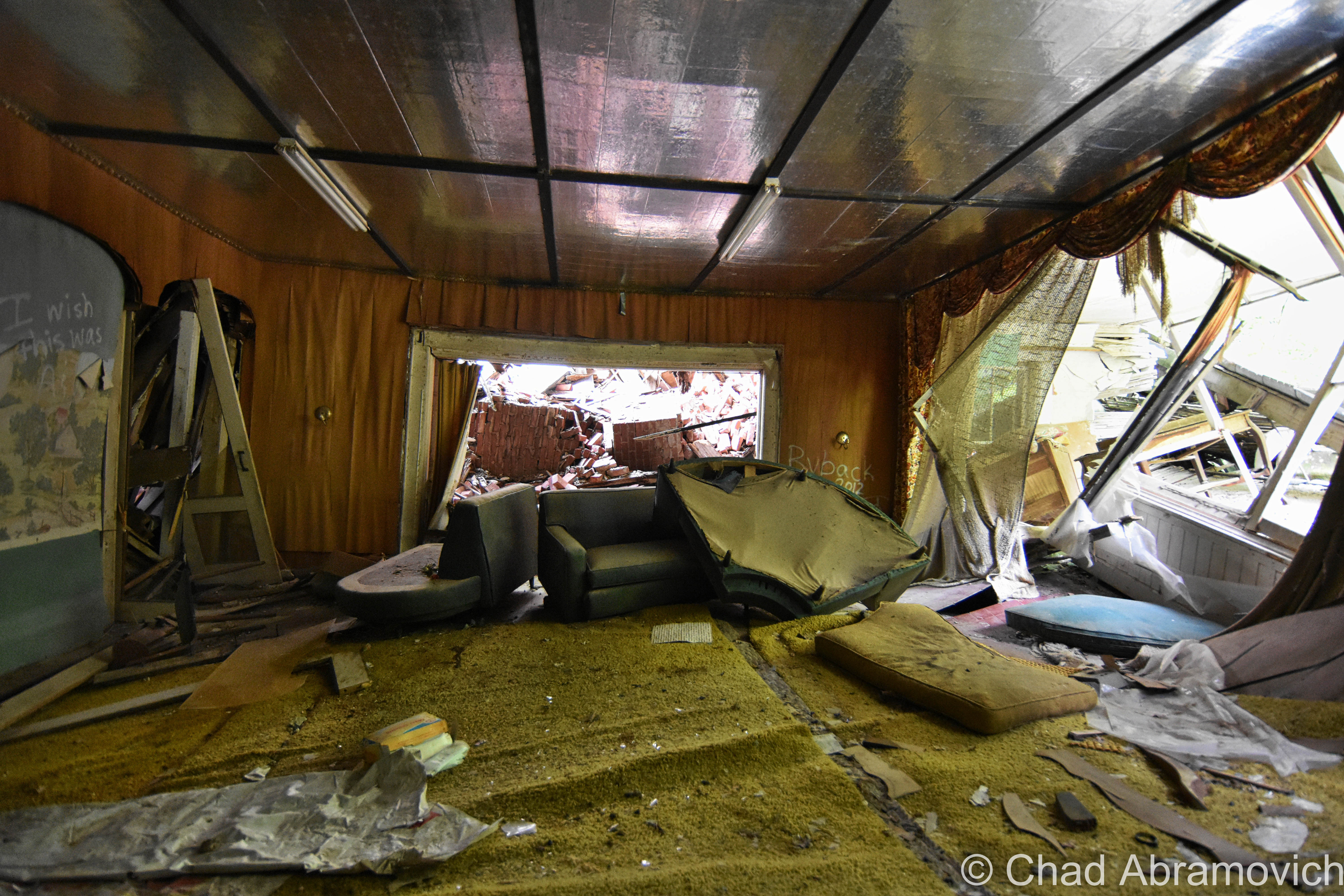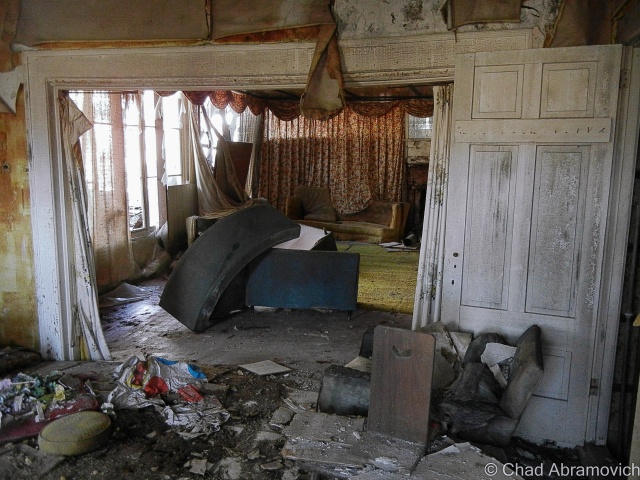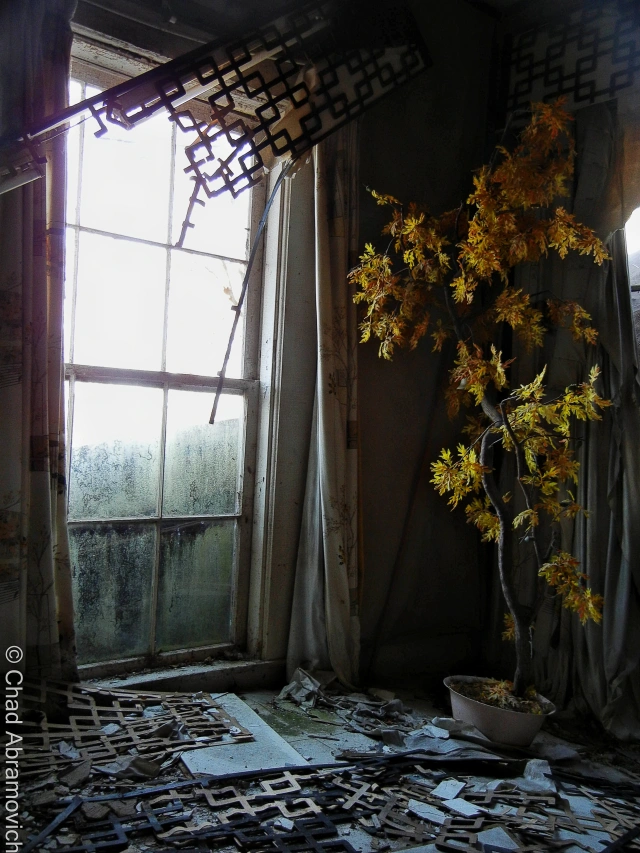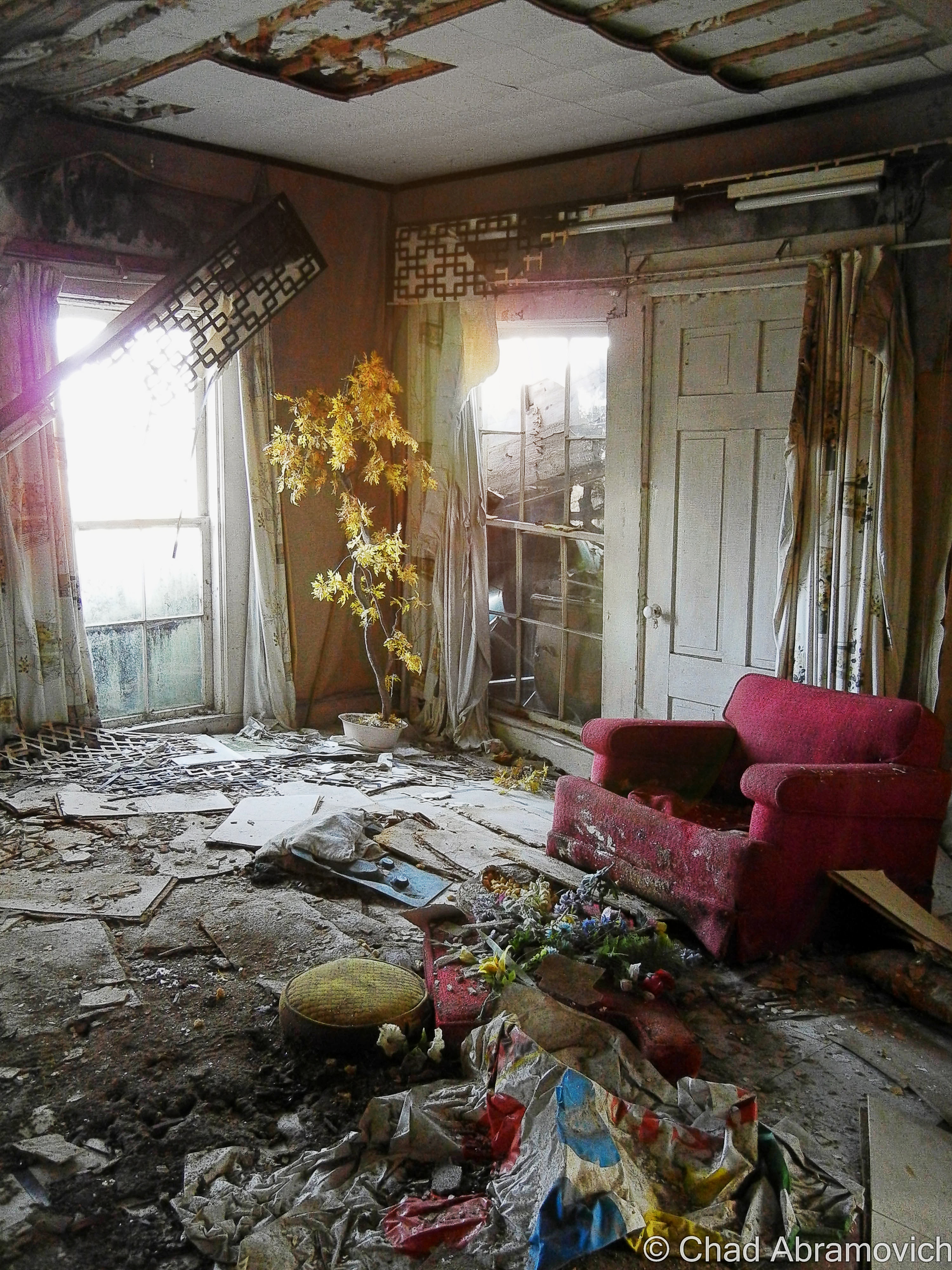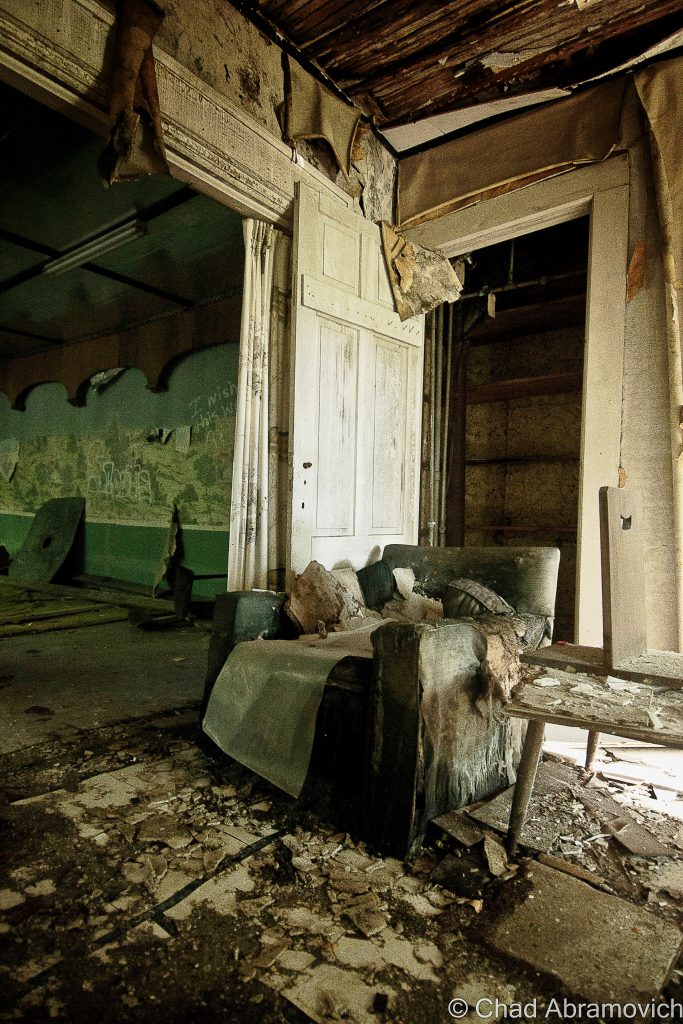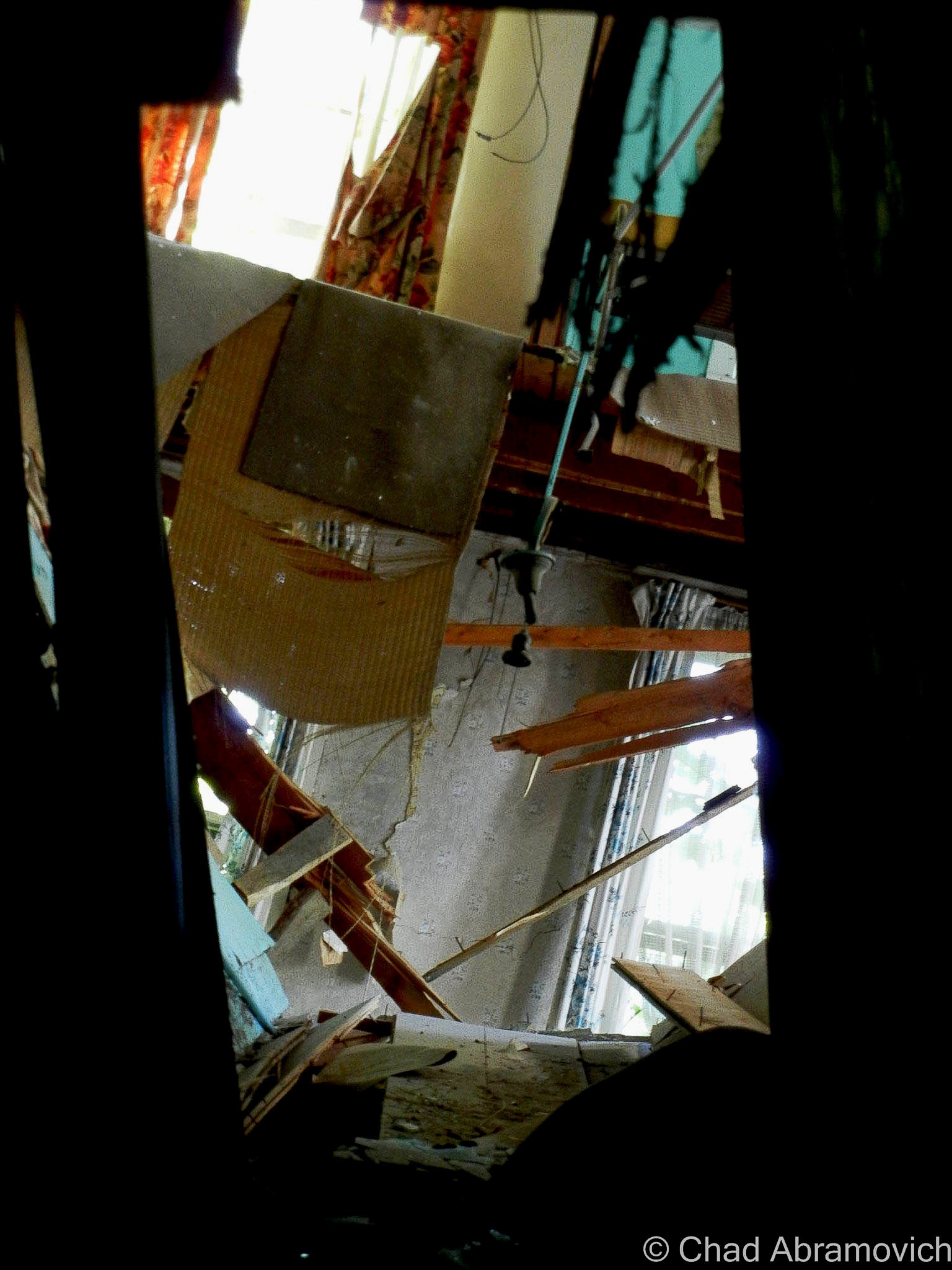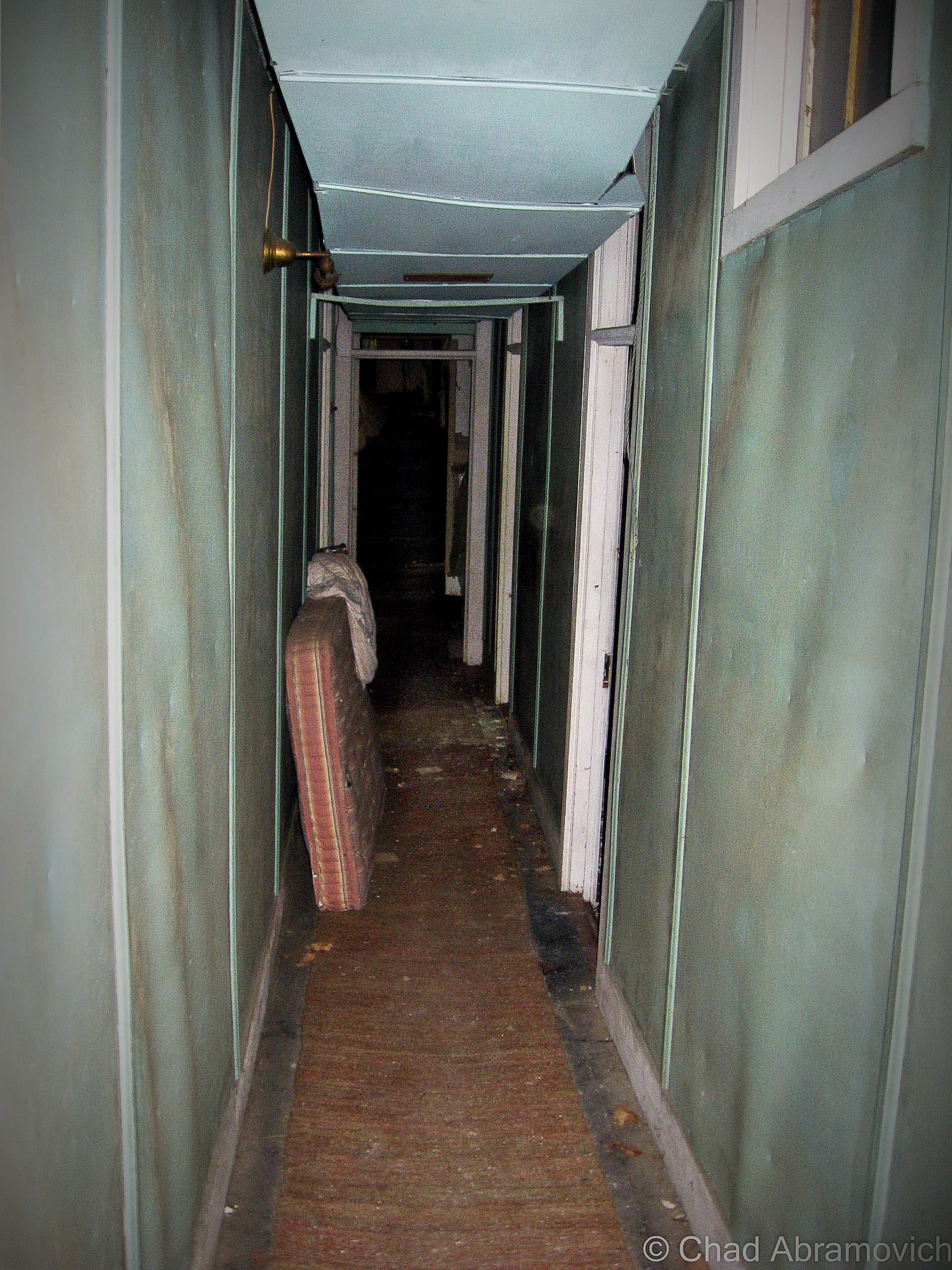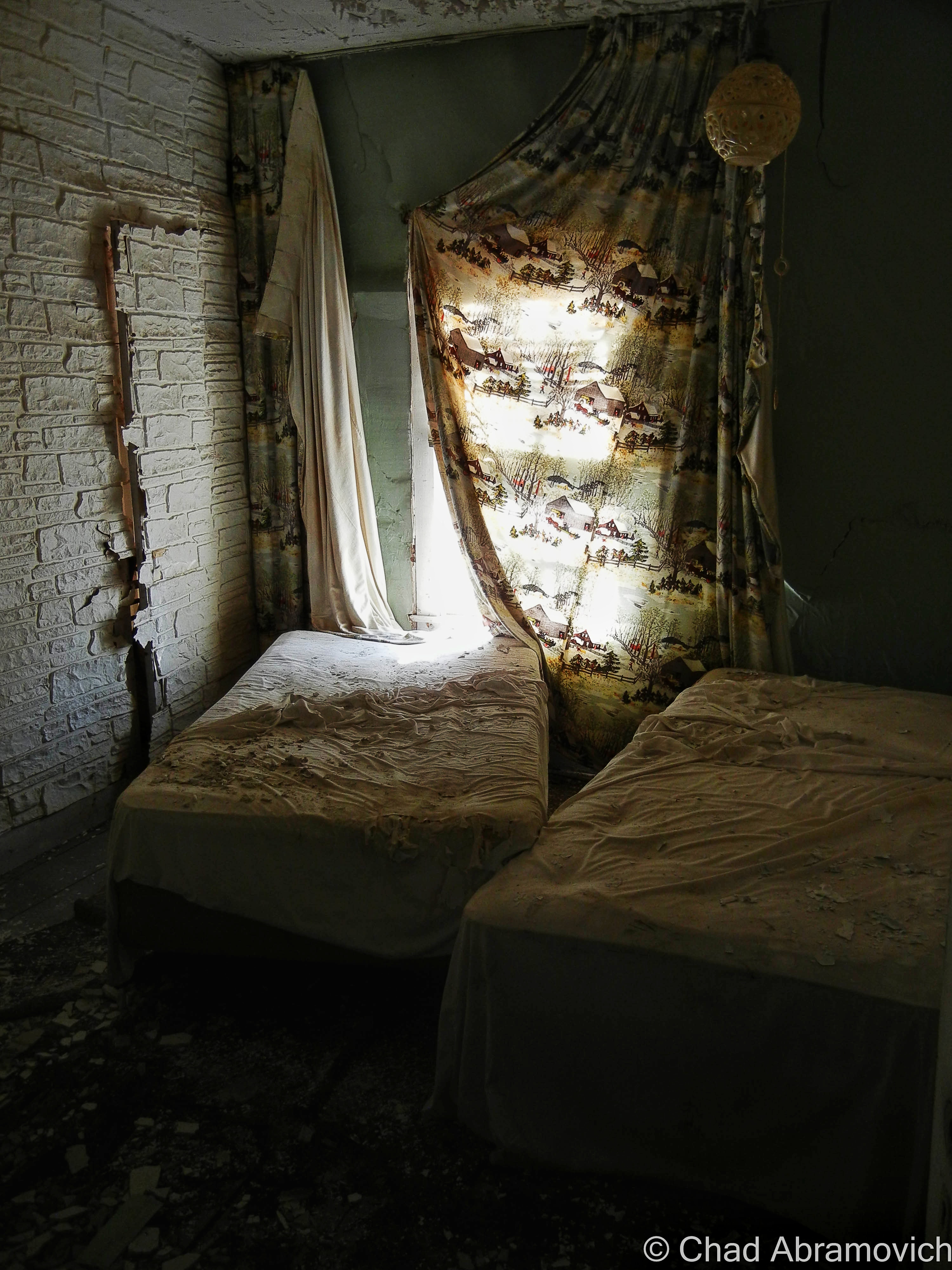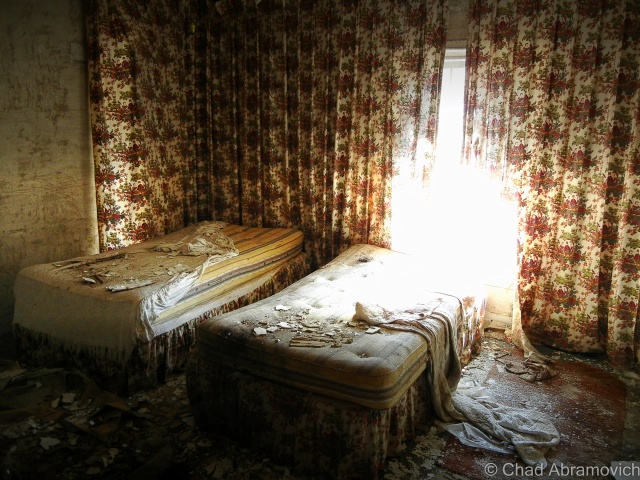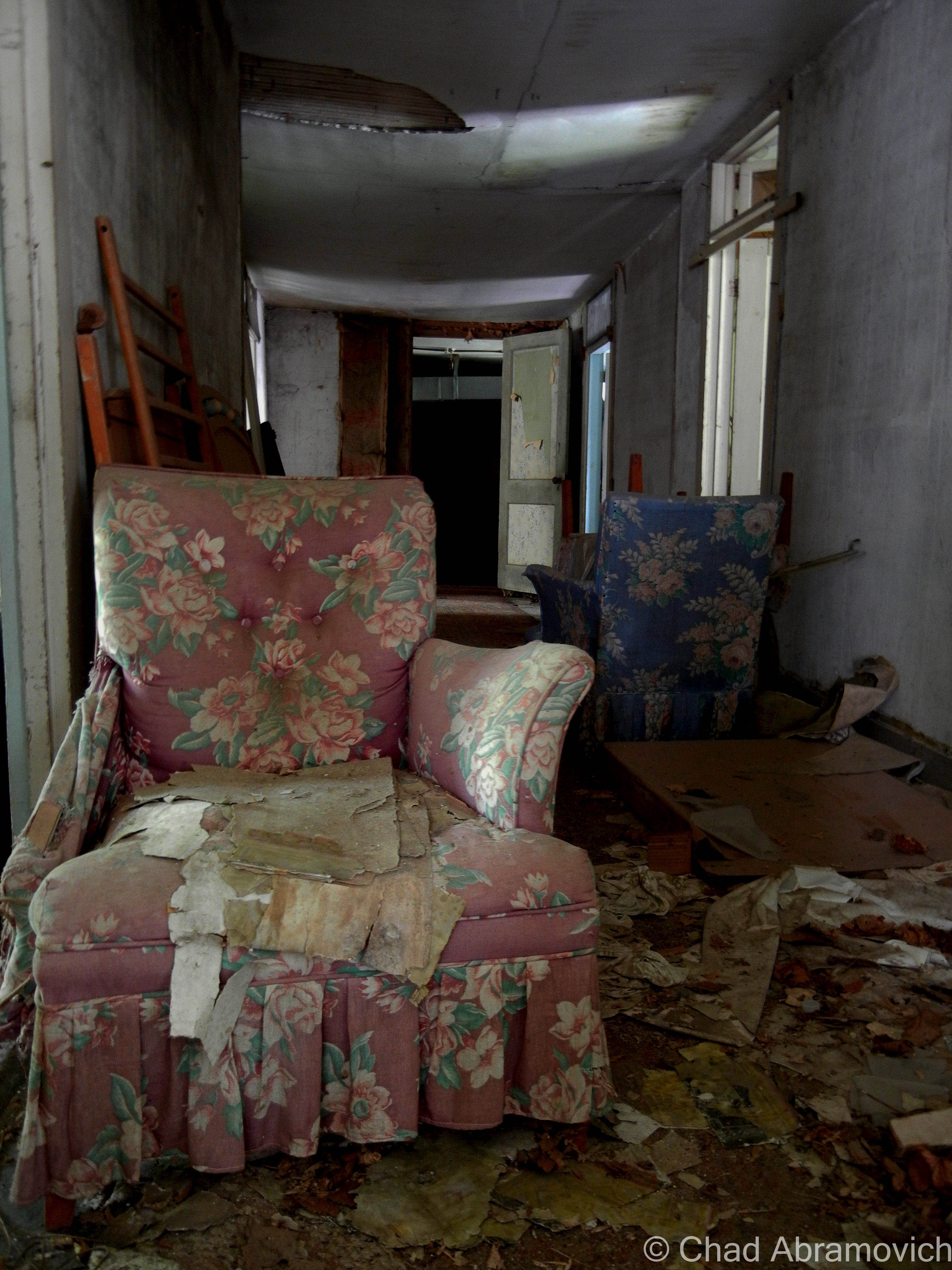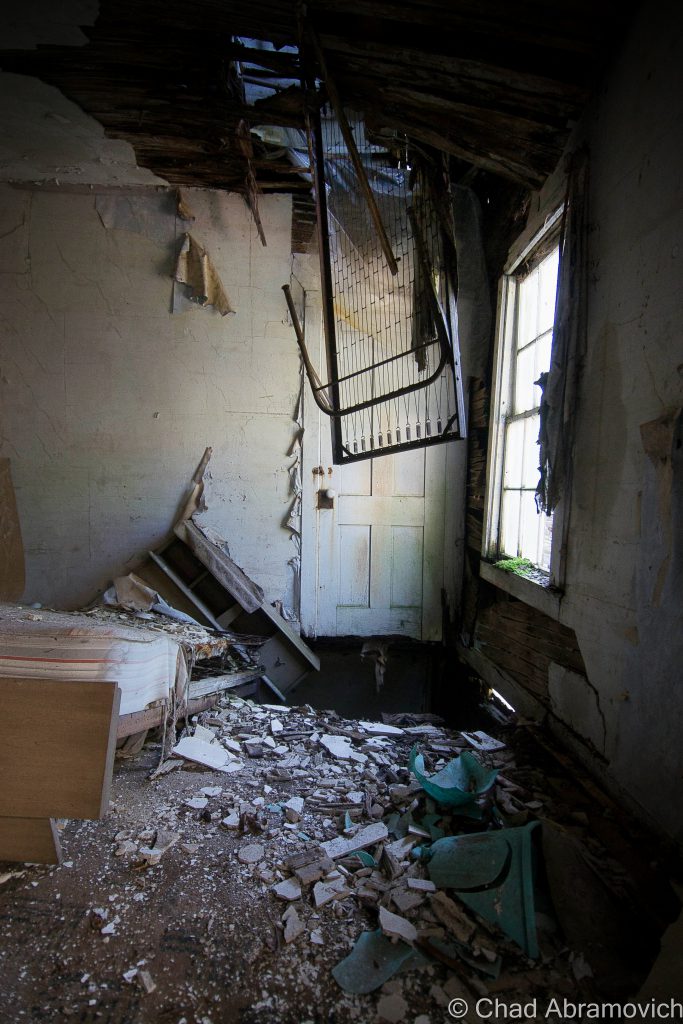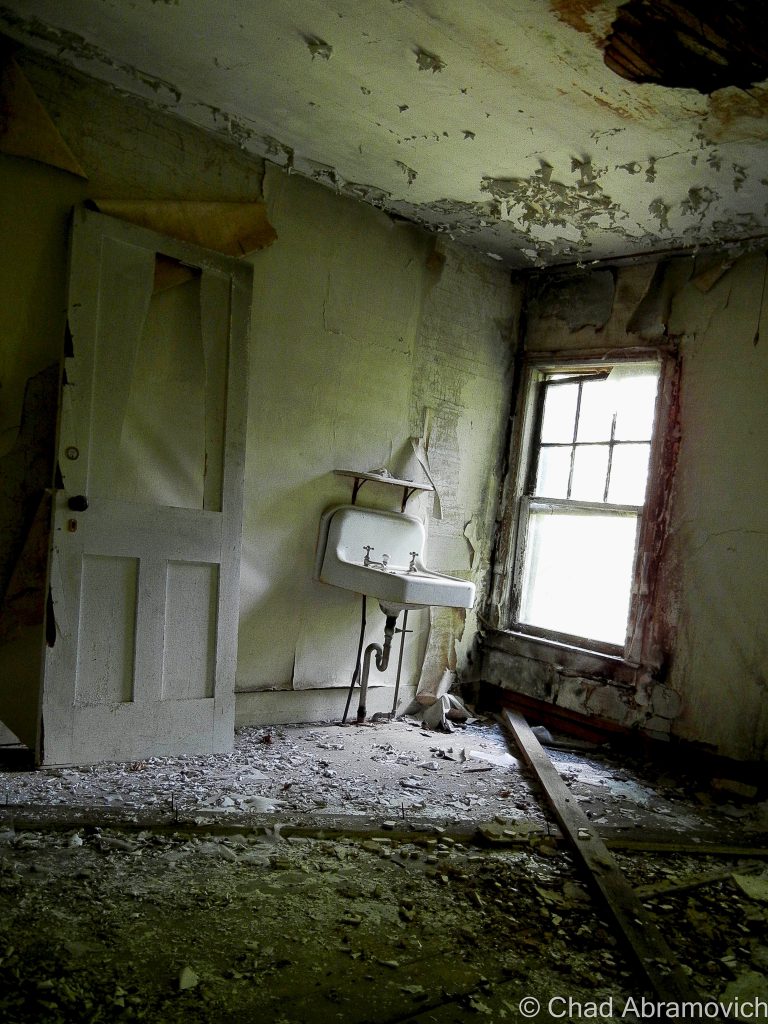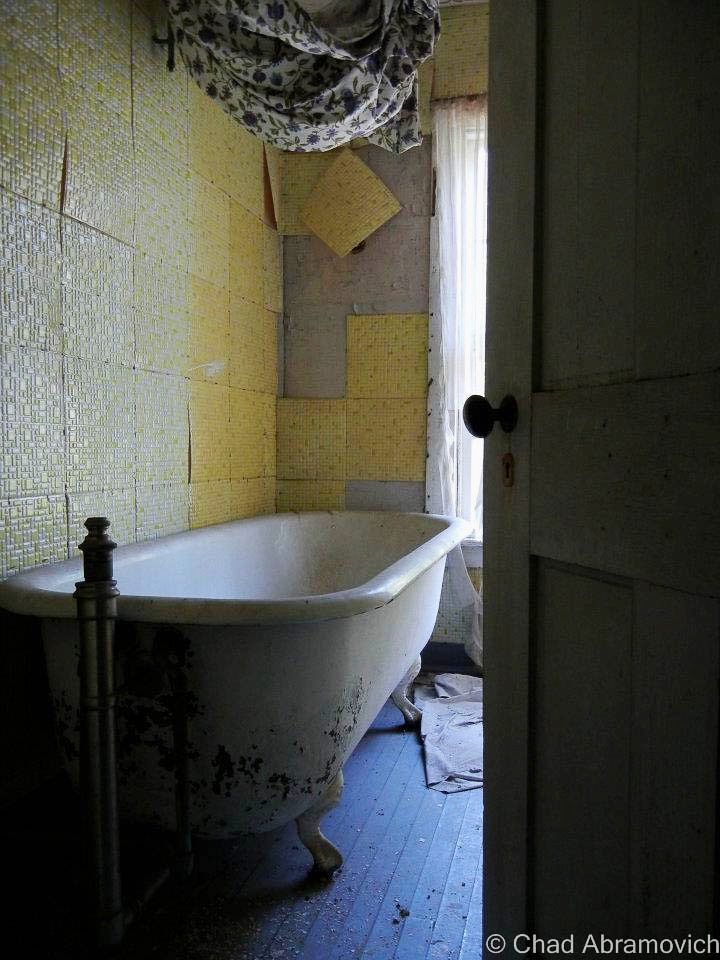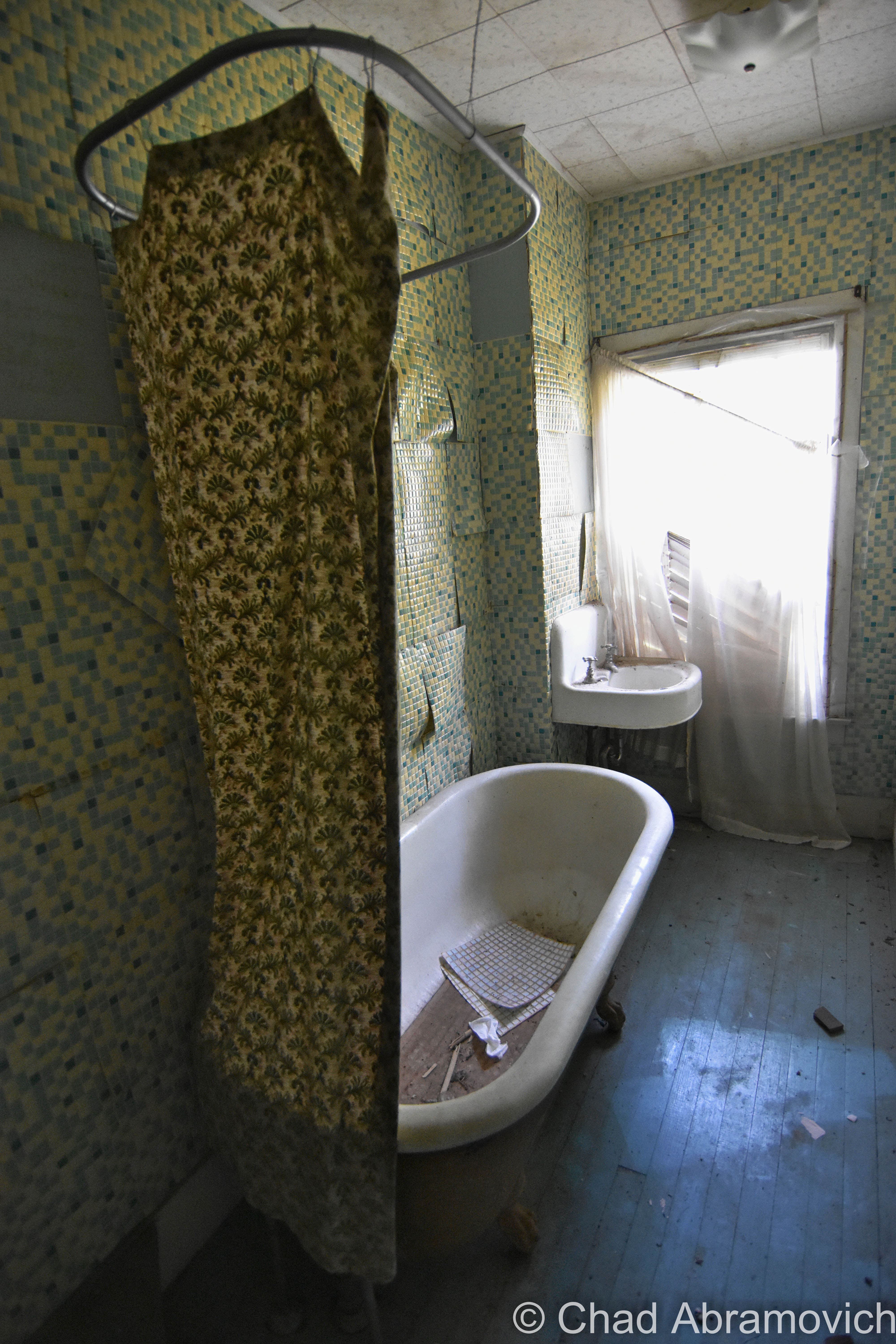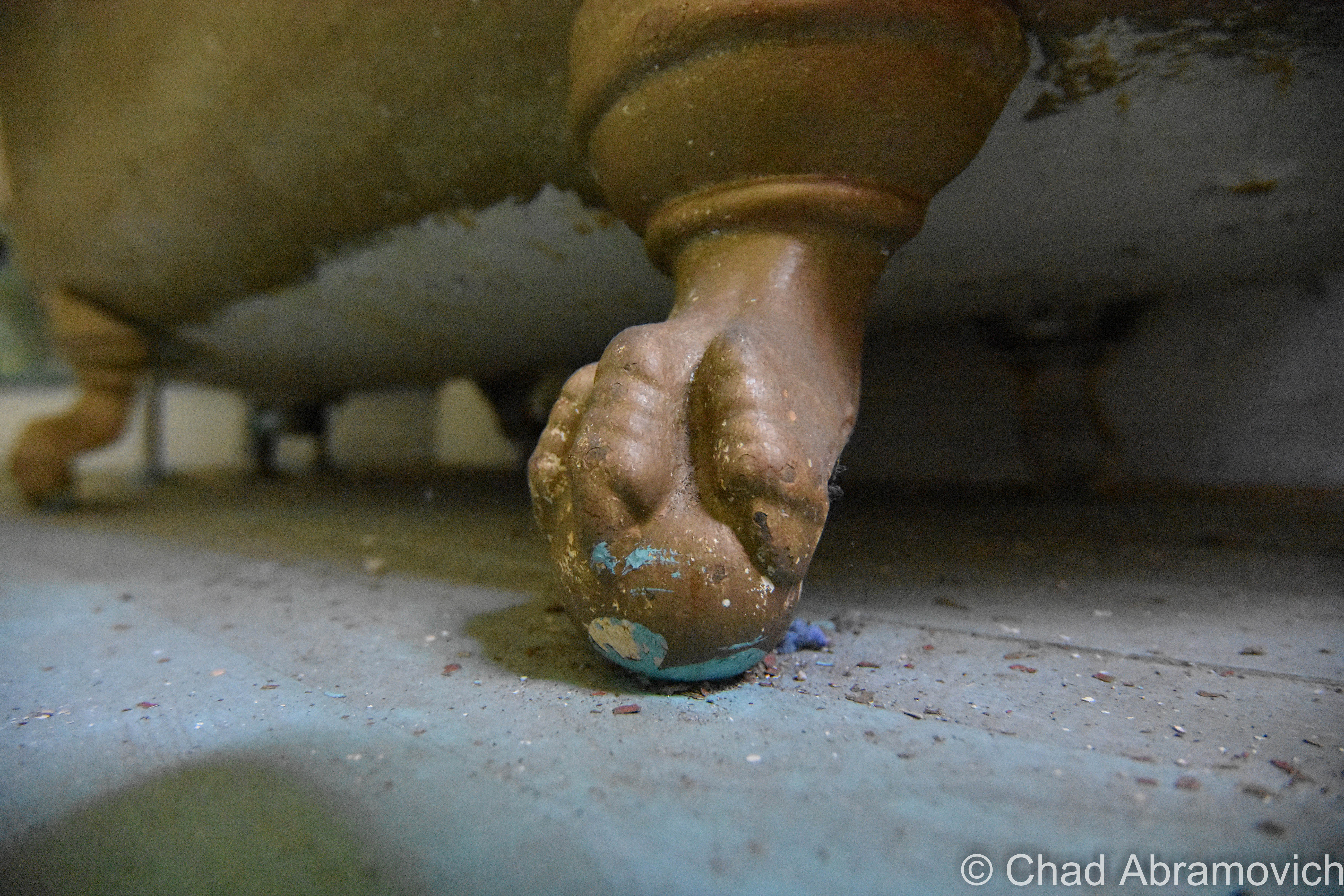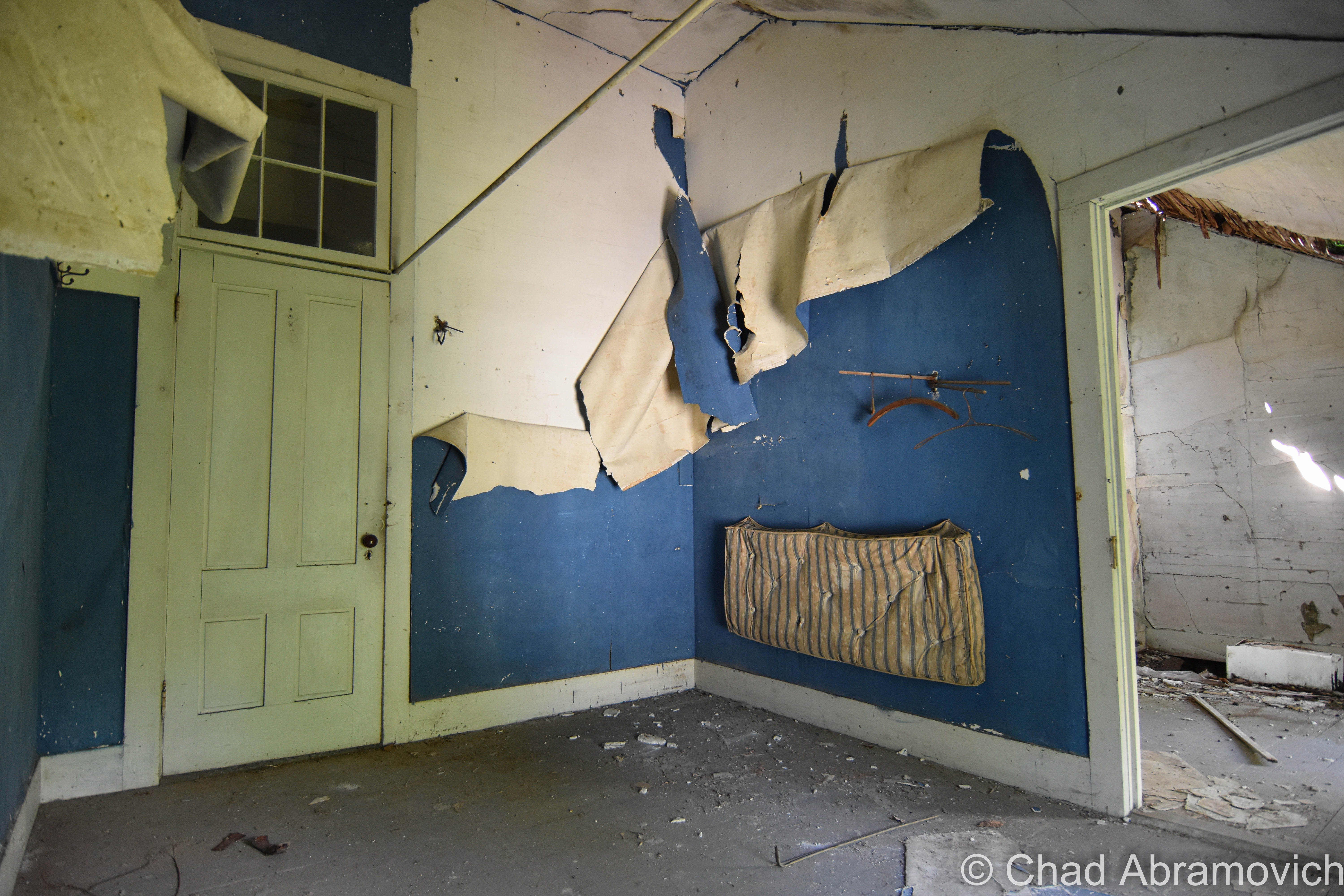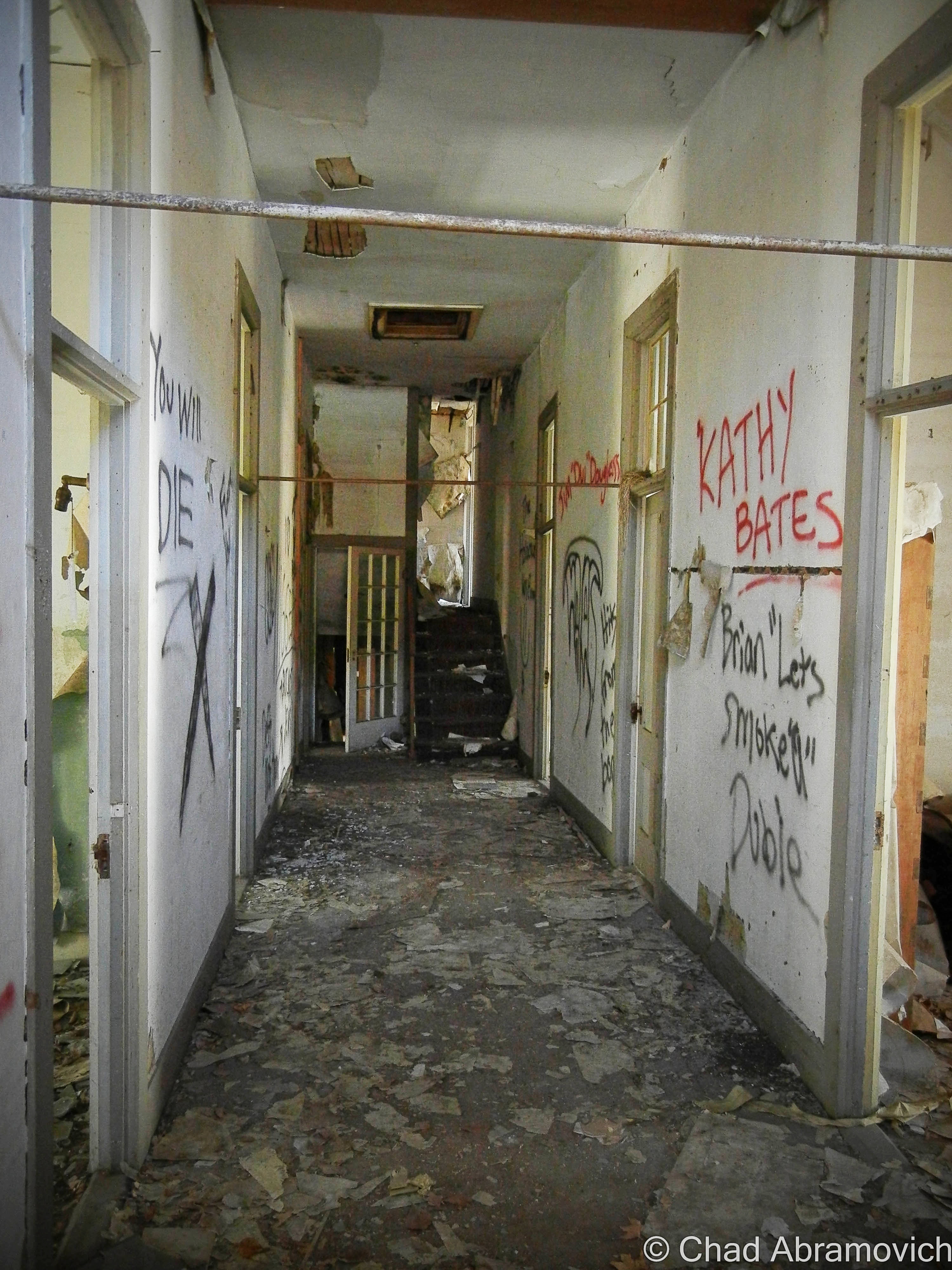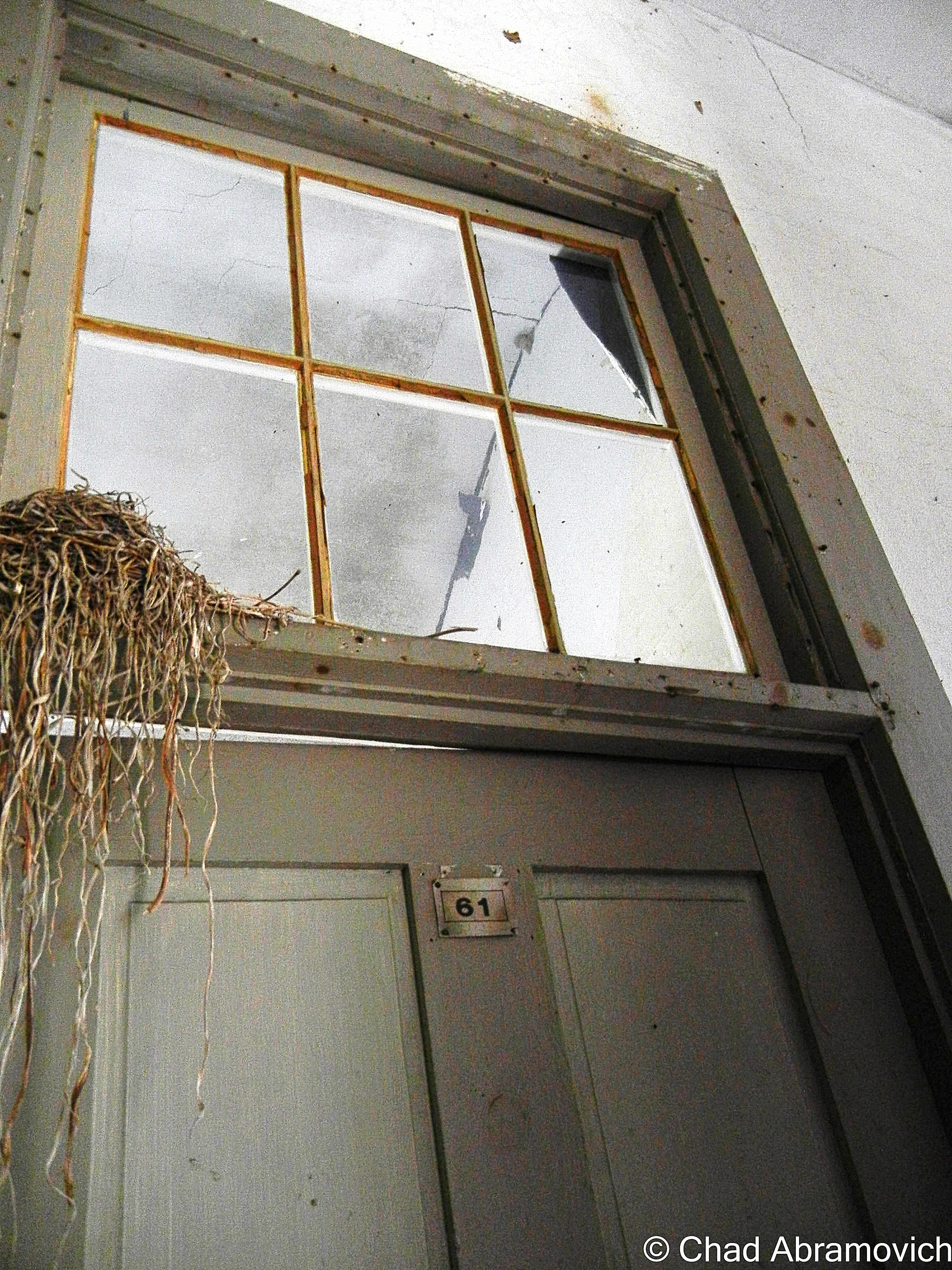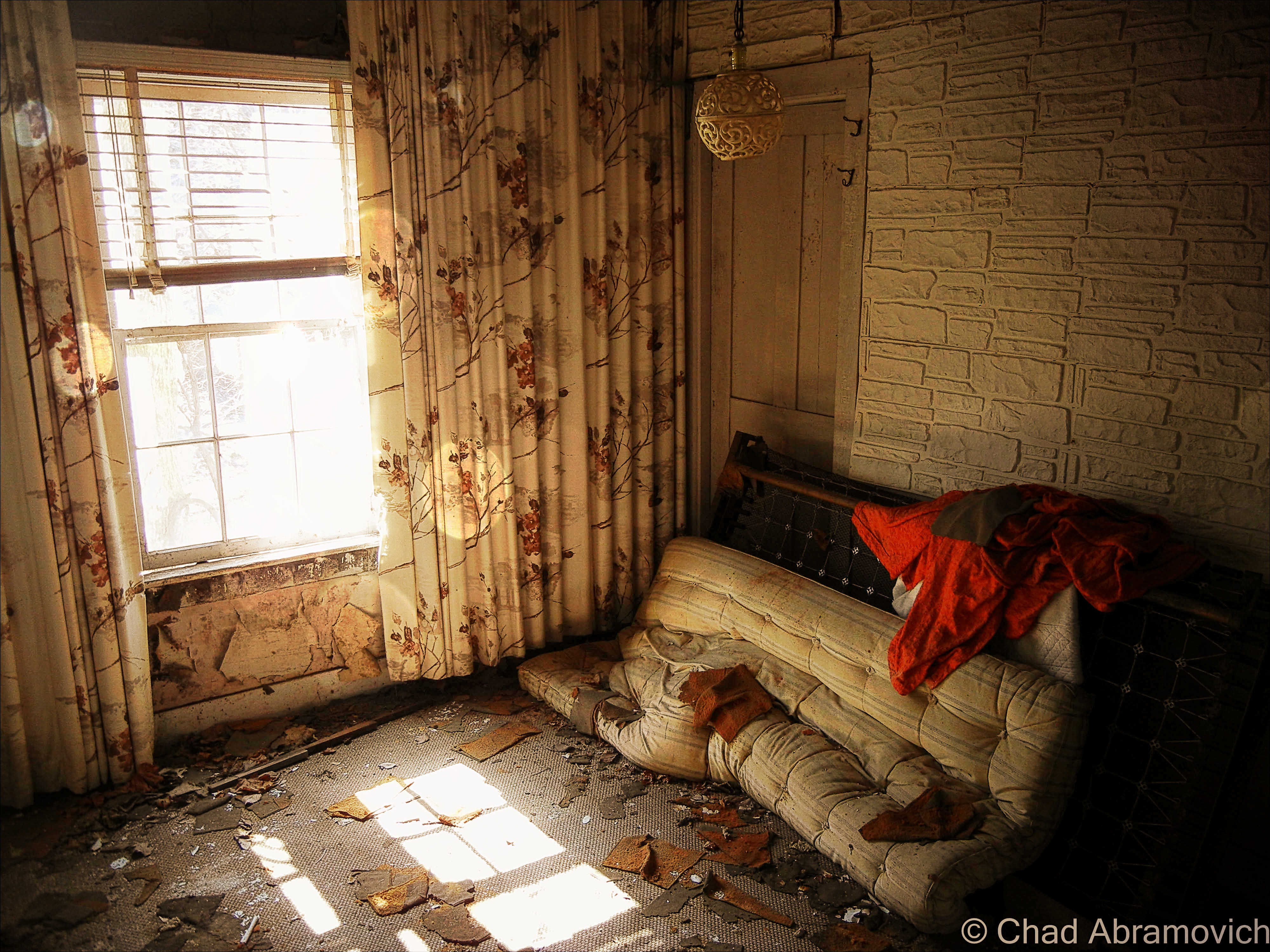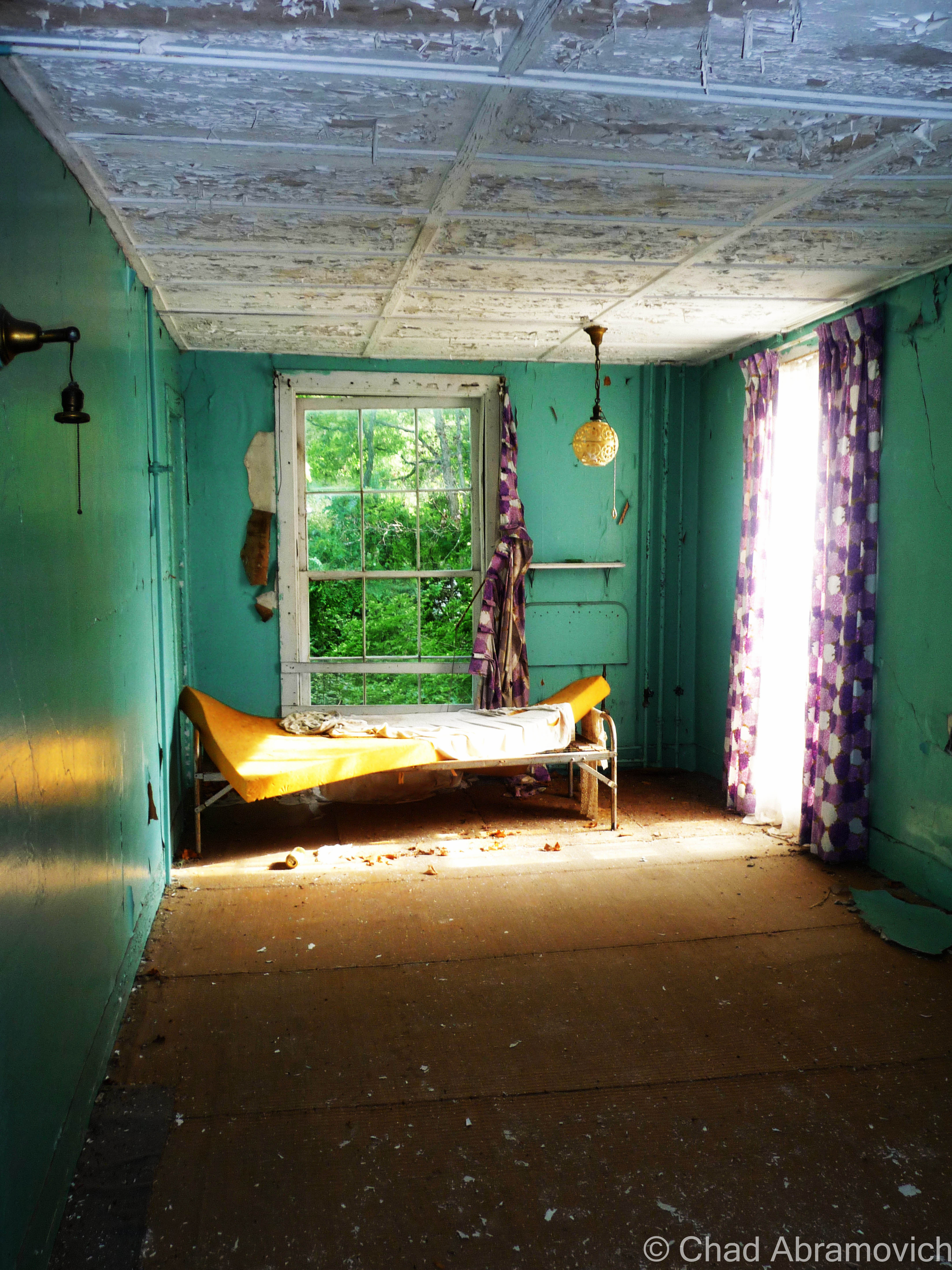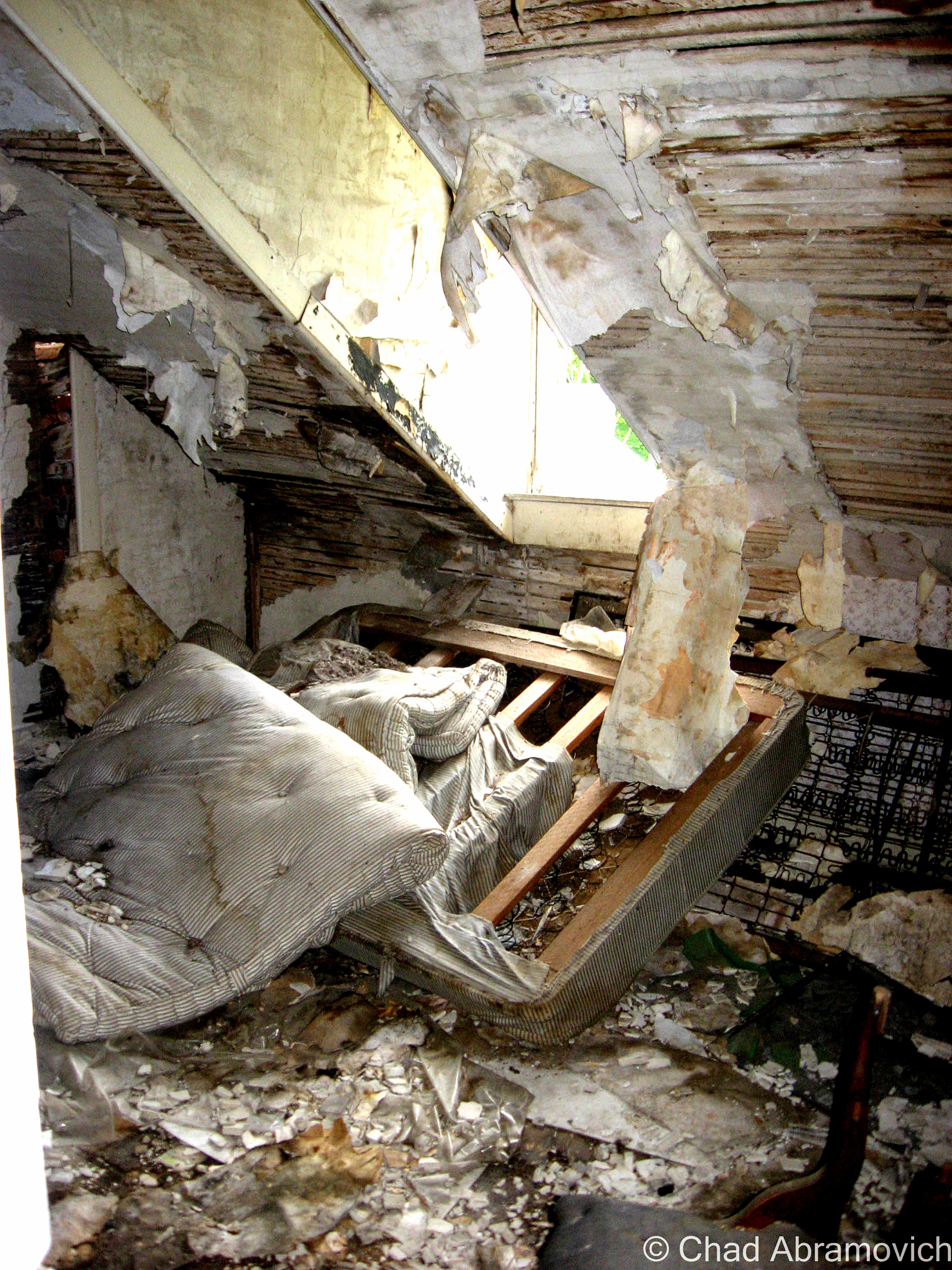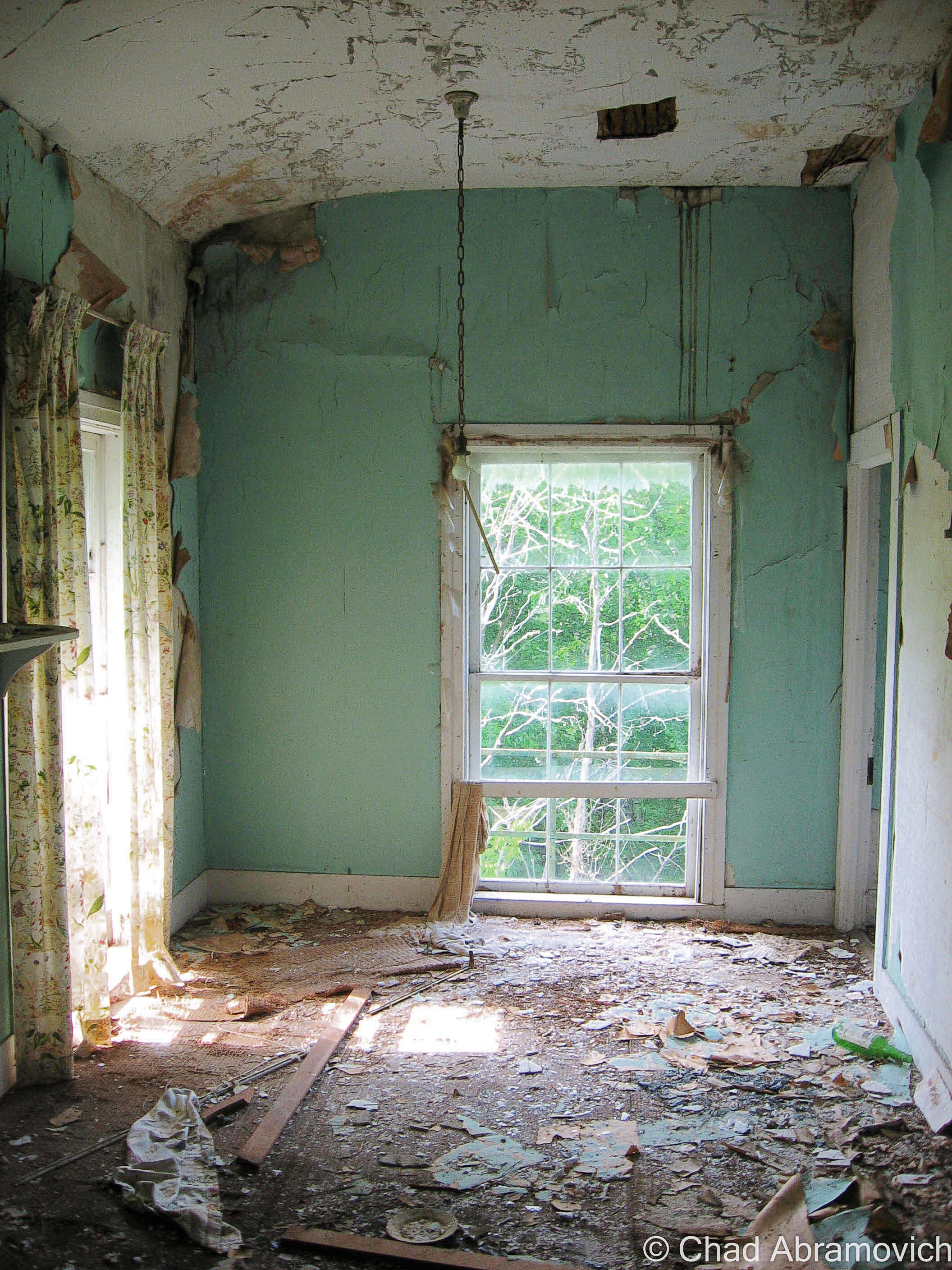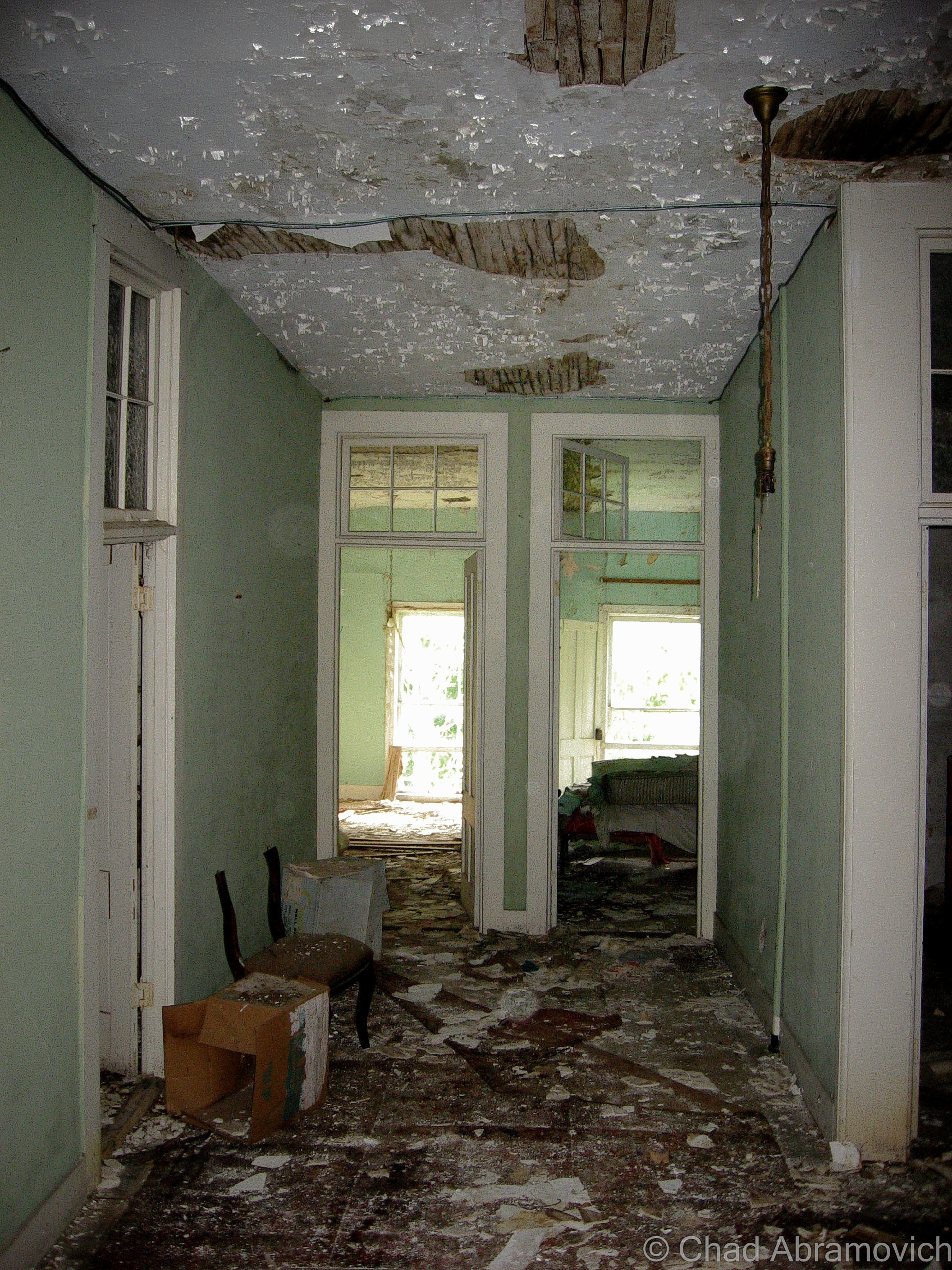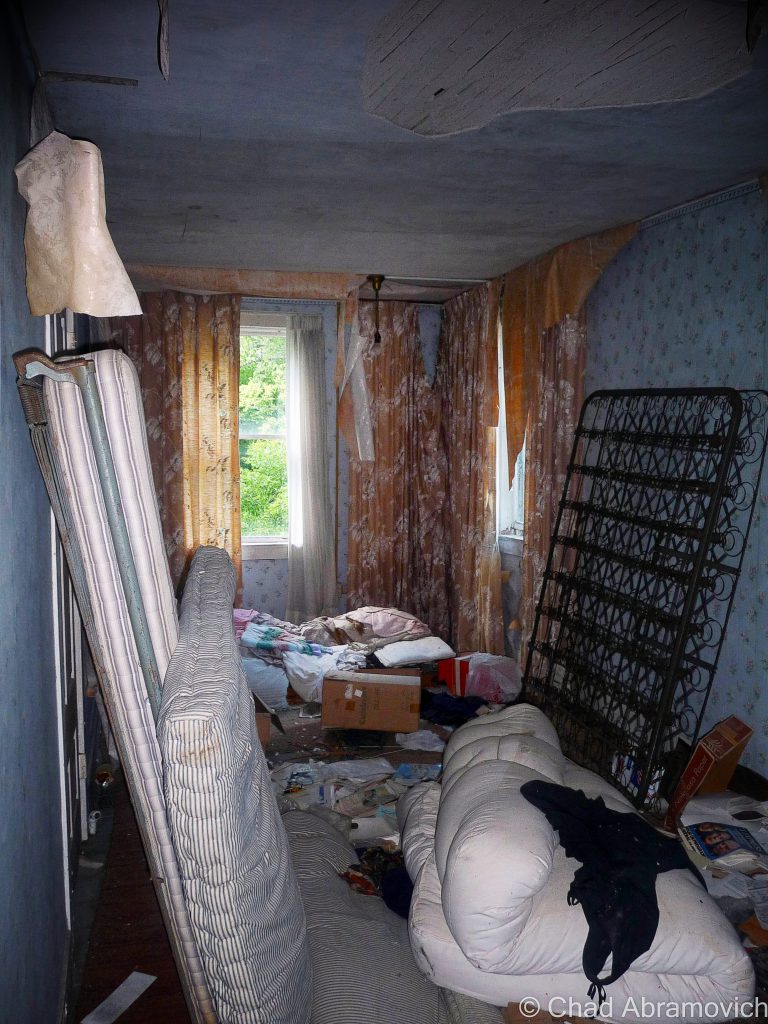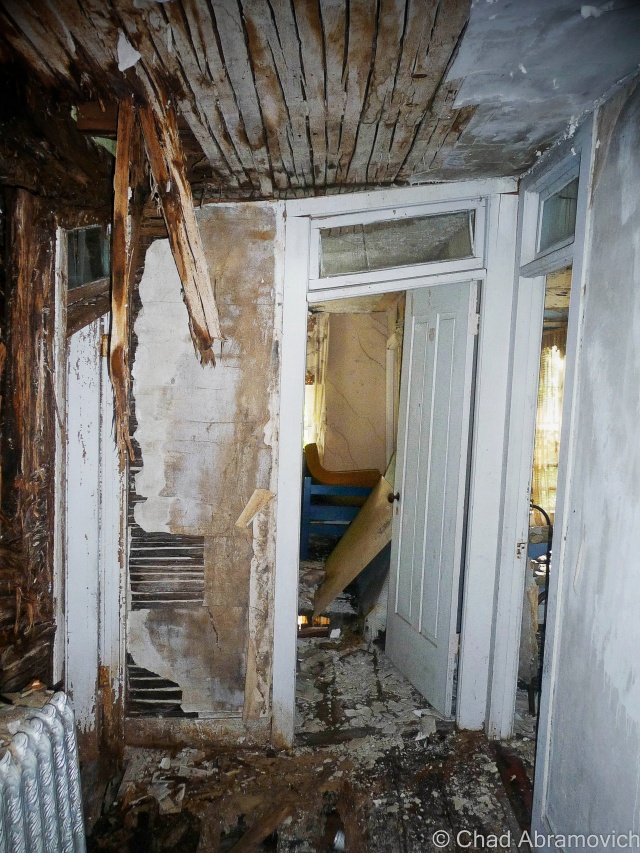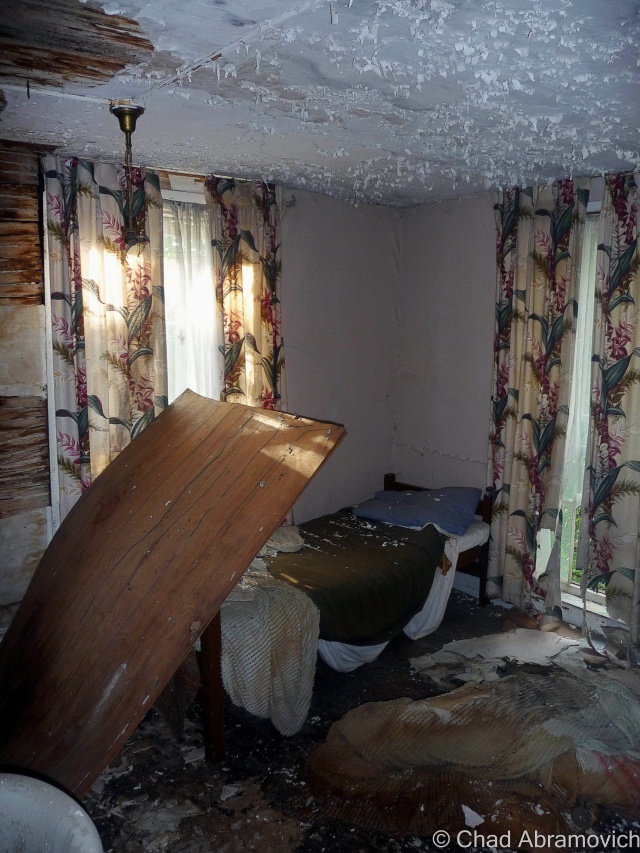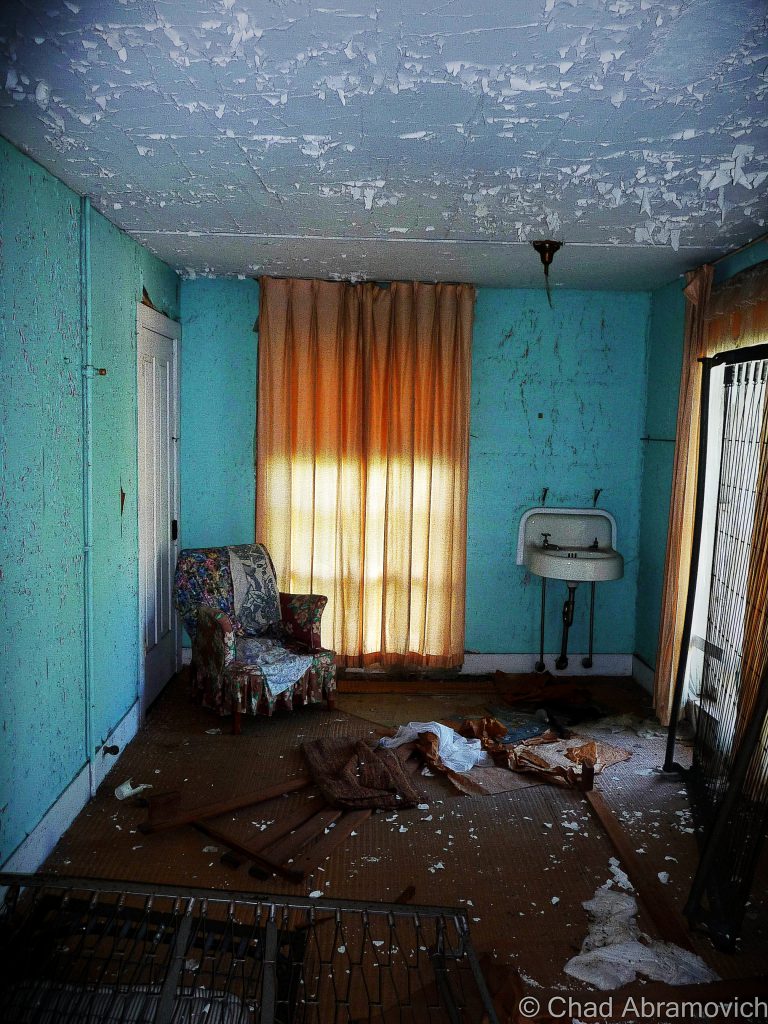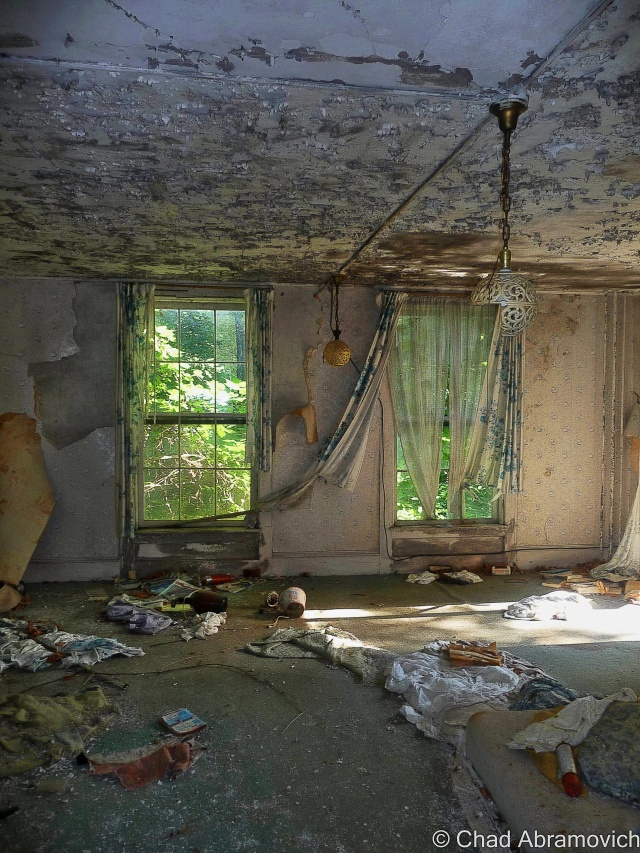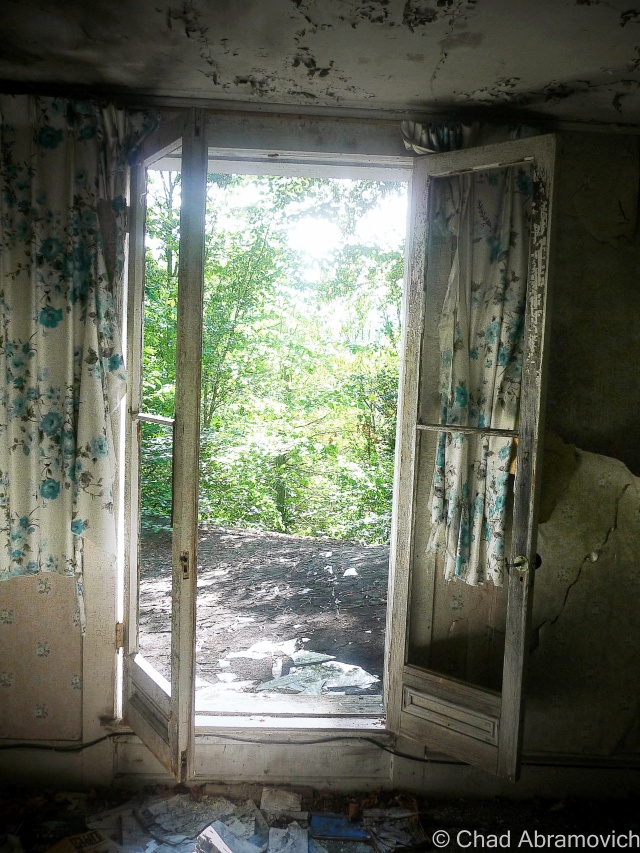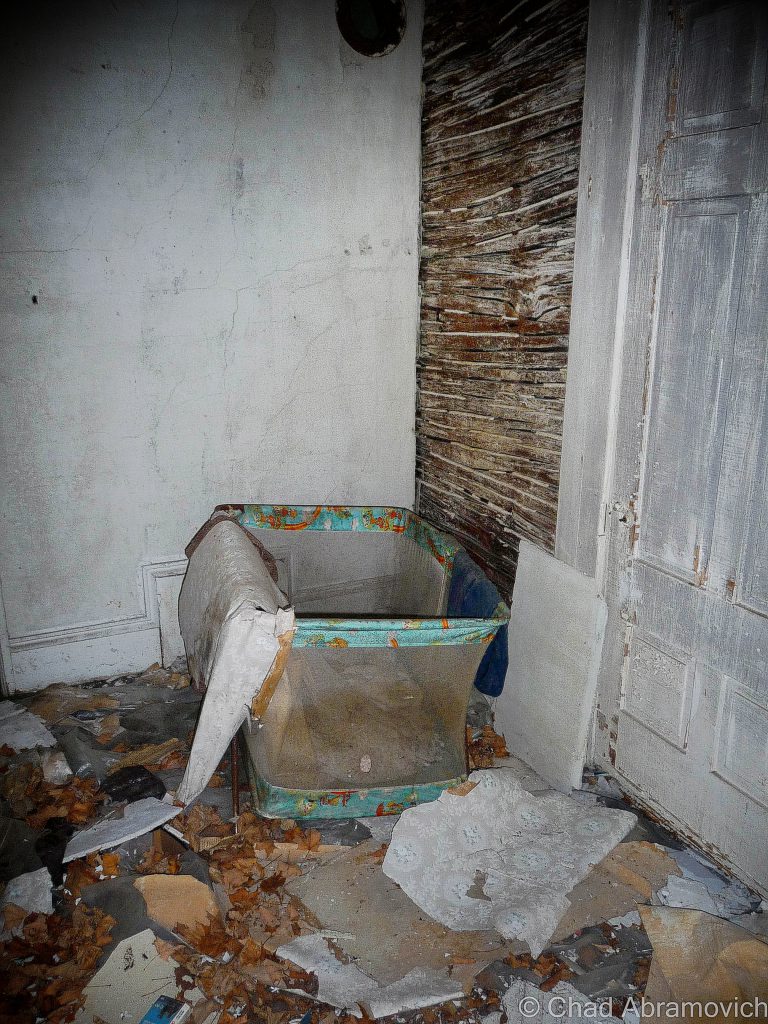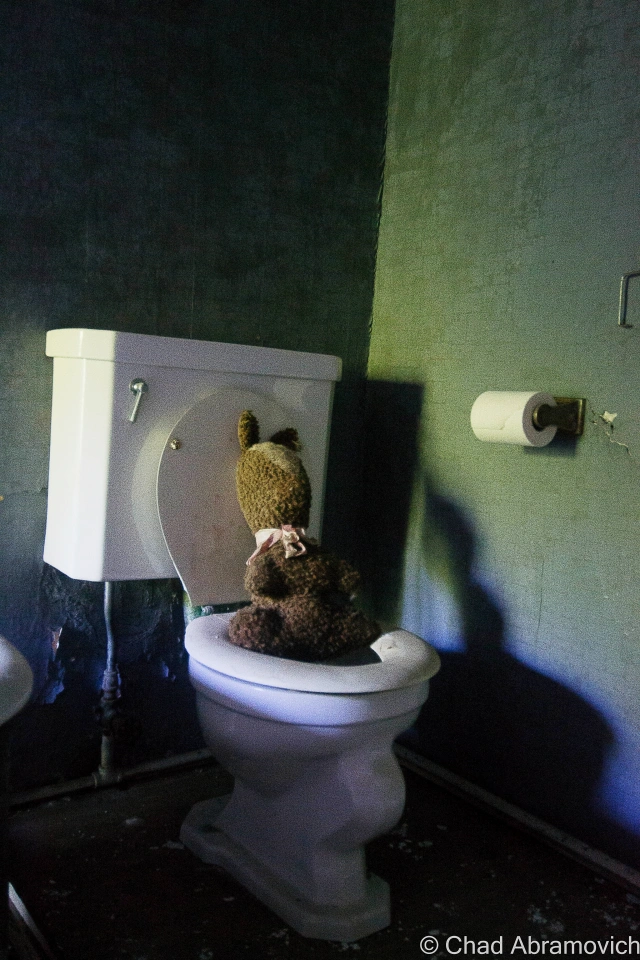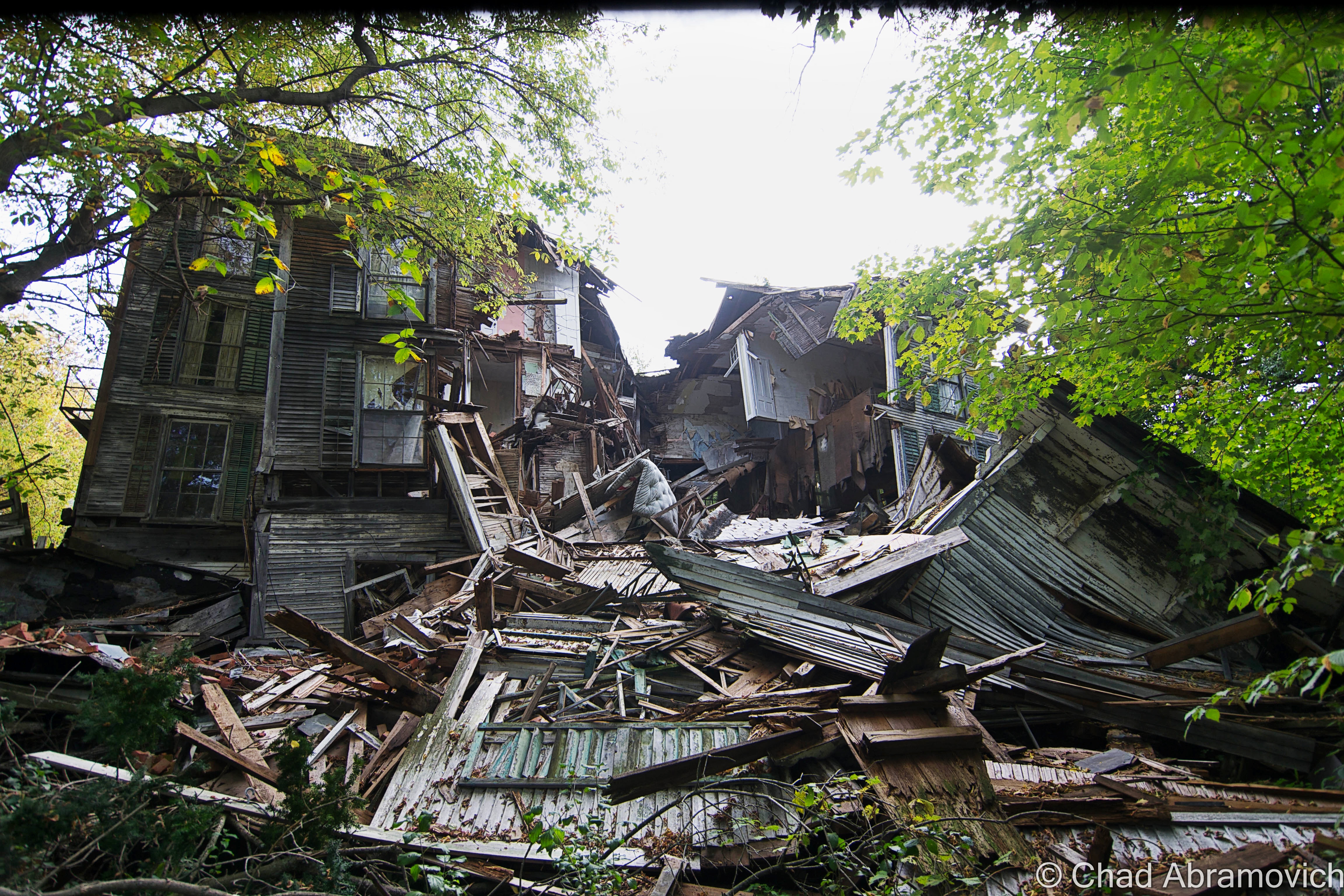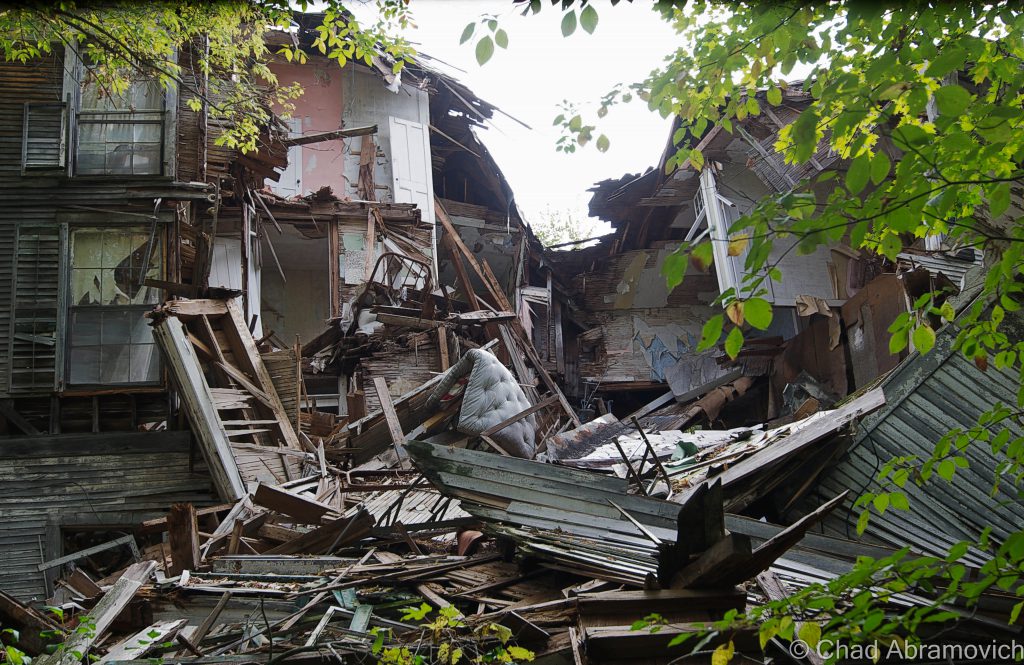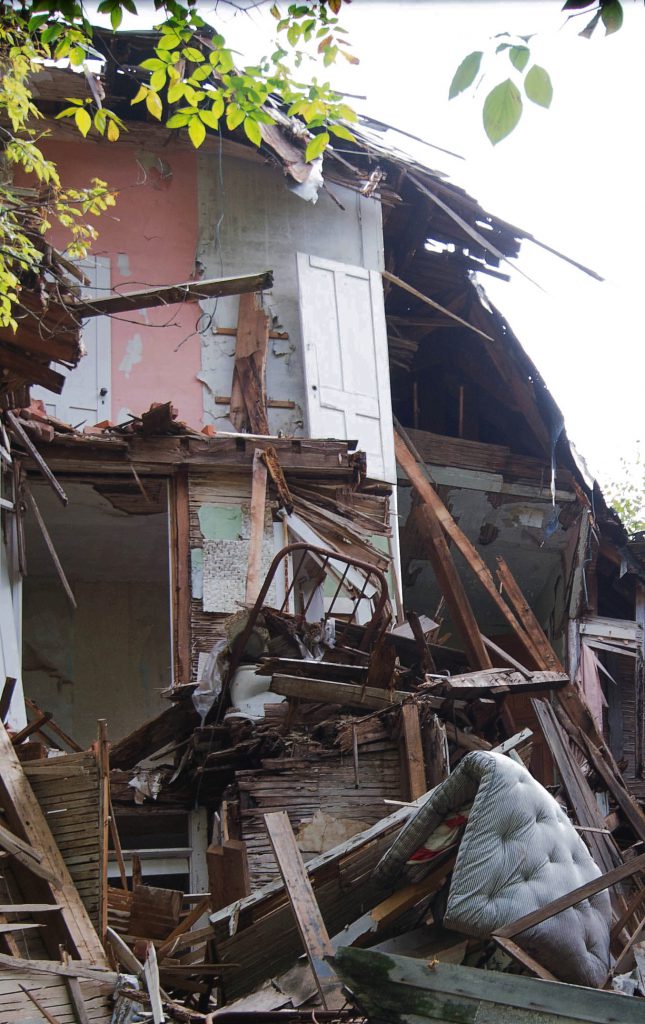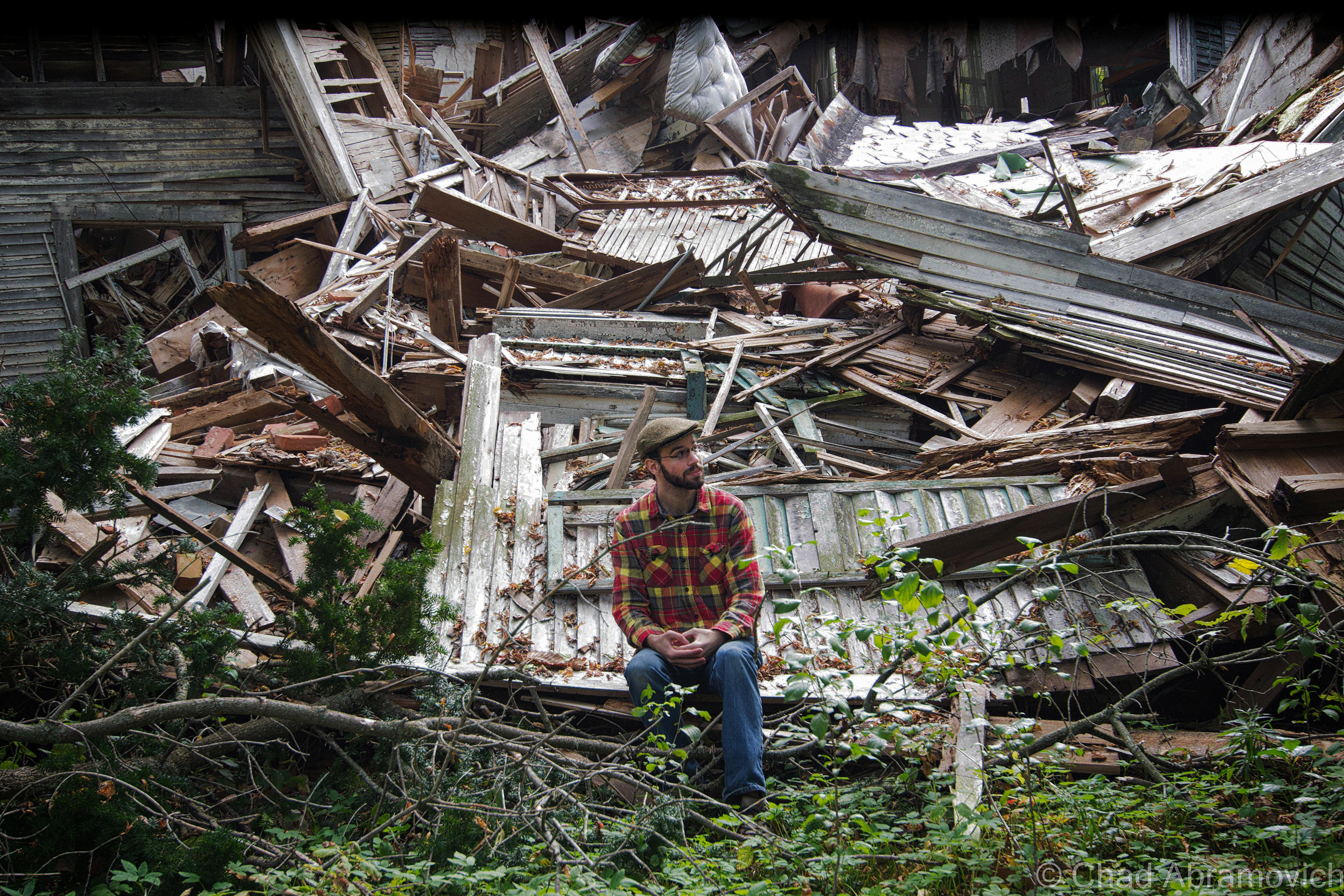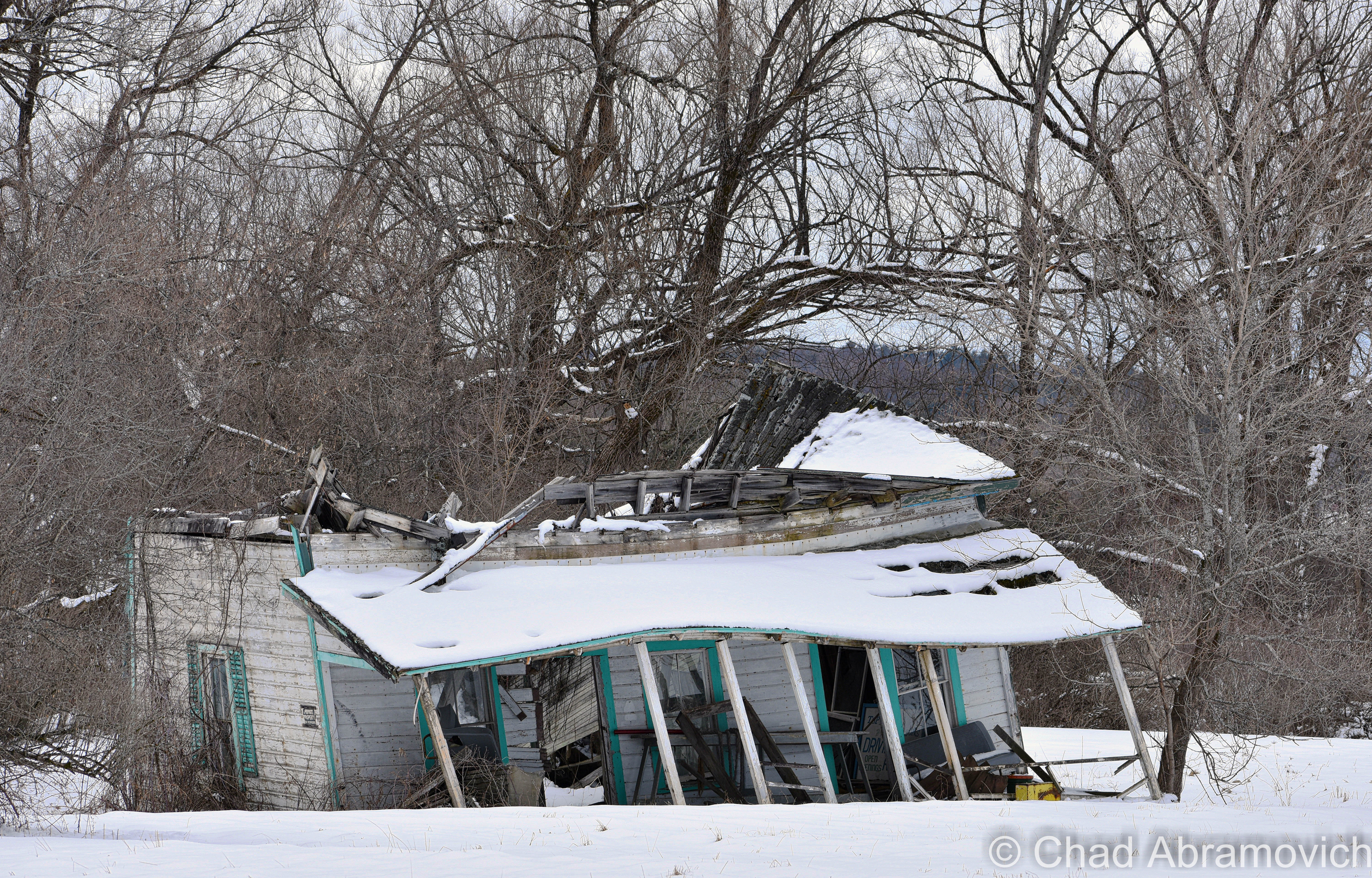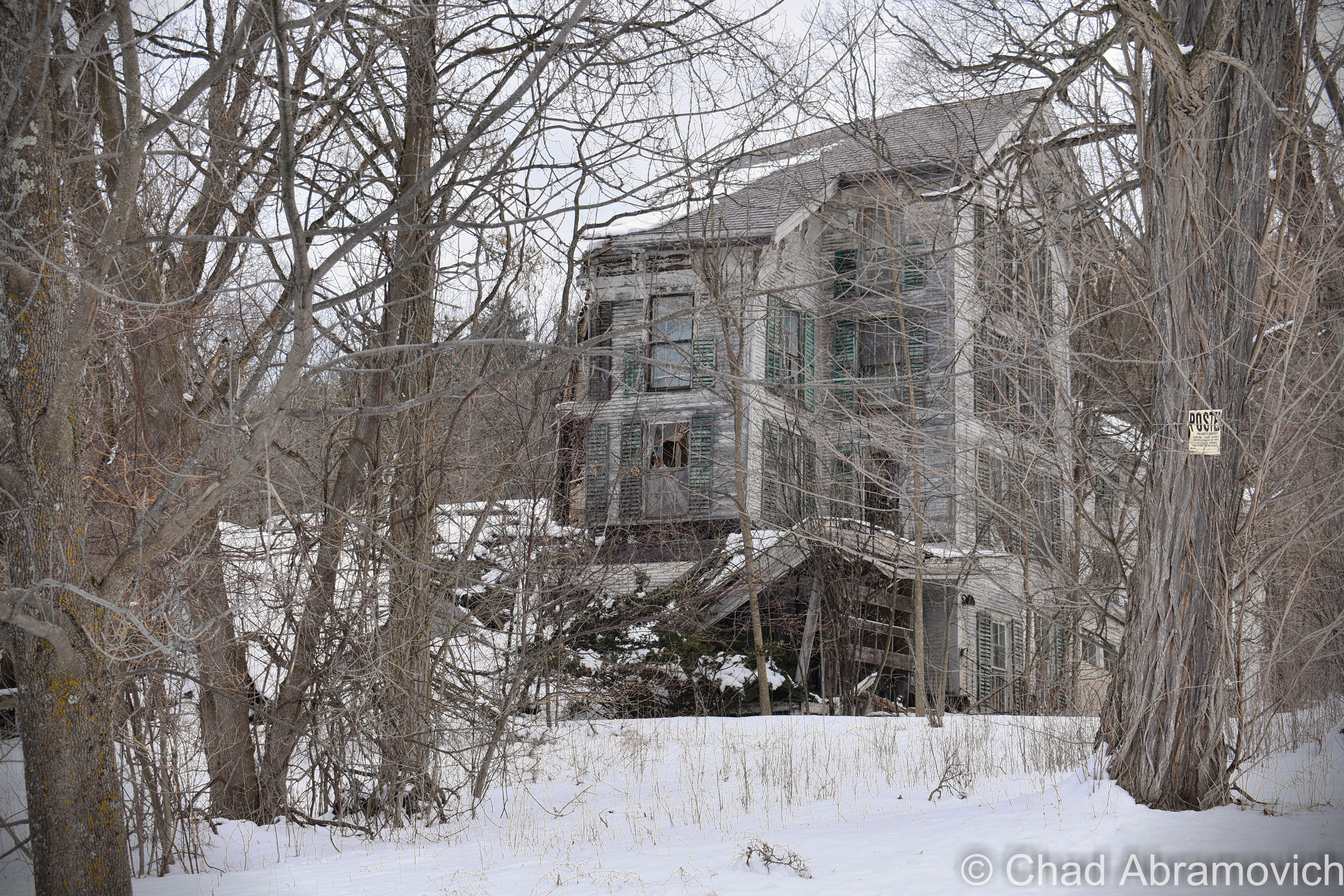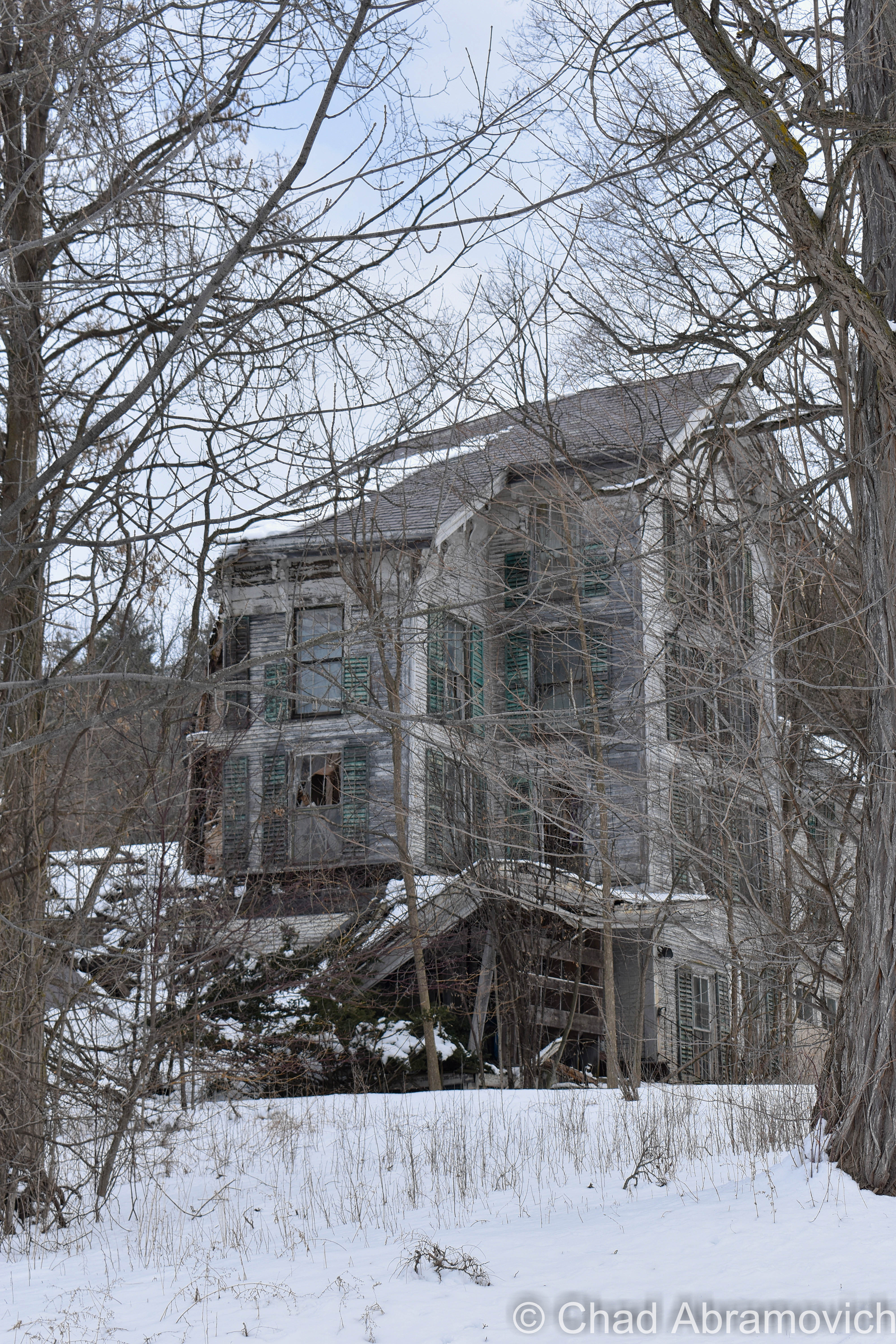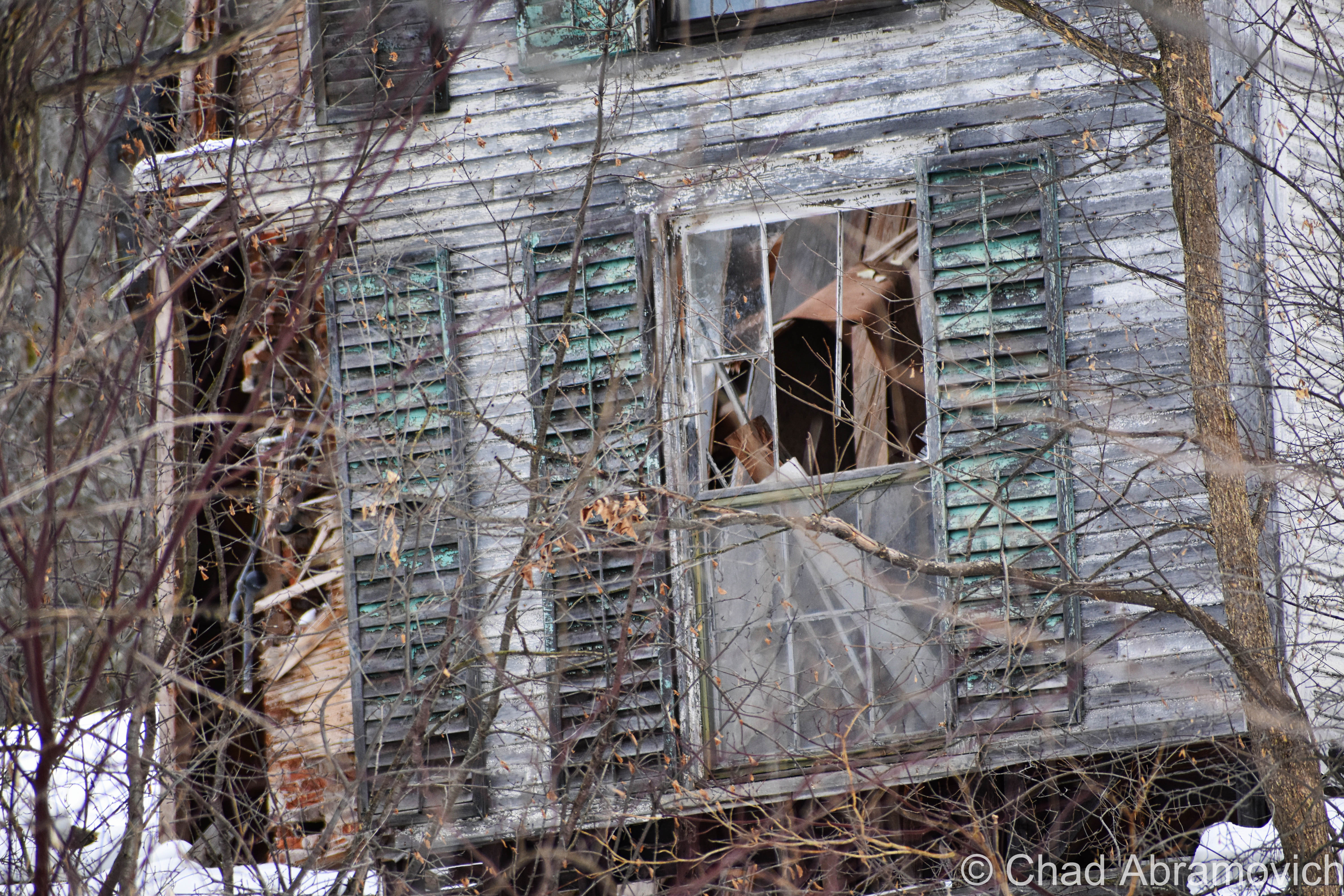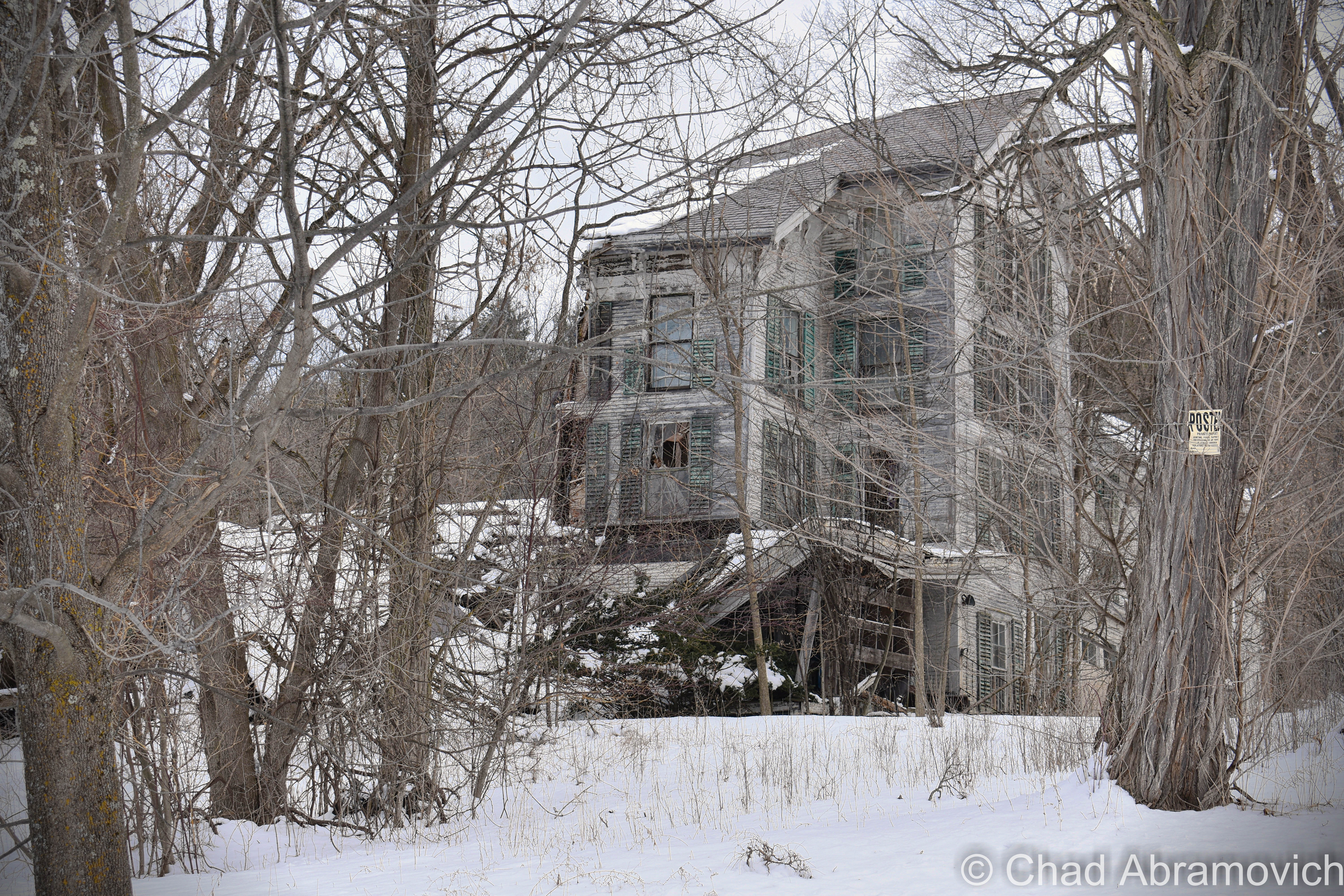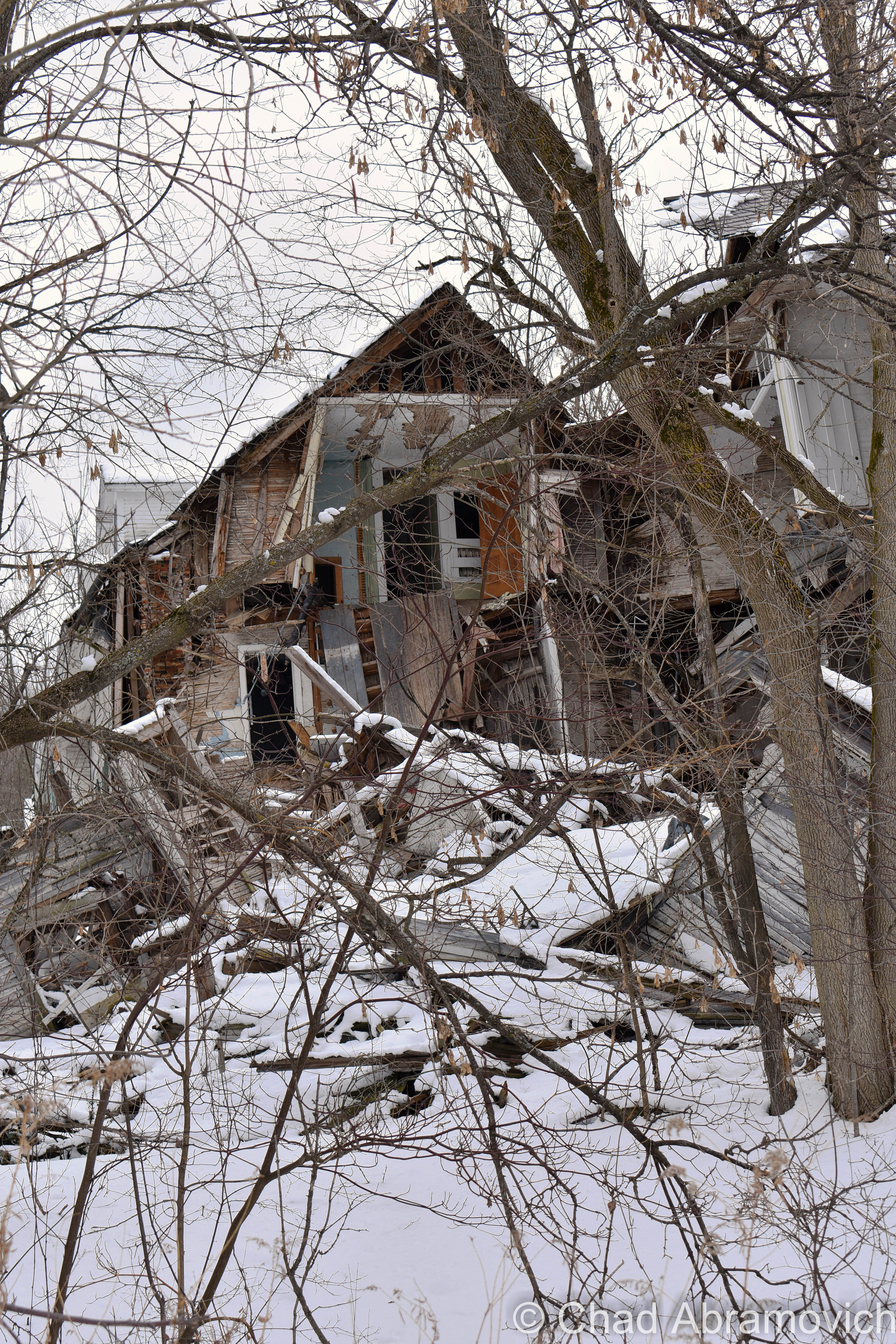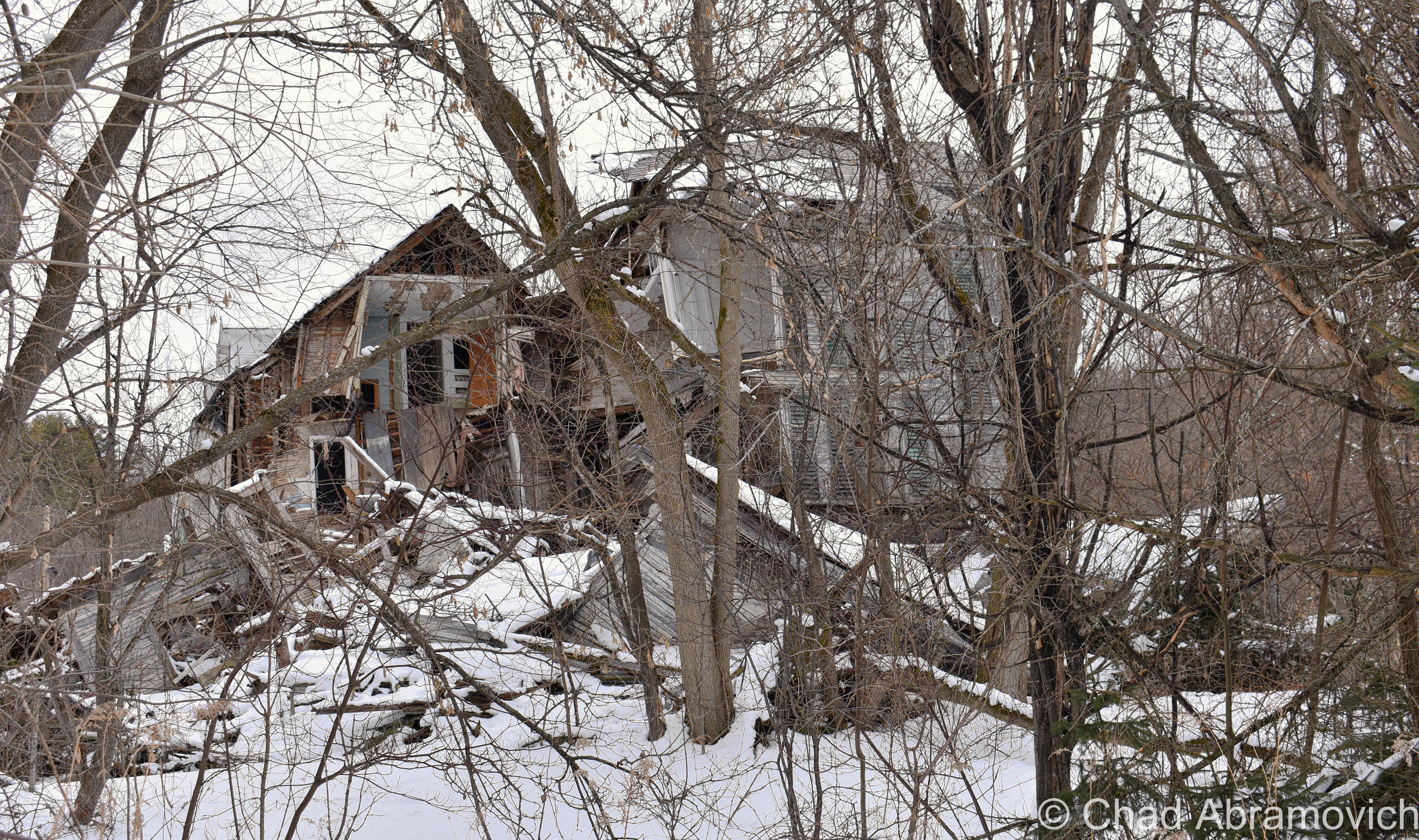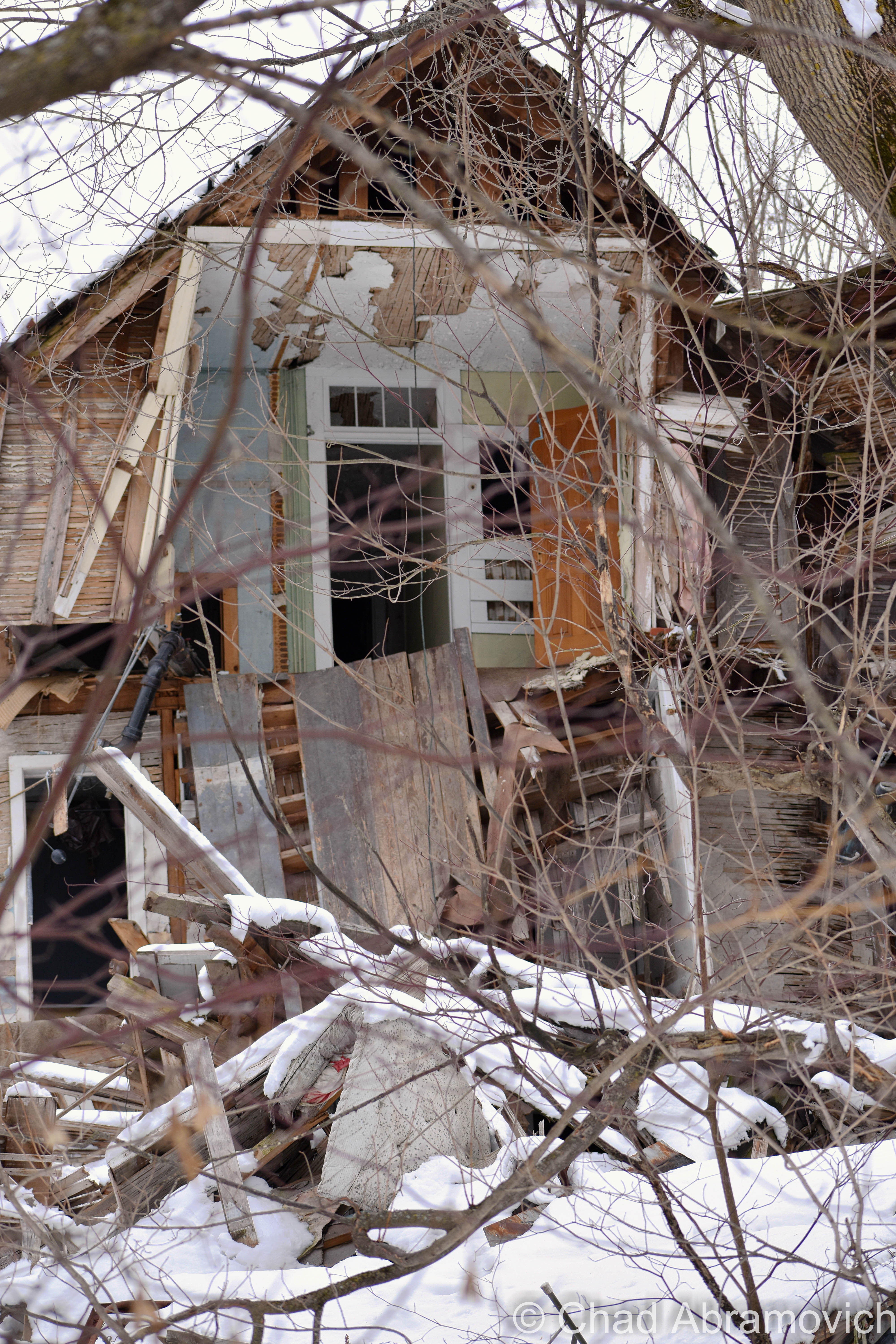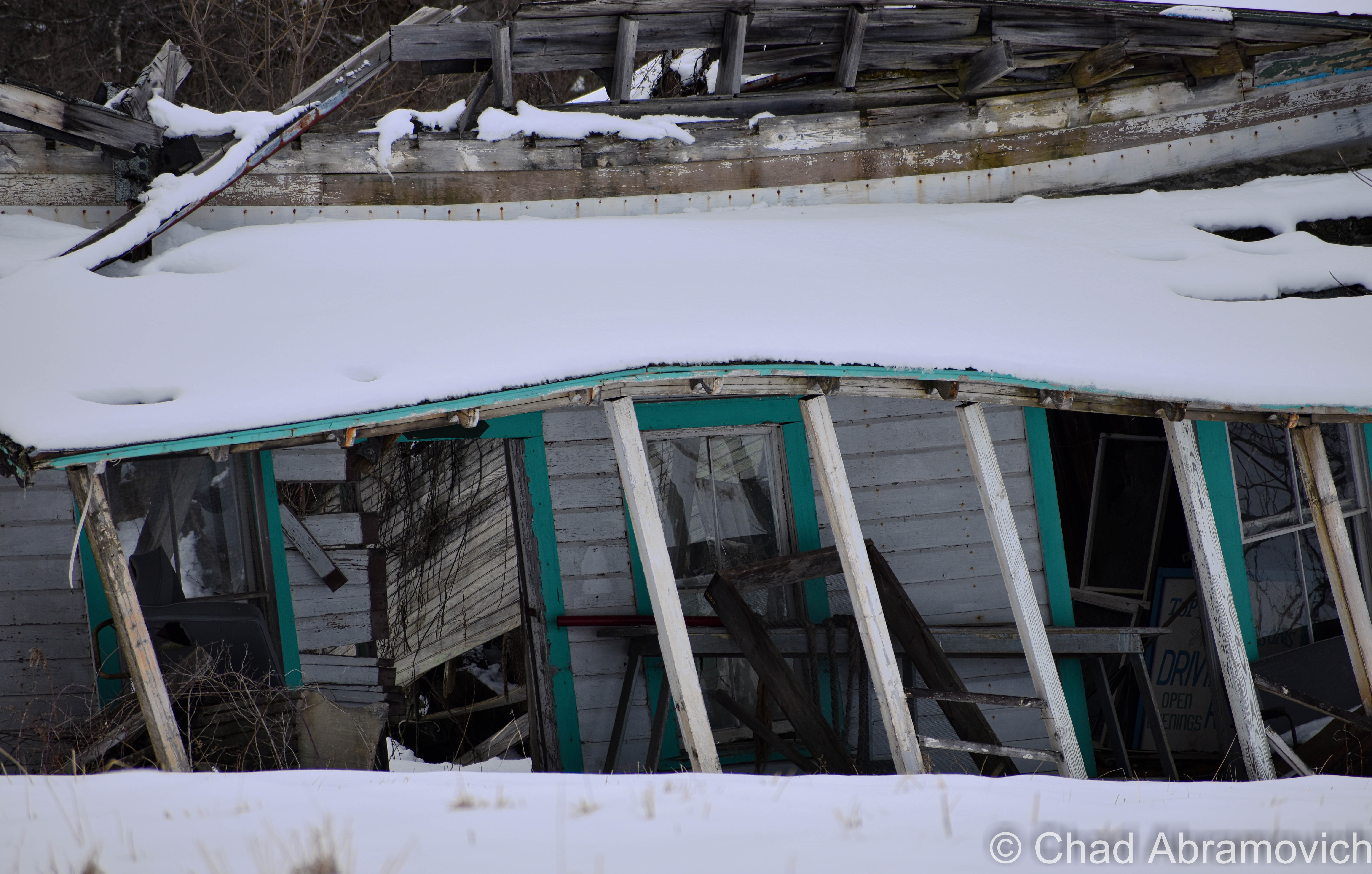It was a hazy July afternoon and the sun was shining of the hood of my friend’s Dodge as we parked. Within minutes, I was sweating through my t-shirt. In front of me was the century and a half old, abandoned brick academy that I had been waiting for about a year to get inside of. And it looked like I wasn’t the only visitor. The lawn was filled with people wearing hardhats, trailers, and extension cords. I started to feel awkward, standing by the truck, trying to not make eye contact with the people who were making it with me.
Thankfully, Chance Benedict pulled into the parking lot, turning down my increasing feeling of being out of place. Chance is the principal of the Bakersfield school district, and through about a years worth of email back and forths, was kind enough to open up the building for me and give me a guided tour.
Brigham Academy is in the tiny 4-way intersection town of Bakersfield, halfway between “the dairy capital of the world” – Enosburg Falls, and the ski village of Jeffersonville. I discovered the academy by accident when I was passing along Bakersfield’s main drag, which is state route 108, and saw the dignified brick edifice that was more visible in mud season when the line of sight is increased thanks to the bare trees. Driving down relevantly named academy lane, I got a closer look at the place, and realized that it was abandoned – the distinctive brick building in a state of slow burning decay.
Some of the windows were broken, the white painted front doors are showing signs of gray decay and the brickwork is beginning to crack, loosen and tumble in a few places. The front steps have been removed in some areas and the all the doors are padlocked closed. Geometry draws your eyes up to the central clock tower above your head, it’s unique wooden face frozen the exact time it ceased functionality years ago.
This is Brigham Academy. Its impressive architecture alludes to the equally impressive gentleman its existence was made possible by; Peter Bent Brigham. Born in Bakersfield in 1807, Brigham was a man who dedicated his life to defying the one thing that plagued him as a kid; poverty. He was forced to drop out of school in his early teenage years and find work to support his family after the death of his father. But he worked hard, and through perseverance and an amiable personality, he would become a prominent figure later in life and eventually a self-made millionaire. In between, he made a name for himself by becoming a businessman, restaurateur, real estate trader, the director of Massachusetts’s Fitchburg Railroad (the railroad that runs through the dark depths of the legend conjuring Hoosac Tunnel), the founder of the Brigham Hospital in Boston (a hospital that would become connected with Harvard), and eventually and most relevant to this post, a self-titled academy in Bakersfield. That’s quite the accomplishment list. Some days, I can barely check my email.
Because Brigham never had the chance to receive a higher education in his life, he grew up bitter about it. Now with his sizable fortune, he wanted to ensure that the children of Bakersfield would have the opportunities he never had, and donated a grand sum of $40,000 to the town of Bakersfield; $10,000 towards the building and funding of the newly established academy named in his honor.
But educational needs changed towards a movement towards all-inclusive public schooling, and enrollment dropped and finances dwindled. Eventually, the academy couldn’t afford to stay open, and in 1966, it began its function as the local public high school and deteriorated rapidly into the mid 80s, when the state of Vermont decided they didn’t want to add a lesson on the terrors of building collapses to the high school curriculum, and closed it.
Building the academy was one thing, but deciding what to do with it, especially without the cash to do such things is another puzzlement. While local opinions differentiate, the only thing that everyone can seem to agree on is that they all want the place to exist in the Bakersfield of the future.
Suggestions have been tossed around to convert the academy into a new home for the town offices or an expansion for the Bakersfield Elementary School – but the building’s deterioration and outdated amenities created setbacks of the financial kind, leaving the academy in a state of momentarily untouchable rotting limbo.
Brigham Academy is kind of a big (silent) deal to me. My abandoned hometown creamery was the first place I ever explored, thanks to its convenience, and Hyde Manor was a flicker that burned my desires, but the academy was the first place I sought out to explore legally, with me going through the rounds of contact, permission and scheduling. It happened during a change in my life, after I had left college, where I just didn’t dig my old scene anymore, and began to drift away towards exploration.
Chance fiddled with the padlock on the front doors and as they swung open, an immediate change in atmosphere was noticed. The sultry July day outside gave way to a more dank and musty smell of the academy’s interior. The two of us then stepped up a three-foot brick rise up onto the first floor. The front stairs had to be removed because structural and foundation issues had eroded them to a dangerous point of potential lawsuit-ness.
I came to the academy with no expectations, and my first impression pleasantly reassured me that it was worth the persistence. The massive building contained much original details with exceedingly cluttered halls and lurid pastel colored walls and their crumbling lead painted remains blazed in summer heat. To my right, there was a door, which I decided would be my first area I would venture too. I slipped through and discovered a fantastic feature of the school, a unique sunken basketball court from 1904, the tired wooden floors were horribly warped and crooked, with the thin and fading court lines still visible from the wraparound second-floor mezzanine lined with windows protected by lattice/mesh screens above, just in case of wayward basketballs or rowdy spectators.
The basement area, which contained the locker rooms was full of mold and pitch black due to no window access or working electricity. The dank and dark ambiance was definitely creepy down there. The principle joked that he would wait for me at the top of the stairs.
There is apparently a spook story about this particular part of the academy, that involves disembodied sounds of basketball games in play in the empty court that manifest themselves at any time of the day or night. A janitor even reported seeing a basketball bounce itself across the court! In other parts of the building, furniture is said to rearrange itself, cold air wafts from nowhere, and doors open by themselves. What was going on here? Years ago, a visiting psychic claimed that the old building was full of playful native American spirits who were behind all the shenanigans.
The first floor contained some interesting relics, and was packed full of furniture and piles of years of accumulated trash which spanned over 100 years to the more recent. Classrooms had original chalkboards in them that still had chalk scribings on their surfaces from when the school was still functional. I was intrigued when I had Bakersfield residents send me messages telling me they recognized their own names, or recalled when a friend wrote something on the board.
The top floor contained an enormous theater area, with wooden stage and dull green painted walls that undulated as you walked by. The wooden floors creaked and made high lonesome sounds that filled the large space as my boots clomped down. Behind the theater sat a cluttered room of disused drama props in disarray and dust that added somewhat of a melancholic feel to the place that slipped under your skin.
The rest of the time capsule like building was quite gorgeous and we spent two hours shooting and listening to Chance’s great stories about the academy and its history. Some of the classrooms upstairs were more modernized in the 60s, and brandished ugly drop down ceilings that were in various progress of disintegration and ugly florescent lights. One room had a weird mural of a clown painted on a wall that eerily gazed with a smug yet complacent stare over the room. Original wooden desks that were awkward and rigid still sat in almost perfect rows in front of a chalkboard, their surfaces warped with years of skin oil and use, with your archetypal student graffiti carved into their surfaces.
Wondering around the academy was proving to be more oppressively hot than the outside air somehow, and by now, I was drenched in sweat that was beginning to sting my eyes.
But the best was yet to come. Hidden in a backroom behind the auditorium was a steep and narrow staircase typical of old buildings that ascended through the ceiling, to a heavy wooden trapdoor and up into the clock tower. The original bell still was perched on the rafters, covered with years of dust – the hot summer heat baked the small space.
Because of time constrictions, we only stayed about an hour inside, not nearly long enough. There was so much to see, and so little time to see it. But I felt special, and quite humbled that I was granted permission to photograph such a place, and that to my knowledge, little others have had the chance to see the inside in a few decades.
It’s a real shame that Brigham Academy is being left to fade into memory. It’s a great old building that can offer so much potential, especially in a disposable era America where new buildings are built cheaply with faux aesthetic added to disguise their overall banality. If anything, we should be preserving more Brigham Academy’s across the country.
But sadly, to save the academy, you need a vision, and you need money. So far, no such luck. Does Brigham Academy sing songs of doom or redemption? Sadly, the last memory many people of Bakersfield might have of Brigham Academy is seeing it be demolished.
An old postcard of Brigham Academy:
Brigham Academy Today (April 2015)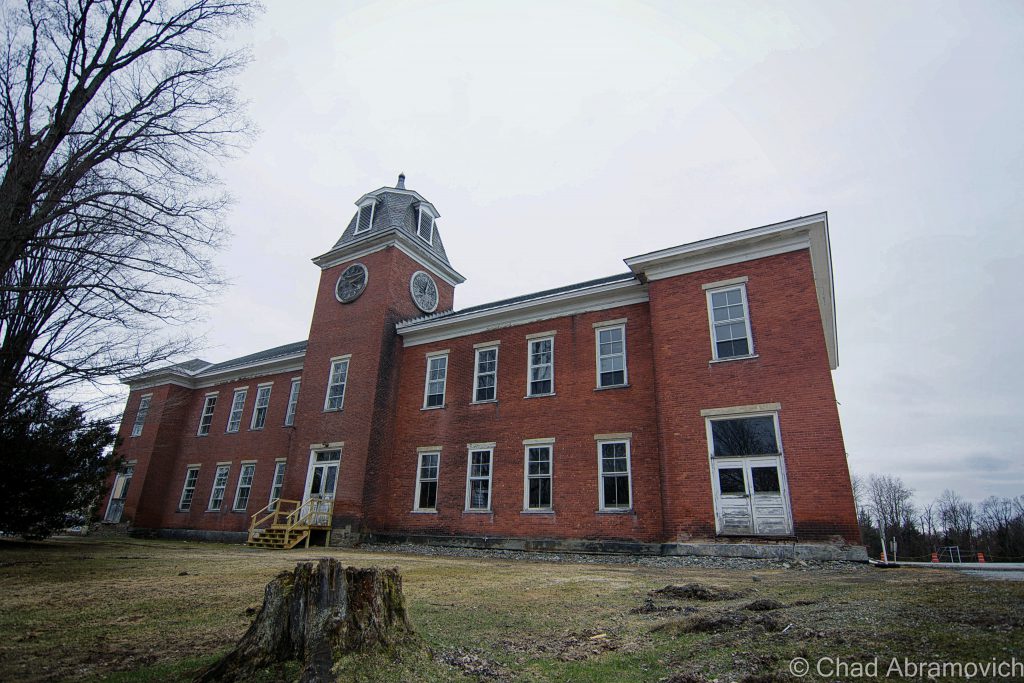
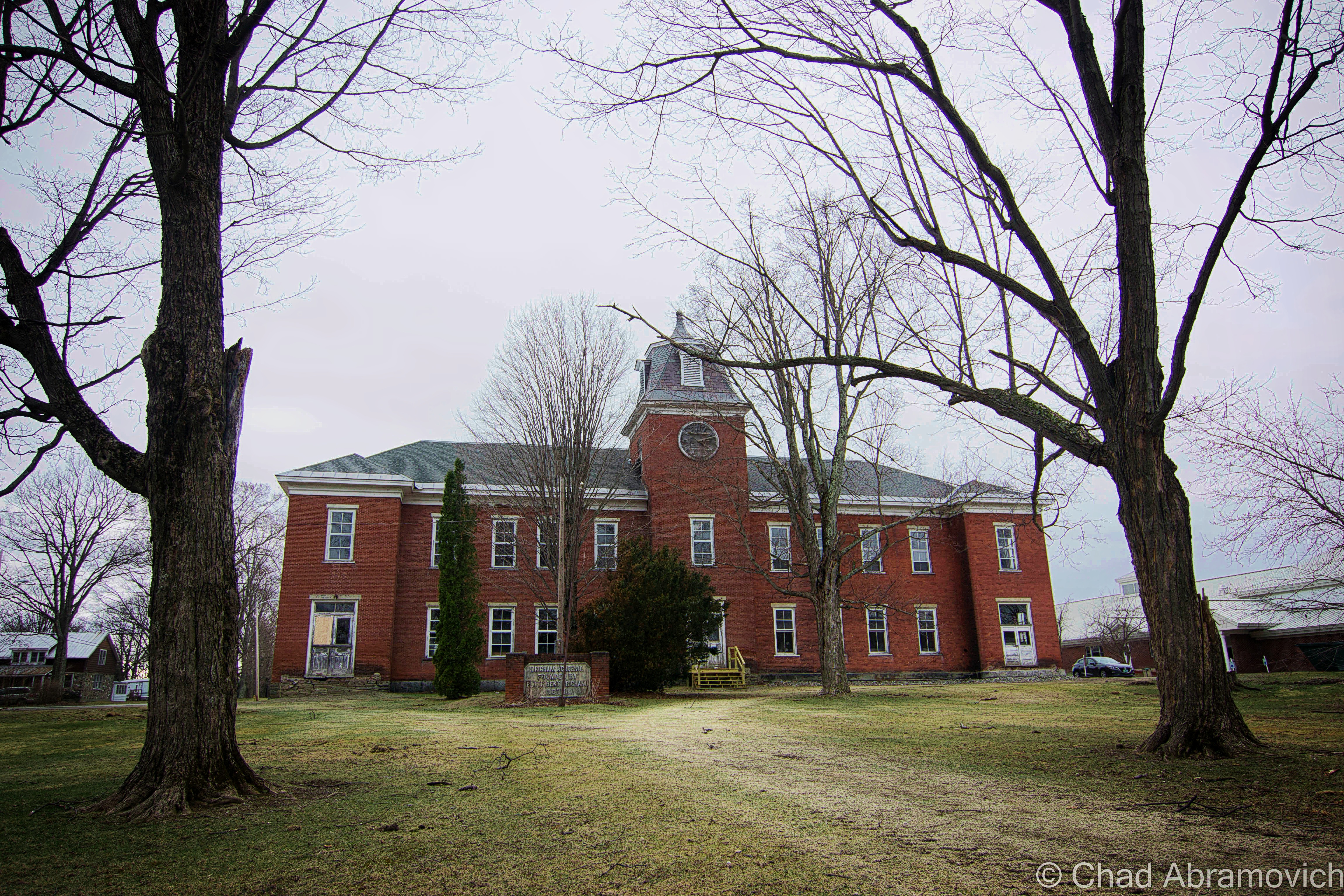
Summer 2012
—————————————————————————————————————————————–
To all of my amazing fans and supporters, I am truly grateful and humbled by all of the support and donations through out the years that have kept Obscure Vermont up and running.
As you all know I spend countless hours researching, writing, and traveling to produce and sustain this blog. Obscure Vermont is funded entirely on generous donations that you the wonderful viewers and supporters have made. Expenses range from internet fees to host the blog, to investing in research materials, to traveling expenses. Also, donations help keep me current with my photography gear, computer, and computer software so that I can deliver the best quality possible.
If you value, appreciate, and enjoy reading about my adventures please consider making a donation to my new Gofundme account or Paypal. Any donation would not only be greatly appreciated and help keep this blog going, it would also keep me doing what I love. Thank you!
Gofundme: https://www.gofundme.com/b5jp97d4


